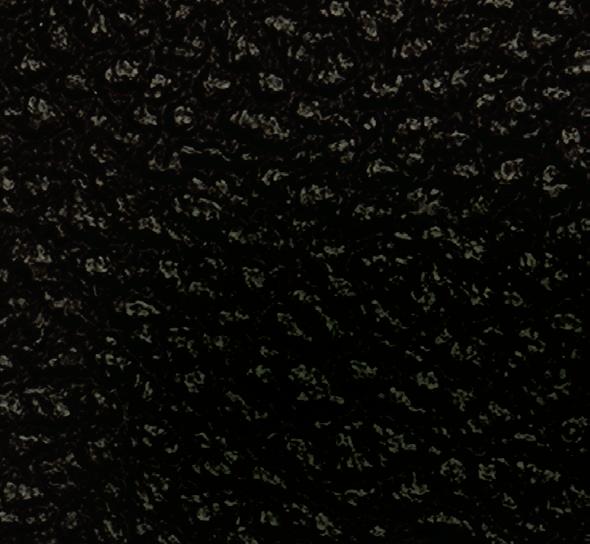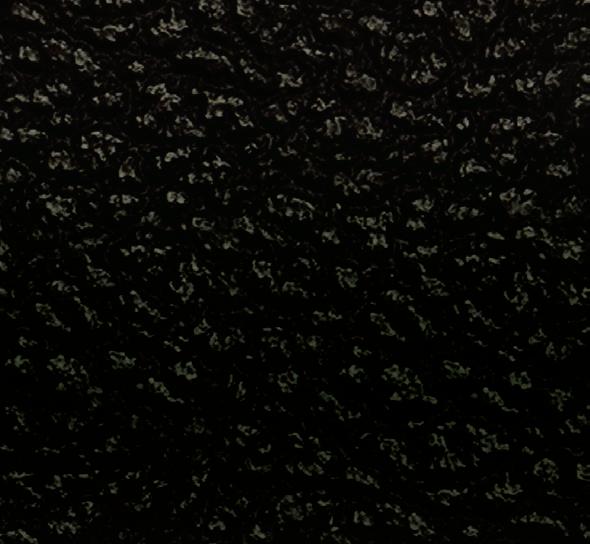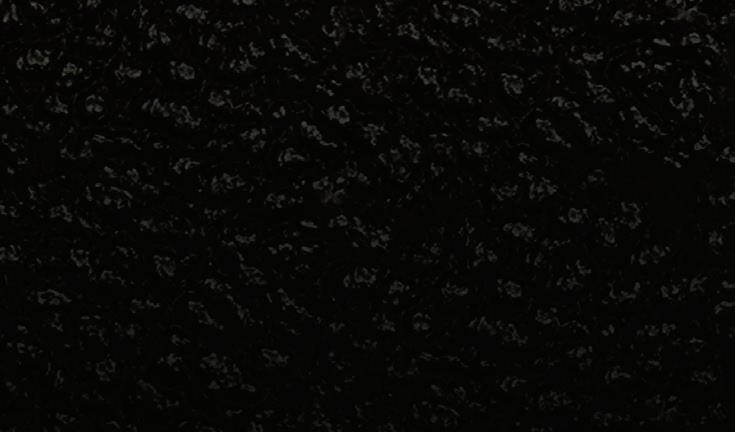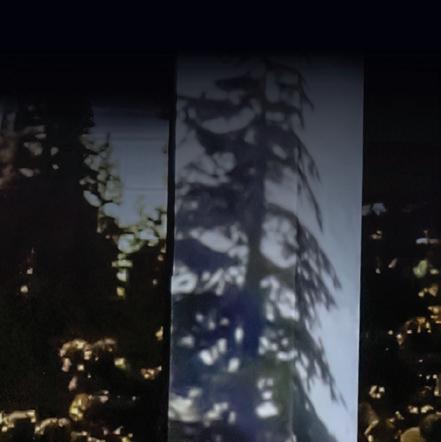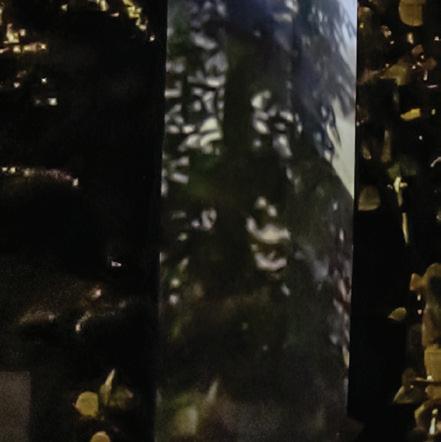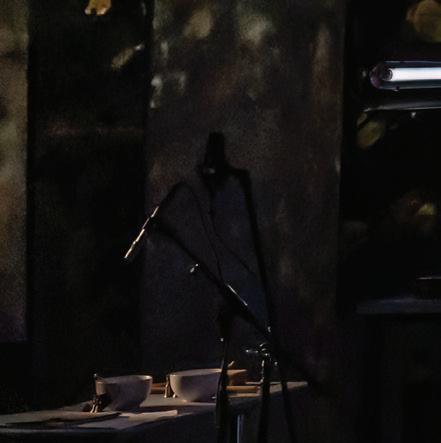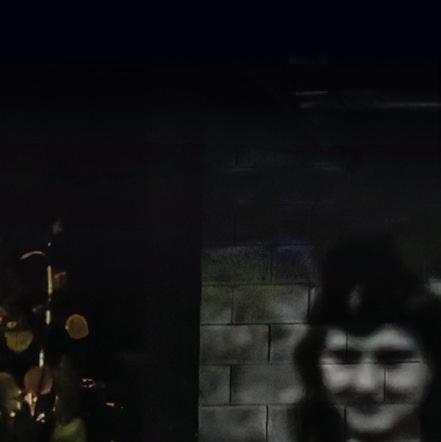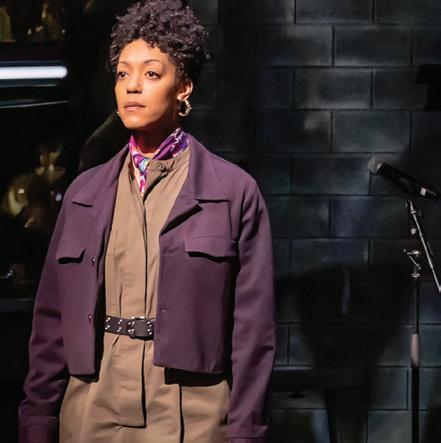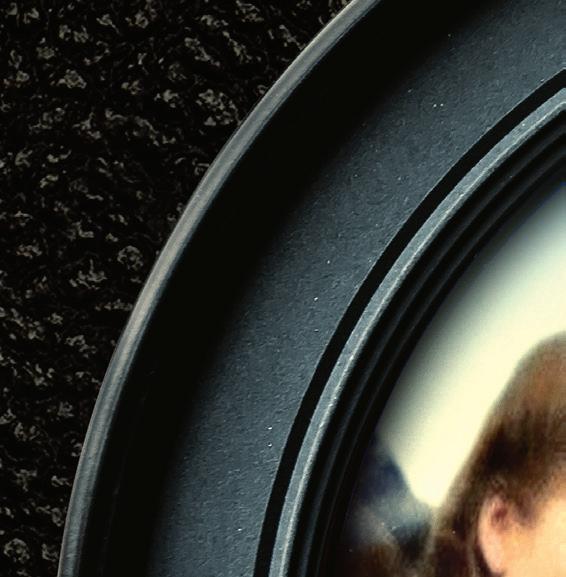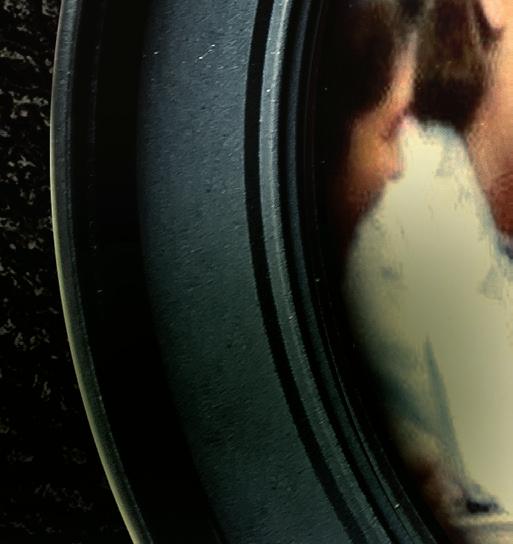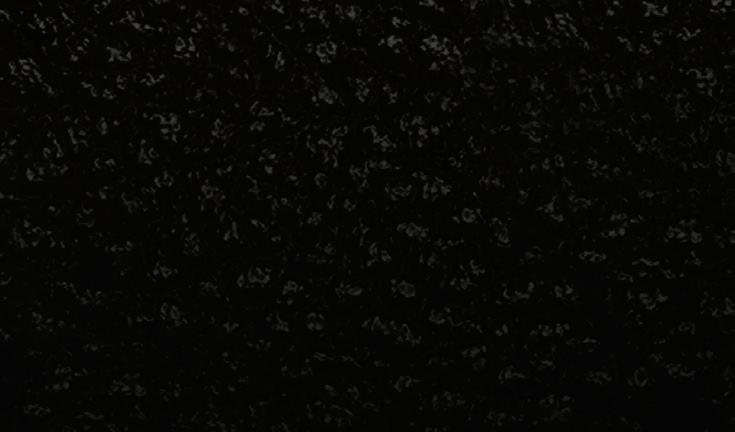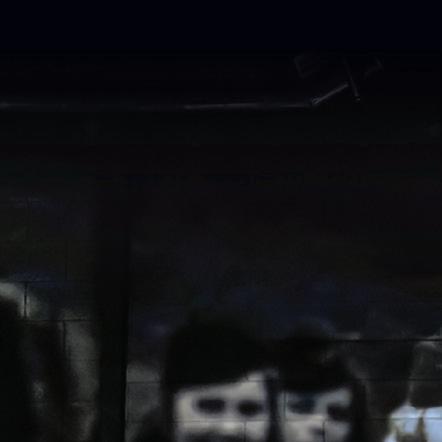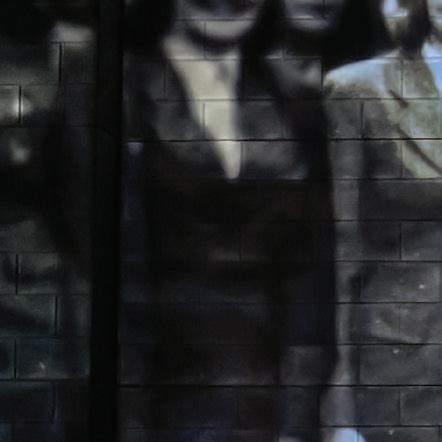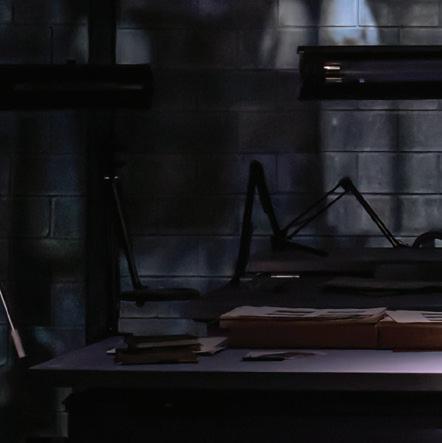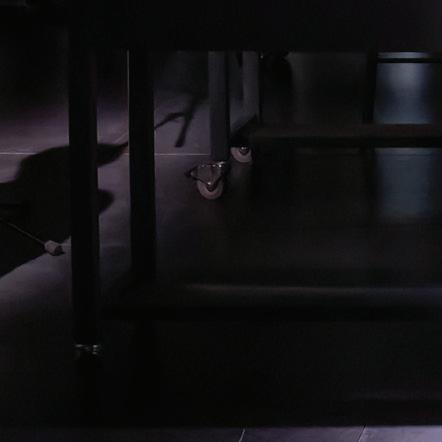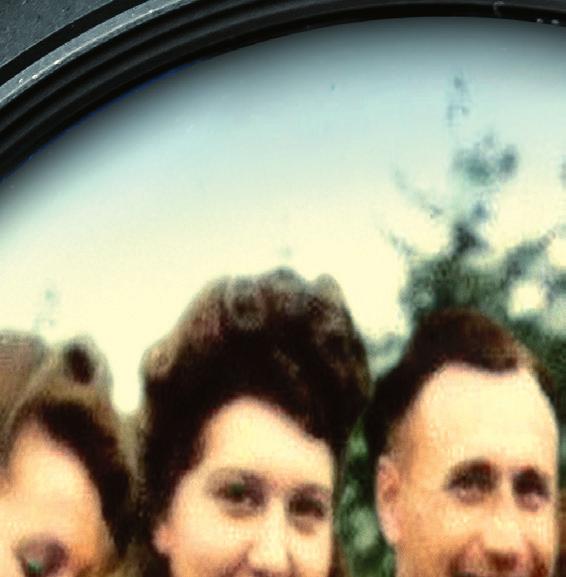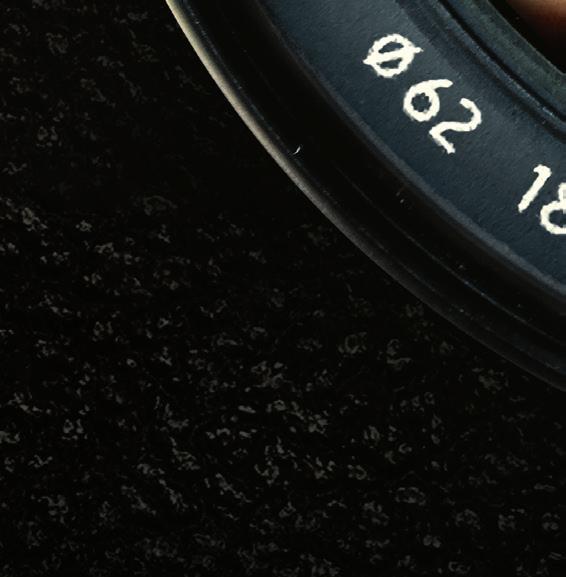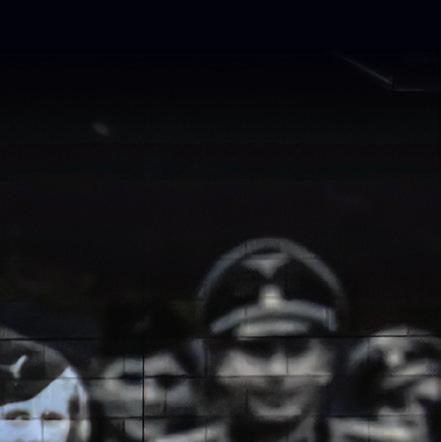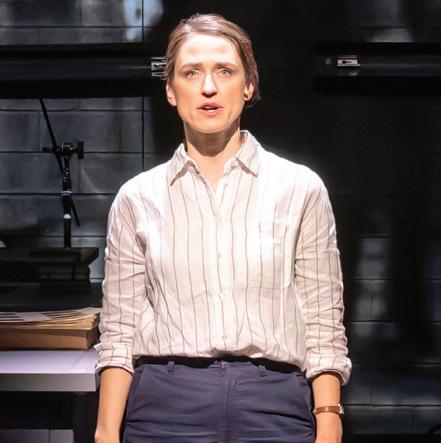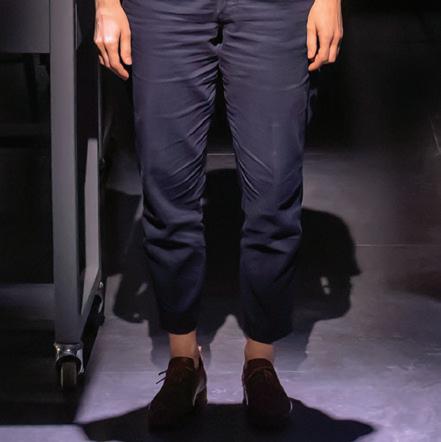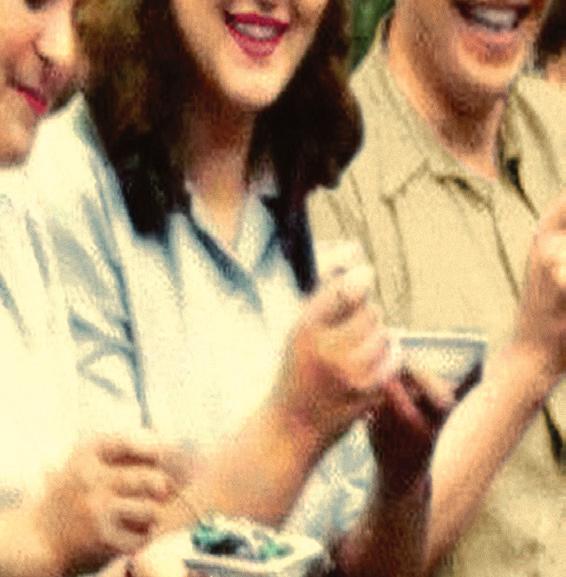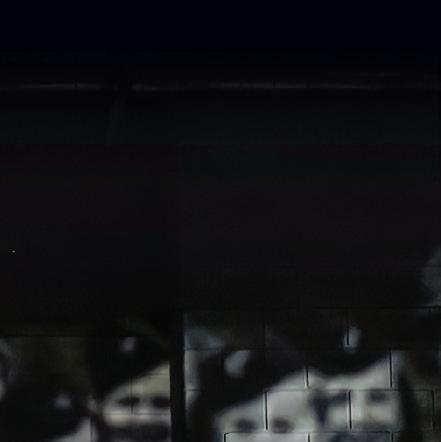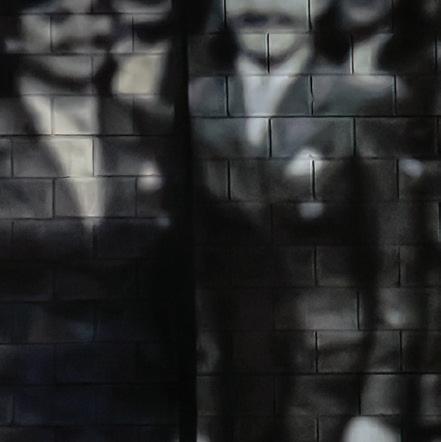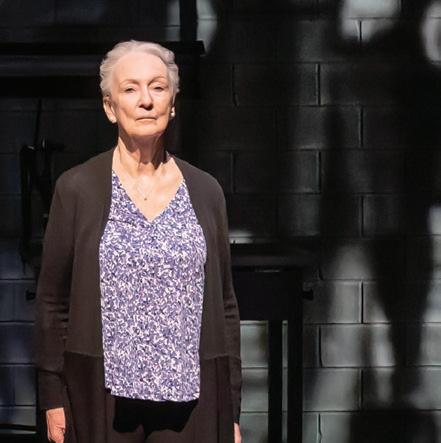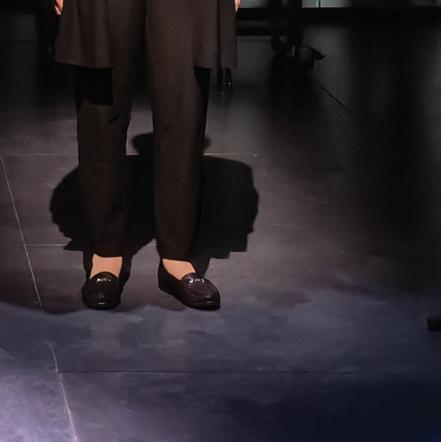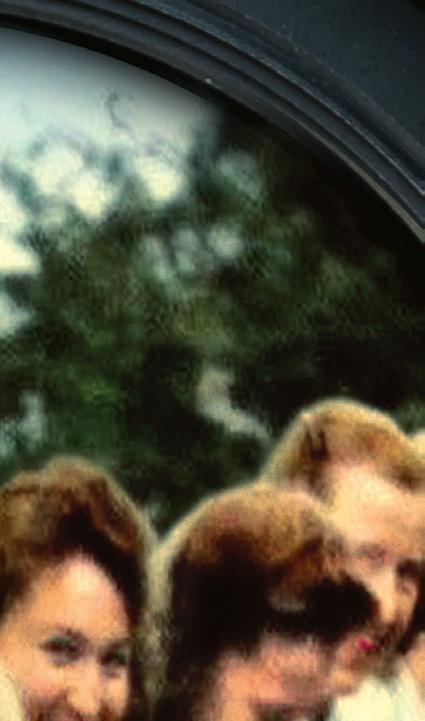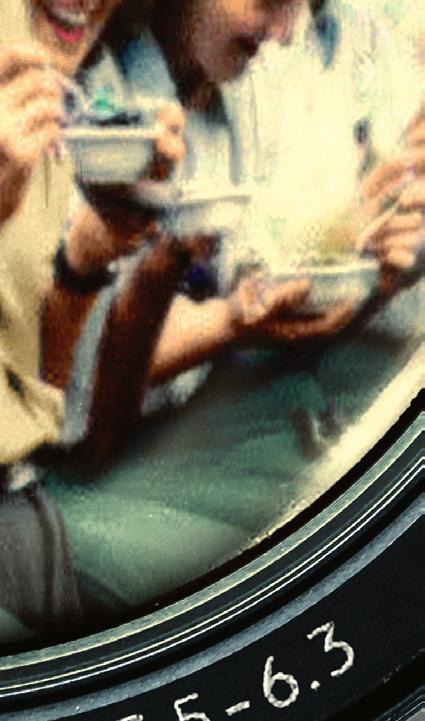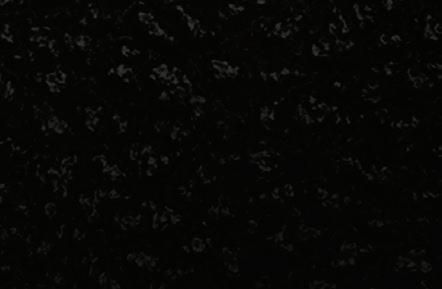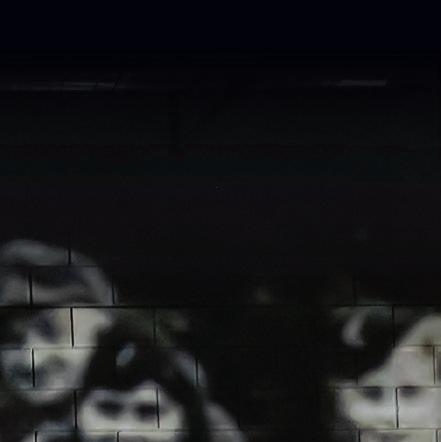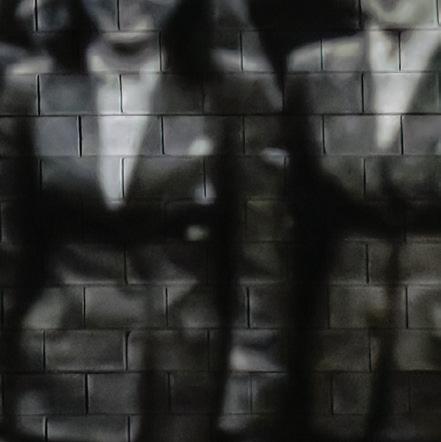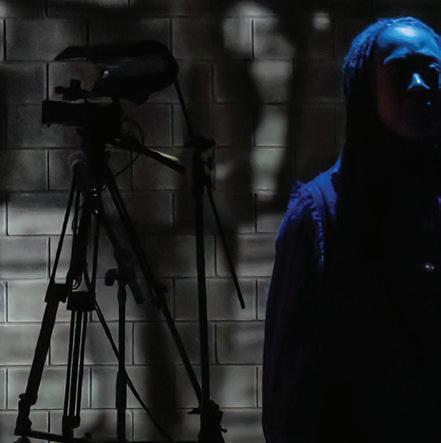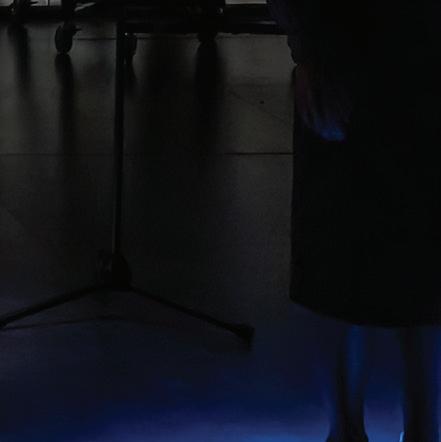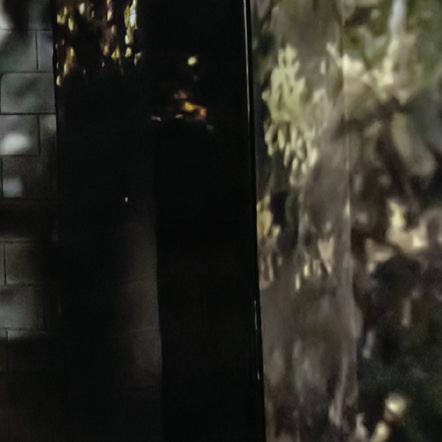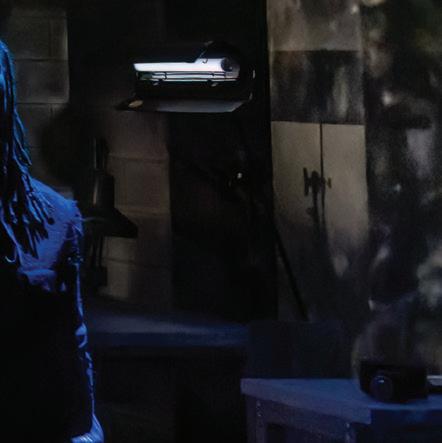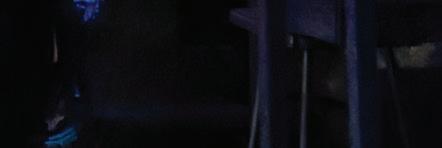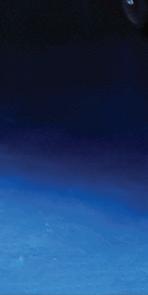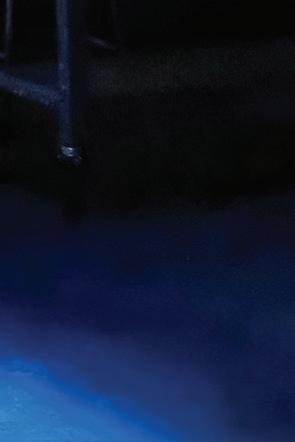
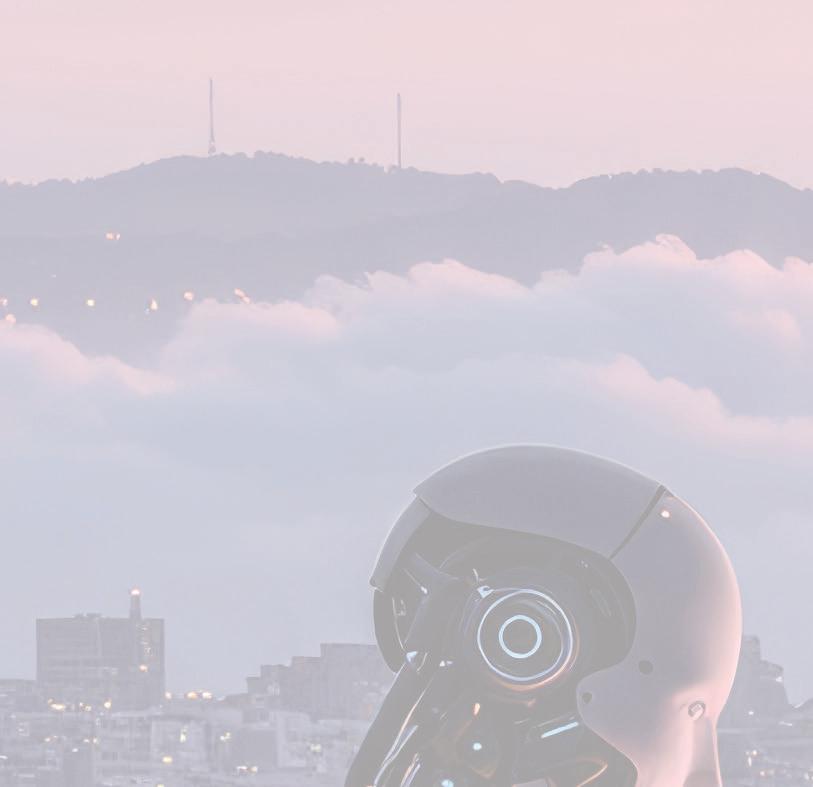
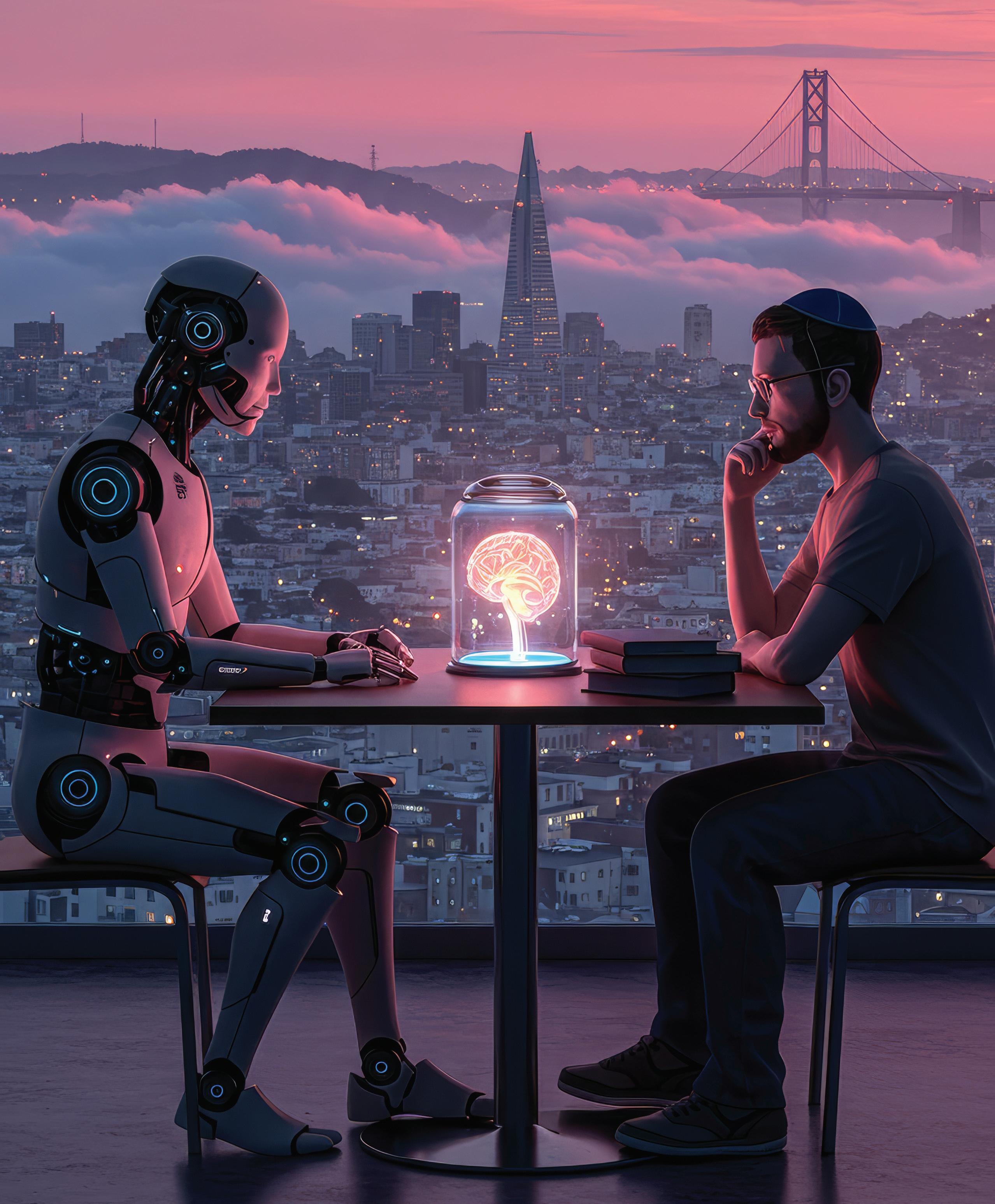
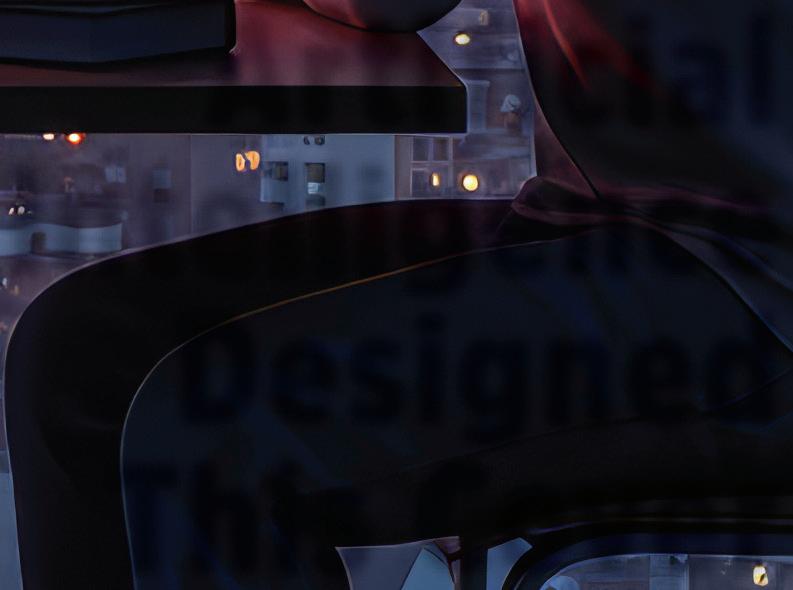







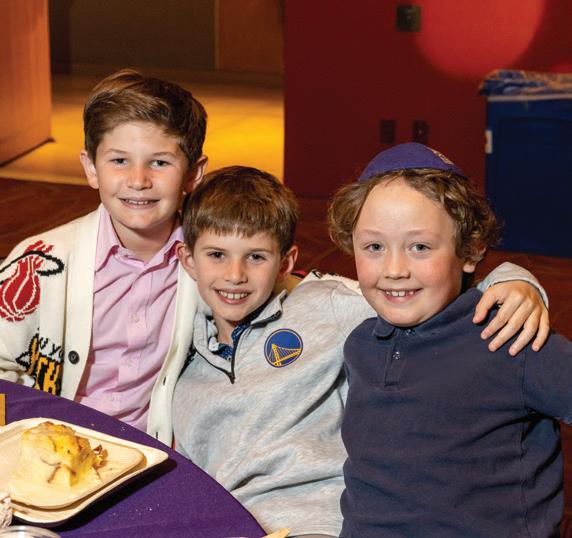
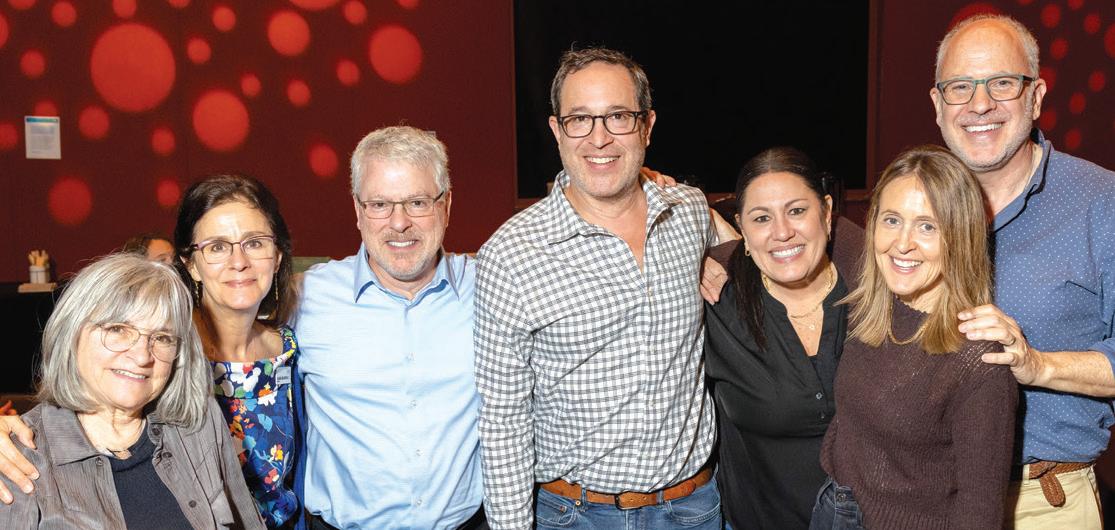

Community Partners:
Bishulim SF
Honeymoon Israel
JCCSF Camp
Jewish Baby Network
Jewish Family and Children’s Services
PJ Library
Wise Sons at the JCCSF
Supporters: Barbara Bass Bakar
Crankstart
Linda & Sandy Gallanter
The Horace W. Goldsmith Foundation
Jewish Community Federation & Endowment Fund Koret Foundation
The Koum Family Foundation
Taube Philanthropies
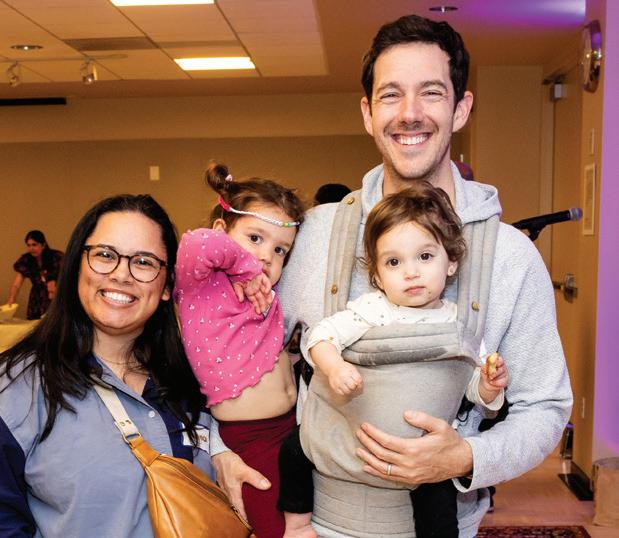
Corporate Sponsors: Armanino LLP
Bank of San Francisco
Cahill Contractors LLC
ECHO Technology Solutions, Inc.
EXOS Works, Inc.
The Olympic Club Foundation
Woodruff Sawyer
Xantrion, Inc.
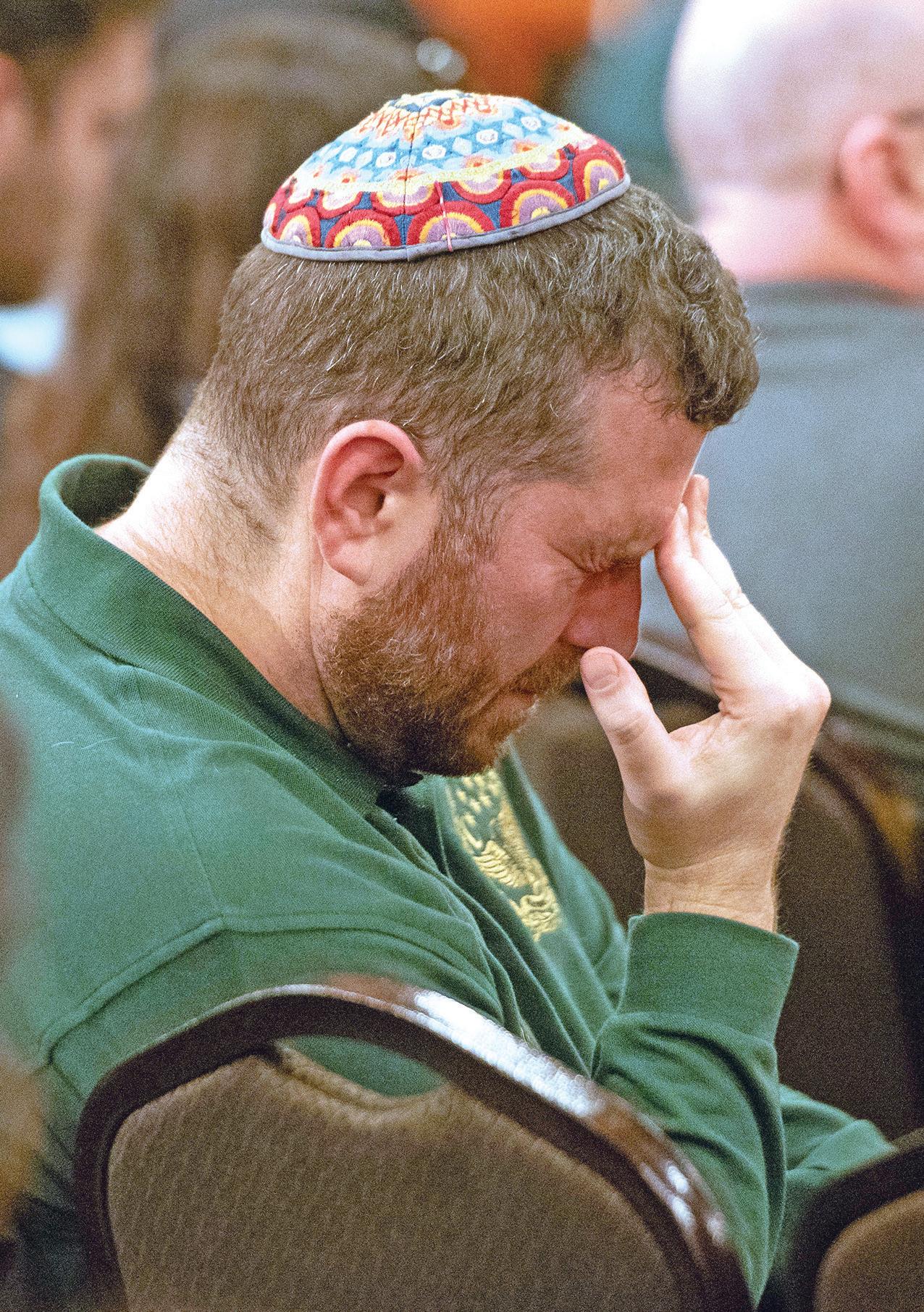

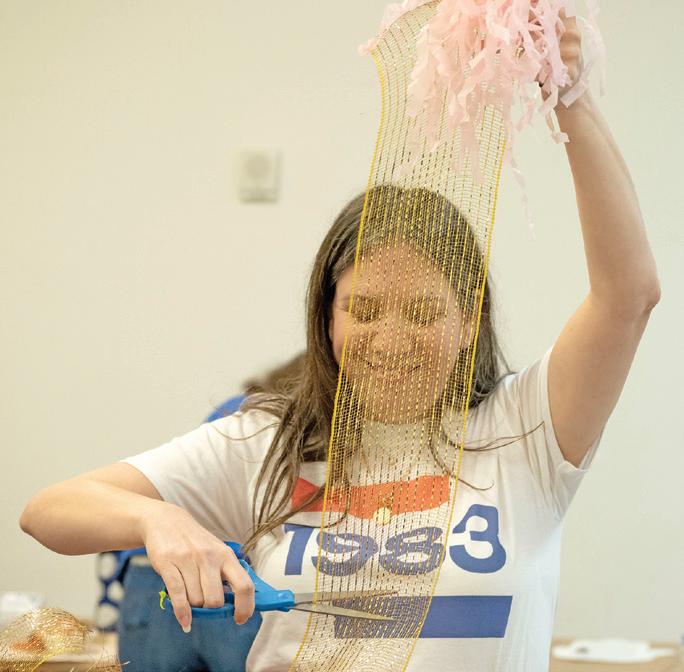
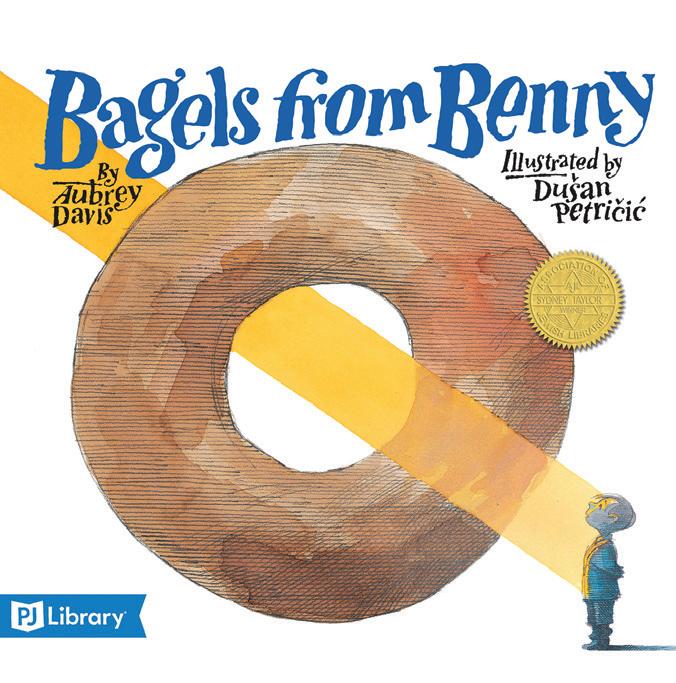
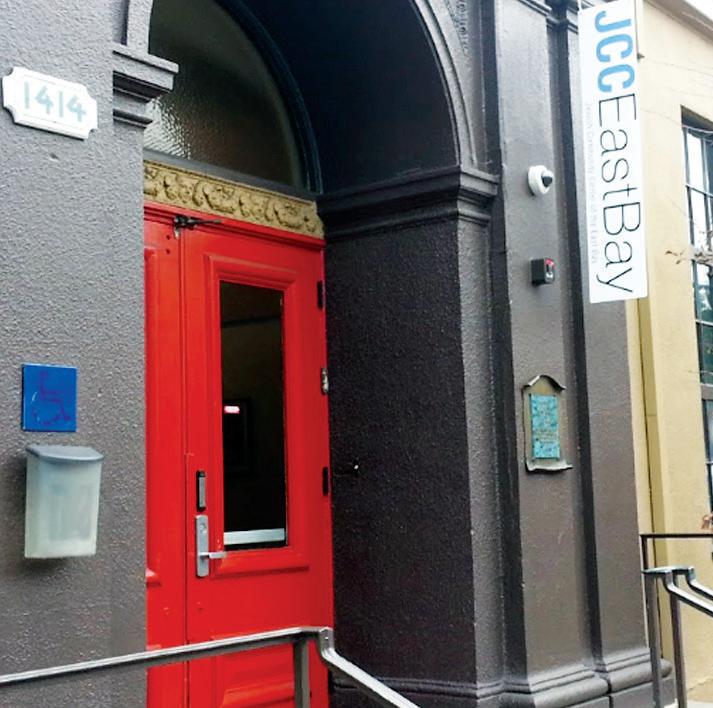
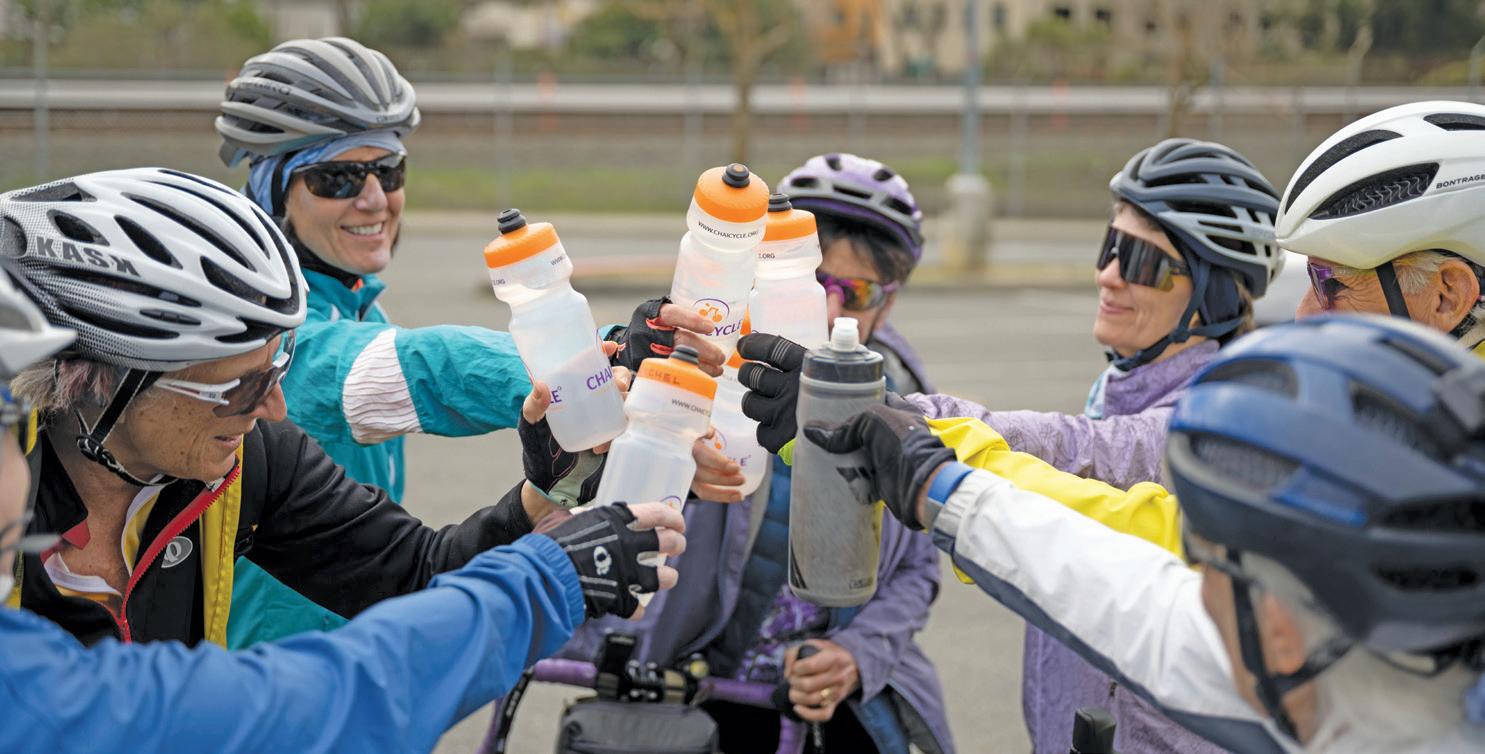
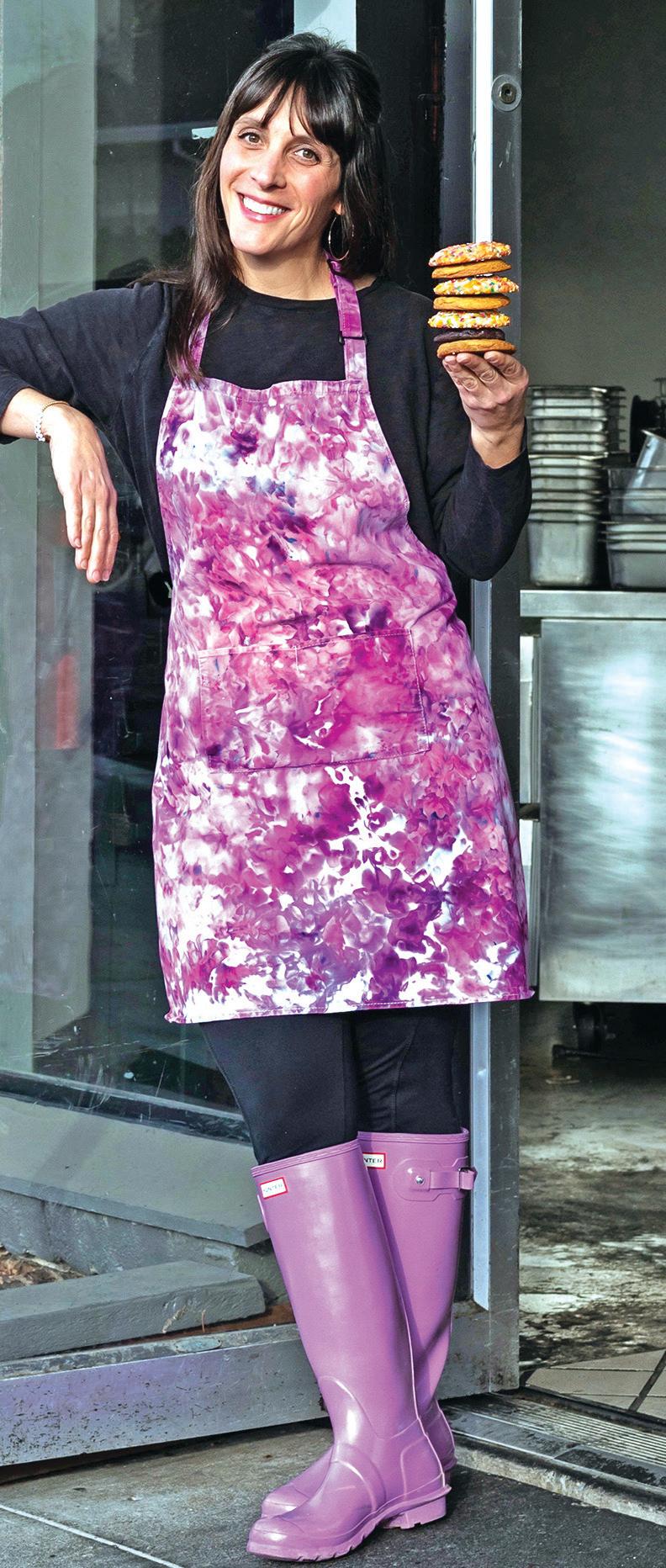
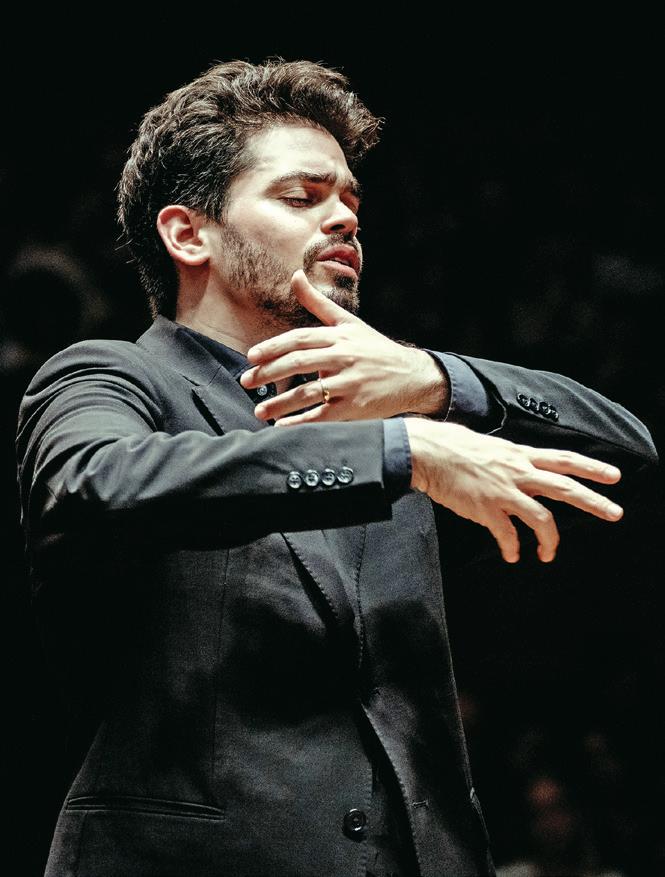










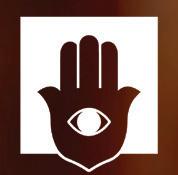
Sue Fishko , Dan Pine, Alix Wall
COLUMNISTS Howard Freedman, Karen Galatz, Janet Silver Ghent, Faith Kramer, Dr. Jerry Saliman, Micah Siva
ADVERTISING & PROMOTION
ACCOUNT EXECS Nancy Beth Cohen, Meryl Sokoler
ART & PRODUCTION
DIGITAL TECHNOLOGY DIRECTOR Antonio R. Marquez
GRAPHIC DESIGNERS Michelle Palmer, Steve Romero
BUSINESS
DEVELOPMENT DIRECTOR Allison Green
DEVELOPMENT ASSOCIATE Carrie Rice
MARKETING ASSISTANT Holley Newmark
ACCOUNTING ASSISTANT Linda Uong
TECHNOLOGY
IT SUPPORT Felipe Barrueto
BOARD OF DIRECTORS
CO-PRESIDENTS Steven Dinkelspiel, Carol Weitz
VICE PRESIDENTS Andy Rittenberg, Jerry Yanowitz
SECRETARY Patricia Rosenberg
TREASURER Jane Springwater
MEMBERS Liz Berman, Alex Bernstein, Mark W. Bernstein (imm. past president), David Cornfield, Alexandra Corvin, Rabbi Joey Felsen, Howard Fine, Inna Gartsman, Alia Wechsler Gorkin, Samantha Grant, Steve Katz, Susan Libitzky, Rabbi Deborah Newbrun, Susan Sasson, Harmon Shragge, Peter Waldman
PAST PRESIDENTS Marc Berger, Lou Haas, Jon Kaufman, Dan Leemon, Adam Noily, Lory Pilchik, William I. Schwartz

SUE FISHKOFF | CORRESPONDENT
Patrons attending two sold-out weekend performances of the Batsheva Dance Company at UC Berkeley had to run a gauntlet of anti-Israel protesters outside the venue.
Some 40 or 50 demonstrators flanked police barricades set up outside Zellerbach Hall, flying Palestinian flags and shouting anti-Israel slogans, decrying Cal’s hosting of an Israeli modern dance company they consider “ambassadors of Israeli genocide,” according to one protester’s sign.
“Intifada, intifada, long live intifada,” one organizer shouted continuously through a microphone as others chanted “shame, shame, shame” at ticket-holders lined up to enter the venue.
The protests, held before and after Batsheva’s evening performance on Feb. 22 and matinee on Feb. 23, were part of a boycott of the company’s U.S. tour organized by a group called the US Campaign for the Academic and Cultural Boycott of Israel.
“Stop Israel’s Dance of Death” was the headline on the social media call to “boycott all cultural and academic institutions funded by the ‘state’ of Israel,” adding that “as one such institution, Batsheva Dance Company is structurally complicit… in Israeli genocide, apartheid and ethnic cleansing.”
The Berkeley performances were the Tel Aviv-based company’s second stop on its fourcity tour of California and New York with its work “MOMO.”
Barricades were set up on the plaza in front of Zellerbach Hall, with a large police contingent. Before the evening performance, however, there was no barrier between protesters and those entering the very narrow opening between the steel barricades leading to the hall’s entrance, meaning that protesters could shout their messages literally into patrons’ faces.
“Zionist criminals is what you are!” one young protester shouted inches away from people lined up to enter, as he held up his middle finger. “How could you waste your money on such shit? What the f— is wrong with you? You sick Jew f—.” Most of the
protesters stood back with signs and flags, repeating whatever taunts organizers called out through bullhorns.
“Everyone has the right to their point of view, but I think they are sadly misguided,”
Oakland resident Steven Sterman told J. as he stood in the long security line. Patrons were wanded and their bags searched before they
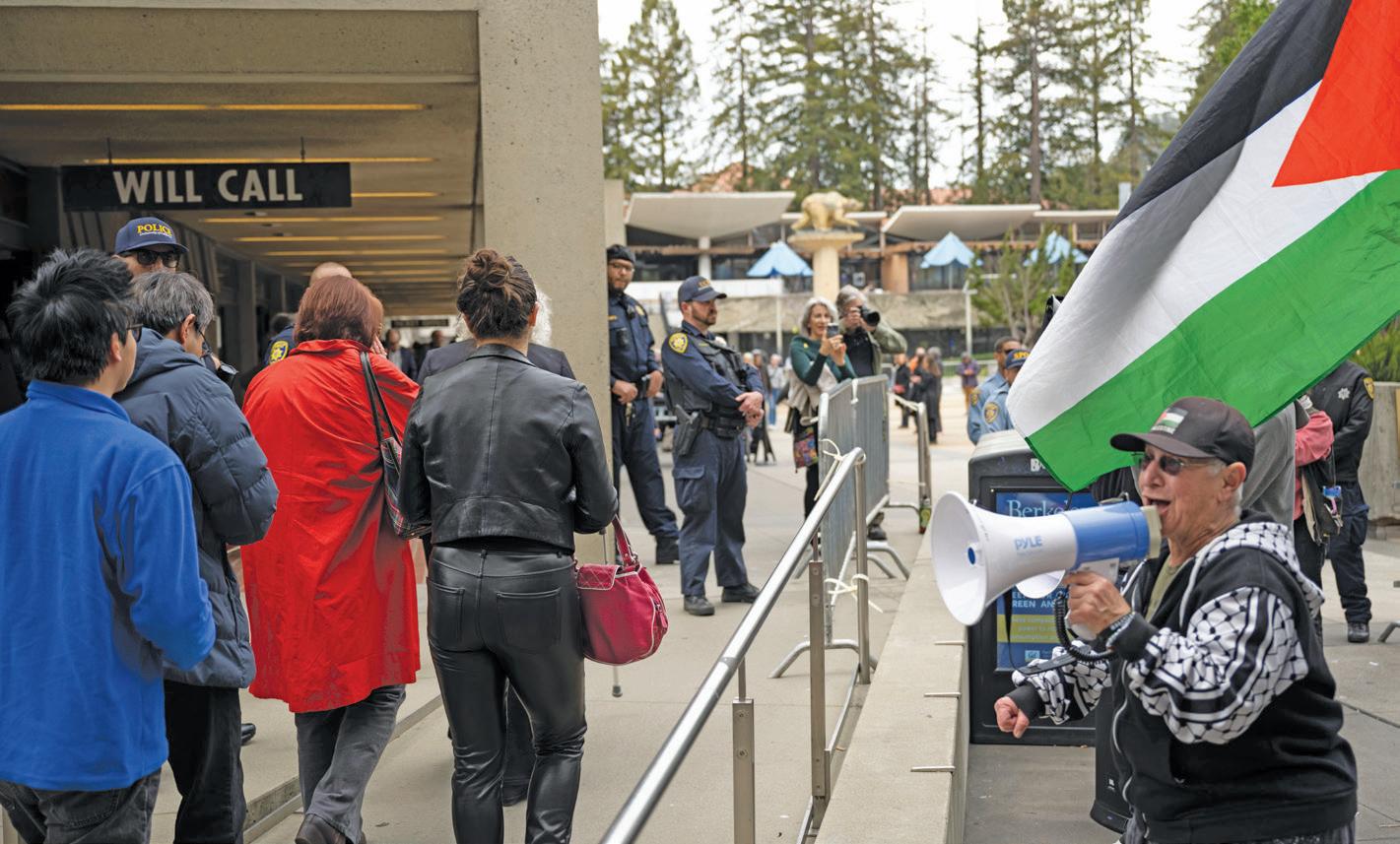
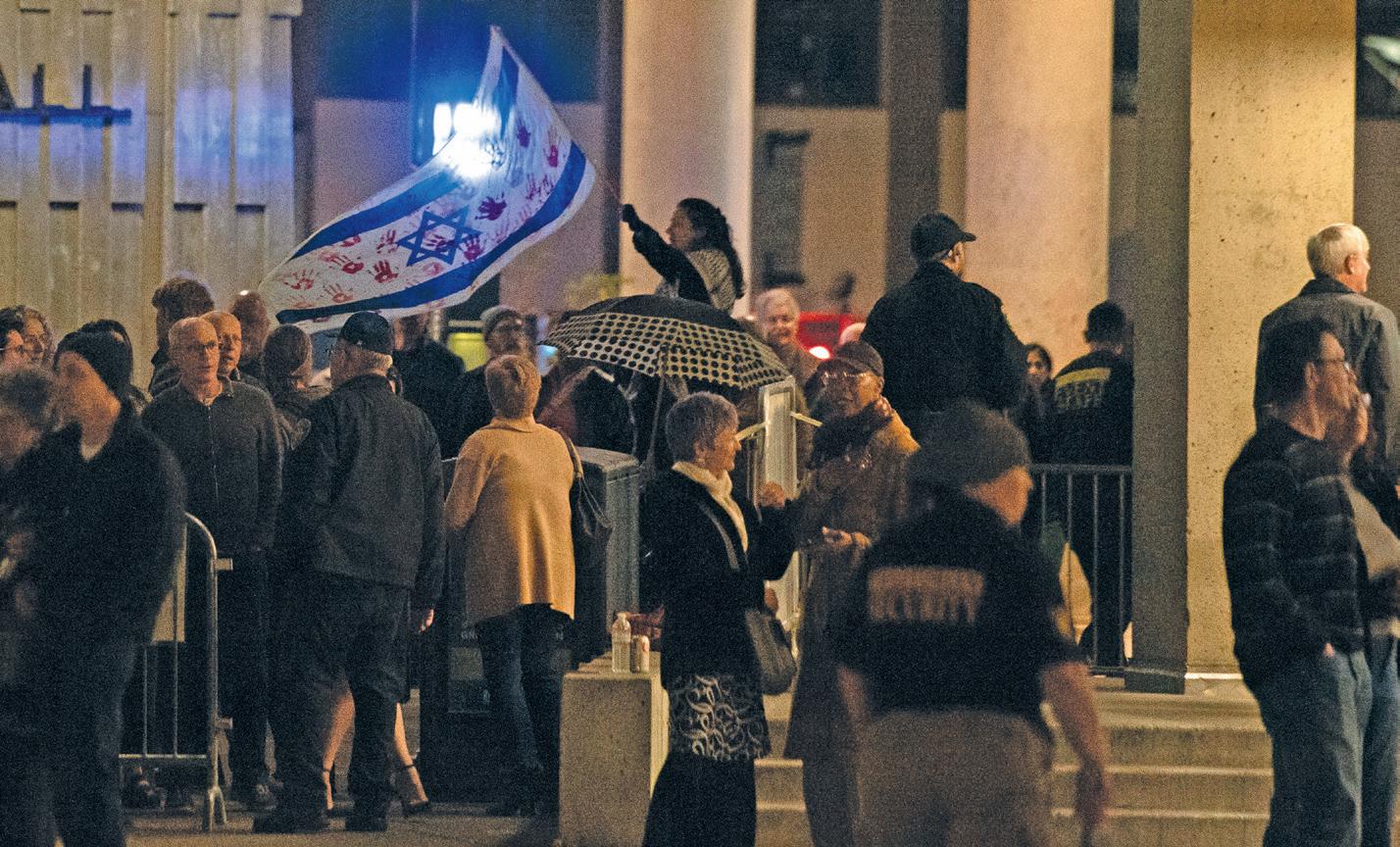
entered the hall.
“We’re not here because they’re an Israeli dance company, but because they’re dancers,” added his wife, Pajes Sterman. Waving her hand at the protesters, she said, “This has nothing to do with artists, who are generally very empathetic human beings.”
On the other side of the barricade, protester Lew Williams, 81, held up one side of a large banner reading “Showing Up for Racial Justice,” which he described as a “group of white people supporting people of color.”
“I don’t think it’s right what Israel is doing in Gaza, the genocide,” the Berkeley resident said. “Then they use art to whitewash it, to wash the blood off.”
Another protester, Juliana Monin, 44, of Oakland, said that as a modern dancer
herself, she thinks Batsheva is “excellent,” and she “loved” the film “Mr. Gaga,” which celebrates the work of company choreographer Ohad Naharin.
But, she continued, “I object to the use of dance as cultural diplomacy to obfuscate our awareness of what’s going on.”
Still, “I want everyone to be safe. I don’t think kids in hospitals should be bombed. But that’s not incompatible with wanting Israelis to be safe, too.”
Monin was later spotted draped with a sign reading “Dancers Against Apartheid.”
One young man riding by on his bicycle stopped to ask what was going on. Identifying himself as Jack, a Cal freshman, he said, “I can get why [the protesters] are doing it, but I don’t agree with it because this is just a dance
show. There’s nothing Zionist about it.”
When people exited after the evening performance, police had moved the barricade so protesters were kept about 10 feet away. They still banged on pot lids and shouted insults, but could not approach attendees.
That same system was in effect the next day. “Every plan is good until it’s not, and then you have to be ready to adapt,”
Cal spokesperson Dan Mogulof told J., commenting on the change from the previous evening’s show.
Confirming that the police were from UC Berkeley and other UC campuses, and were supplemented by private security, Mogulof said that Cal’s “security objective is to ensure safe entry and exit for the audience, do everything to ensure performances are not disrupted, and ensure First Amendment rights for all are respected.”
The Cal campus has been the site of many anti-Israel protests since Oct. 7, 2023, notably when a violent mob outside the Zellerbach Playhouse disrupted the planned speech of an Israeli attorney and former reservist in February 2024, forcing the speaker and attendees to escape through underground passages.
Batsheva canceled its spring 2024 U.S. tour, including a scheduled appearance at Cal, because of the war in Gaza.
In response to this year’s boycott call, the American Friends of Batsheva sent a statement to J. saying, “Batsheva Dance Company has been the target of calls for boycott in its international tours, yet we believe that cultural boycotts are not an effective means of fostering dialogue which is essential to promote a shared future of peace and dignity for all in our region.” n
GABE STUTMAN | J. STAFF
Lawmakers in Sacramento have introduced a bill that would set academic standards for high-school ethnic studies, an effort to quell what supporters of the bill describe as instances of antisemitism and anti-Israel bias in current courses.
The bill was introduced on Feb. 21 by state Assemblymembers Dawn Addis (D-Morro Bay) and Rick Chavez Zbur (D-Los Angeles) with 29 co-authors, including nearly every member of the California Legislative Jewish Caucus. Both Addis and Zbur are caucus members.
California legislators approved a bill in 2021 to make ethnic studies a graduation requirement, the first of its kind in the nation. The debate has heated up in recent months because 2025 is the first year that high schools are required to offer the course, pending a decision on funding from Gov. Gavin Newsom.
The new bill represents an effort from Sacramento to wrest back control over ethnic studies, amid local debates roiling school districts. Political moderates and Jewish organizations have raised alarms over content considered to be overly ideological, anti-Israel or antisemitic. The debates have intensified since Oct. 7, 2023:
• On Feb. 21, a Southern California school district settled a lawsuit brought by the Anti-Defamation League and other Jewish groups alleging antisemitism and anti-Israel bias in its ethnic studies courses.
• In Palo Alto, the school board narrowly approved a local ethnic studies requirement in January after conten-
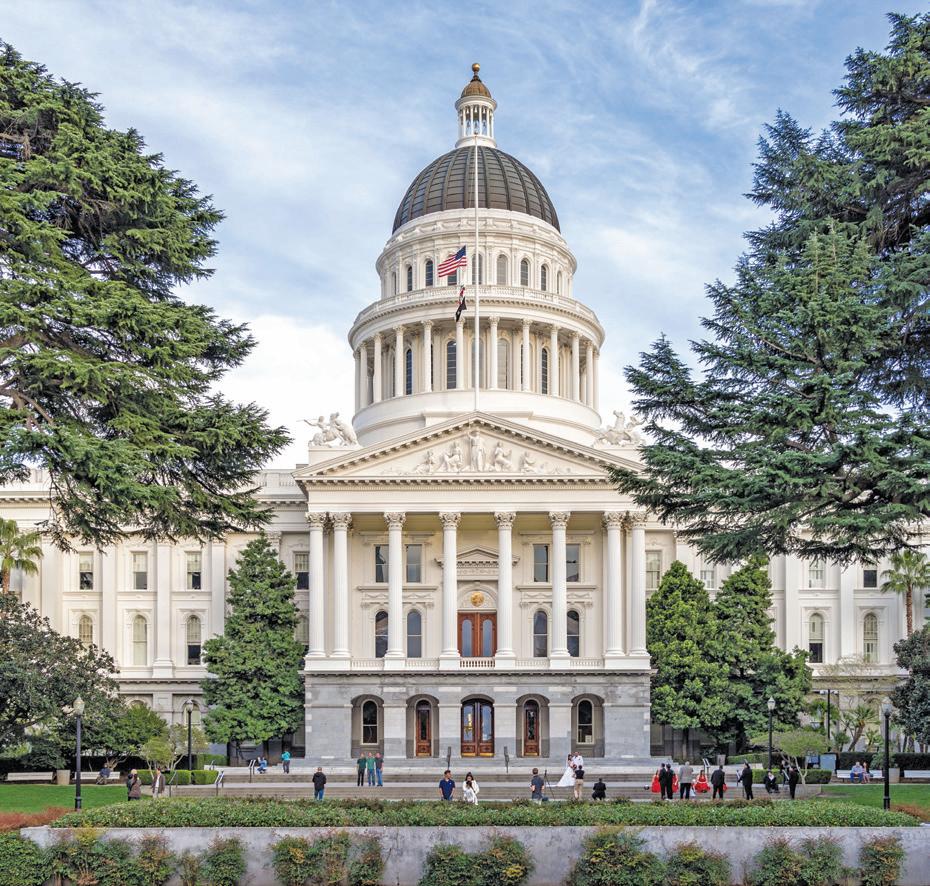
tious public meetings that required a security presence and ropes “to ensure orderly conduct,” the San Francisco Chronicle reported.
• Menlo-Atherton High School ethnic studies classes used slides, which came to light in January 2024, that described Israel as a nation illegally “created on Palestinian land” and established because “Europe felt bad” about the Holocaust.
• In Oakland, the teachers union hosted an unauthorized “teach-in” in December 2023 to instruct educators and their students about Palestinians. Teaching materials, which were not vetted by the school district, were stridently critical of Israel, relying on anti-Zionist groups like Jewish Voice for Peace.
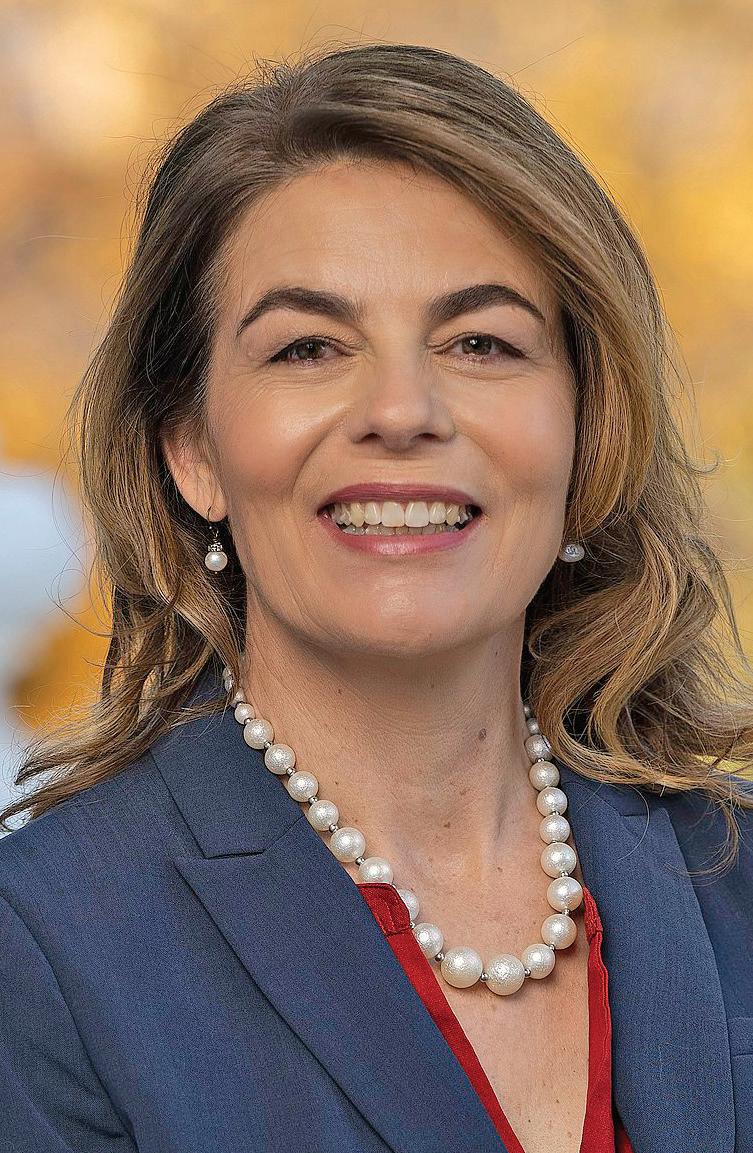
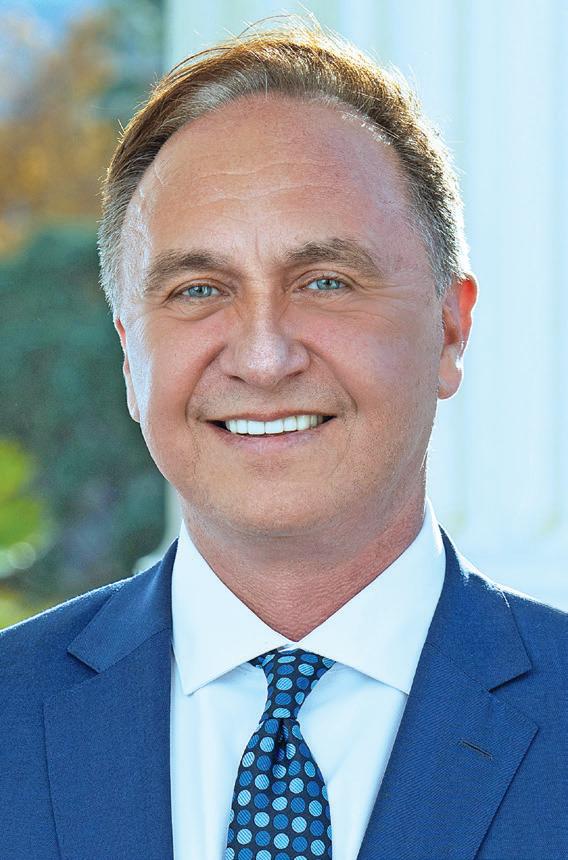
The debate over ethnic studies in California long predates the uptick in antisemitism and anti-Israel sentiment that followed the Oct. 7 attack, dating back to 2015 amid a national focus on police brutality against Black people.
Traditionally, ethnic studies is the study of race and ethnicity with a focus on people of color. In California, the state guidance emphasizes four non-white ethnic groups: African Americans, Asian Americans and Pacific Islanders, Native Americans, and Latino and “Chicanx” people. The curriculum is also meant to “foster multicultural respect.”
The new legislation, Assembly Bill 1468, will establish “rigorous content standards” for ethnic studies, just like the state has for other courses like math and English. Per the bill, the standards would be set by the California Board of Education by Jan. 1, 2028. It would also require ethnic studies curricula be vetted by the state Department of Education.
Addis, a vice chair of the Jewish caucus and a longtime educator who represents the San Luis Obispo area, described the importance of academic standards in a phone call with J. on Feb. 24.
“It basically says what students are supposed to learn and be able to do, at grade level, within that course or curricular area,” she said. “We’ve got classes being taught right now — some of them are rife with antisemitism. Some have other problems with them. We need to have more robust support for teachers and families to understand what this is supposed to be.”
State Sen. Josh Becker (D-Menlo Park), a vice chair of the Jewish caucus who represents much of San Mateo County, is a principal co-author and a vocal supporter of the bill.
Ethnic studies is the “only potentially required course for which the state has not developed rigorous curriculum standards,” he said. “It’s become clear that standards are necessary.”
The bill has won the support of the Jewish Public Affairs Committee of California, a lobbying group that describes itself as “the voice of California’s Jewish community to the State Capitol.”
Some have already attacked the bill, saying it leaves the door open to biased content or that it lacks teeth.
Dillon Hosier, CEO of a lobbying group called the Israeli- American Civic Action Network, criticized the measure. His group represents the interests of Israeli Americans in California and other states.
“Frankly, we think we need to go back to a multicultural, positive, constructive kind of education in California,” he told J., deriding the bill’s focus on non-white races, which he considers exclusionary.
Hosier said Israeli Americans in his network have felt under attack.
“We can’t sit back and let our community be subject to rabid antisemitism in California,” he said. “Unfortunately, this bill is a vector to introduce that kind of activity in our schools.”
Regardless of the new bill, the future of the ethnic studies mandate was thrown into

Ethnic studies
“is the only potentially required course for which the state has not developed rigorous curriculum standards.”
question at the start of the year. In January, a first draft of the governor’s budget did not include funding for its implementation, “given the state of the budget this year,” Erika Li, a chief deputy director in the state Department of Finance, told lawmakers.
Meanwhile, pro-Palestinian activists in California have pushed back on what they see as an effort to tamp down on teaching about the subject in schools. Among the groups crafting curricula for K-12 students is Teach Palestine, a project of the Berkeley-based nonprofit Middle East Children’s Alliance. Teach Palestine’s mission is “to support educators in bringing Palestine into their classrooms.”
The new ethnic studies bill applies only to high schools, whereas groups like Teach Palestine create curriculum and materials for students as young as age 4. At Oakland’s December 2023 “teach-in,” for example, teachers were given materials for students in TK, or transitional kindergarten, including a picture book called “P is for Palestine” that includes a page that states “I is for Intifada.” n
GABE STUTMAN | J. STAFF
An educational video on LGBTQ issues shown last month to high school students in Marin County featured a young transgender woman smiling softly, wearing a cream cardigan over a T-shirt that glorifies a Palestinian hijacker.
The T-shirt displays the image of a kaffiyeh-clad woman holding an assault rifle with the words “resistance is not terrorism.” The woman is Leila Khaled, a longtime member of the Popular Front for the Liberation of Palestine.
Khaled gained notoriety for her role hijacking a TWA flight bound for Tel Aviv in 1969 and an El Al flight headed to New York in 1970, and has achieved folk hero status in segments of the pro-Palestiniain movement.
The video was produced by a nonprofit called Campus Pride in collaboration with the Chronicle of Higher Education. In it, young LGBTQ college students explain how universities can help, or hinder, LGBTQ inclusion.
Neither Campus Pride nor the Chronicle
of Higher Education responded to a request for comment.
Some students in the Tamalpais Union High School District, which serves some 4,500 students, were shown the video on Feb. 12 during a mandatory session called a Stop and Learn, which the district holds periodically on issues of social justice.
The Khaled T-shirt, which flashes briefly on the screen during the beginning of the LGBTQ education video, has reignited debate over how to incorporate fraught political issues into public high school education in Marin County, a deeply liberal area.
A Jewish student complained about the T-shirt, according to Laurie Dubin, a former district parent and leader of an activist group called Tam Union Together.
Tam Union Together originally formed “objecting to the Liberated Ethnic Studies framework,” Dubin said, referring to an educational consulting firm that has drawn criticism from political moderates,

conservatives and Jewish groups for its radical politics and anti-Zionism. The video comes amid years of controversy over the district’s rollout of ethnic studies, a subject some parents say risks injecting left-wing ideology into the classroom. Tam Union Together was “horrified” when members learned of the Khaled T-shirt display, Dubin said. The group now has roughly 500 members, she said.
On Feb. 25, the district apologized for the video in a letter sent to parents.
“We, as a District, acknowledge that this image is troubling, particularly because of its connection to violence and terrorism against Jewish people,” Superintendent Tara Taupier wrote in the statement. “We apologize for
any pain this has caused. This oversight does not reflect the values of inclusivity, respect, and sensitivity that we are committed to upholding.”
Khaled has sparked controversy in the Bay Area in the past. In 2020 and again in 2021, a lecturer at San Francisco State University invited Khaled, who is now 80, to speak at two virtual events on gender, “resistance” and free speech. The invitations sparked outrage among members of the Jewish community and multiple technology companies refused to host the events.
The PFLP has been designated as a terrorist group by the U.S. State Department since 1997. n
“In Response to “I Like You”
By Daphne Valadez

GABE STUTMAN | J. STAFF
A pro-Israel billboard in Arcata was vandalized for the second time in less than a month.
e newest billboard was unfurled on Feb. 26, a er a previous one was torn down by vandals sometime late Feb. 7 or early Feb. 8, just days a er it was installed.
Located alongside a rural highway near Cal Poly Humboldt — a university riven by anti-Israel protests last spring — the new billboard states: “Israel, e Eternal Jewish Nation. Fighting Terrorism. Seeking Peace.”
“Masked vandals” tagged the new billboard with gra ti within two days, according to Code Blue and White, the pro-Israel group that commissioned the billboard. An image taken from surveillance video on Feb. 28 shows gra ti covering parts of the billboard. e gra ti reads “Parade” in all-caps, a word with no discernible connection to the content of the billboard. ere is also an illegible word on the le -hand side of the billboard wri en over the word “seeking.”
e first billboard, put up on Feb. 4, stated: “Call me a Zionist. It only makes me prouder.” It quickly became a flash point for controversy and debate in Humboldt County, which has a population of 134,000 and one synagogue, in Eureka, plus a Chabad center in Arcata.
A contingent of passionate pro-Palestinian activists live in the area. Last spring, activists occupied buildings at Cal Poly Humboldt for days, clashing with police and forcing the public university to close in what the New York Times described
as the “nation’s most entrenched protest” during a season of raucous and widespread demonstrations. In town, a group called the Redwood Peace and Justice Coalition more recently have been lobbying the Arcata City Council to establish a sister-city relationship with Gaza City.

A er the first billboard went up, opponents zeroed in on it almost immediately, posting anonymous messages on Reddit and Instagram, taking issue with its messaging and threatening to vandalize it. A Change.org petition described the billboard as carrying “genocidal messaging.” e billboard was found destroyed on Feb. 8.
“I think it’s important to keep promoting positive, true messages about Israel.”
David Porush, San Mateo
In conversations with J., supporters of the billboard expressed defiance, defending their free speech rights and arguing that the billboard messages convey uncontroversial truths.
“I think it’s important to keep promoting positive, true messages about Israel and its fight against the terrorists who commi ed atrocities on Oct. 7,” said David Porush of San Mateo, who recently founded Code Blue and White to advocate for Israel in the public square. “Israel is a tiny nation

surrounded by countries that are hostile to it. A lot of misinformation gets spread around the campuses, and into college towns.”
Porush worked with JewBelong, a New Jersey-based nonprofit, to crowdfund for the Arcata billboards and others in Northern California.
Porush, a retired professor of literature and media studies, has reported the vandalism, which he considers to be a hate crime, to the U.S. Department of Justice, the FBI, Arcata police and the California Civil Rights Department.
Tamar Krigel, an Israeli-born, longtime resident of Humboldt County, helped design the billboards.
Krigel, who told the Arcata newspaper Mad River Union in mid-February that “anti-Zionism is a modern disguise for antisemitism,” said the new billboard’s message is not meant to “provoke” but rather to inform the public that Israel “has a right to exist in the Middle East,” in the face of a acks on the Jewish state.
Krigel took an unapologetic stance, regardless.
“I’m not hiding who I am. I’m not hiding under a rock,” she said. “Here I am. All I have to say is, Israel has a right to exist. F*** you.” ■

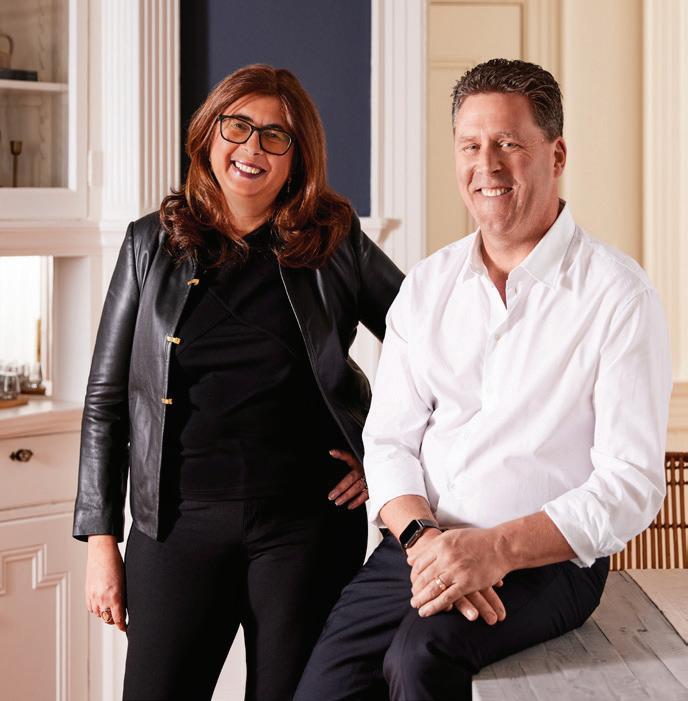
NATHAN DALTON | BERKELEYSIDE
This article first appeared in Berkeleyside and is reprinted with permission.
The JCC East Bay is selling the Walnut Street building it has called home for nearly five decades as it moves its operations from North Berkeley to Oakland’s Rockridge District.
The building, formerly home to Garfield Junior High School, was built in 1915 and designated as a Berkeley landmark in 1980. It is also listed on the National Register of Historic Places.
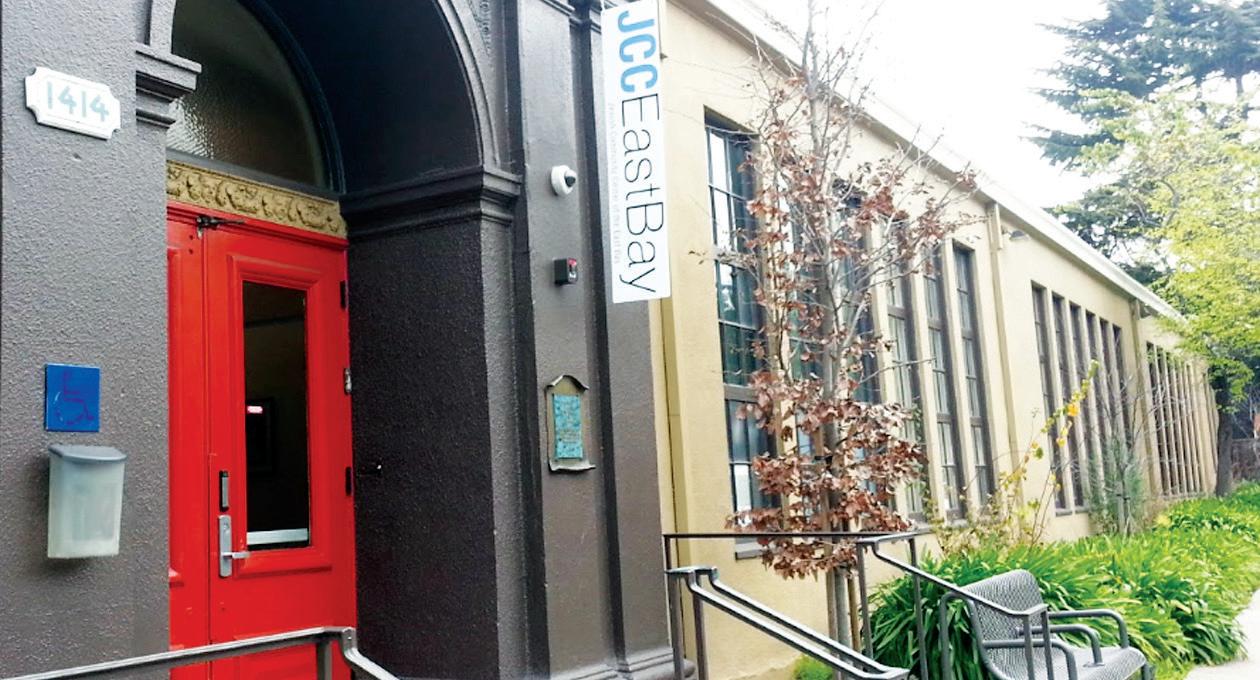
Founded in 1978 as the Berkeley-Richmond JCC, the community center serves 9,000 people each year. It is home to a popular preschool and after-school program and hosts a wide variety of classes, workshops and other events. The center changed its name to JCC East Bay in 2006.
“As the needs of our community grow, and the historic building at 1414 Walnut ages, we need to be in spaces where we can meet the current and future demands of our community,” JCC East Bay CEO Melissa Chapman wrote in an email to community members on Feb. 20.
The email noted the challenging environment of the building such as a lack of heating, air conditioning and adequate parking. The size of the building also limits the enrollment for its preschool and after-school programs. Selling the property will give the nonprofit “critical transition cash and reserve funds, which are vital for our future and financial stability,” according to the email.
A new 3-acre Rockridge campus is under construction with an opening set for March 2026. The East Bay Jewish Community Campus will become the “hub for Jewish life” and home to 15-20 other Jewish organizations, according to its website. The campus will feature a teen center, Hebrew immersion after-school programs, holiday gatherings, cultural events and more.
The preschool will open on the new campus in August 2026 with a planned enrollment of 120 children, double the current enrollment of the Berkeley location.
Programs and services will continue at the Walnut Street location for around three years, and the organization is seeking a new long-term space in Berkeley for its after-school programs. “We are 100% committed to continuing to provide services in Berkeley and are investigating a number of possible options, including a potential lease-back of the space for a period of time,” Chapman said.
She added that no staff positions would be eliminated.
Berkeley resident Sylvie Carr has two daughters, ages 3 and 5, enrolled in preschool and after-school care at JCC East Bay. Her family may have to find a new preschool for her youngest daughter, who is not yet 1 and who would have enrolled in 2026.
“We’ll miss having this hub of Jewish life in Berkeley,” she said. “There are always several preschool families who are visiting scholars or postdocs from Israel whose kids attend, given its proximity to campus, and I hope that can continue in Oakland, but worry since it’s much farther from Cal and its University Village. I also worry about it being farther away for many of the longtime teachers who already have long commutes.” n
Berkeleyside editor Zac Farber contributed reporting to this story.

DAN FRIEDMAN | CORRESPONDENT
Scott Wiener stood before the California Senate last May in a gray suit, blue tie and matching blue Star of David lapel pin to introduce the third reading of his sweeping artificial intelligence bill. The Safe and Secure Innovation for Frontier Artificial Intelligence Models Act had two explicit aims. One was to make sure that California stayed at the cutting edge of AI’s warp-speed development. But the true heart of the bill focused on erecting what the state senator from San Francisco called “basic safety guardrails” around the new technology.
That’s because AI promises both extraordinary potential benefits and possible doomsday risks.
“Our responsibility,” Wiener later told me, “is to try to get ahead of those risks, anticipate them and, to the extent we can, reduce those risks so that people can experience the benefit of this technology.”
Congress, Wiener said, was paralyzed on the issue. Complacency was not tenable. By placing himself at the heart of the AI debate, he was adding himself to the very short list of people vital to the future of the technology. Most of them live within 30 miles of his constituency. Several, like Wiener, happen to be Jewish.
AI’s potential benefits are legion. Bill Gates thinks it could save the lives of millions of children who die of preventable diseases and mitigate the effects of climate change. Roy Bahat, head of Bloomberg’s venture-capital wing, Bloomberg Beta, has said that AI could be a bigger deal than the whole of the internet, and now thinks it could be even bigger than that. Andrew Ng, founder and CEO of DeepLearning.AI, said it will become as big as electricity.
But with the launch of OpenAI’s ChatGPT in December 2022, artificial intelligence went from a distant science-fiction dream to a newborn reality. By March 2023, Elon Musk and Steve Wozniak, among other tech leaders, were calling for a pause in development because of AI’s “potentially catastrophic effects on society.” Two months later, OpenAI’s Sam Altman, along with the chiefs of other major tech outfits, signed prominently onto a petition from the Center for AI Safety, worrying that “the risk of extinction from AI [ranks] alongside other societal-scale risks such as pandemics and nuclear war.”
Whichever side you come down on — AI as a savior or AI as a destroyer, and many believe both notions have merit — one thing seems clear: This emerging technology will soon be ubiquitous.
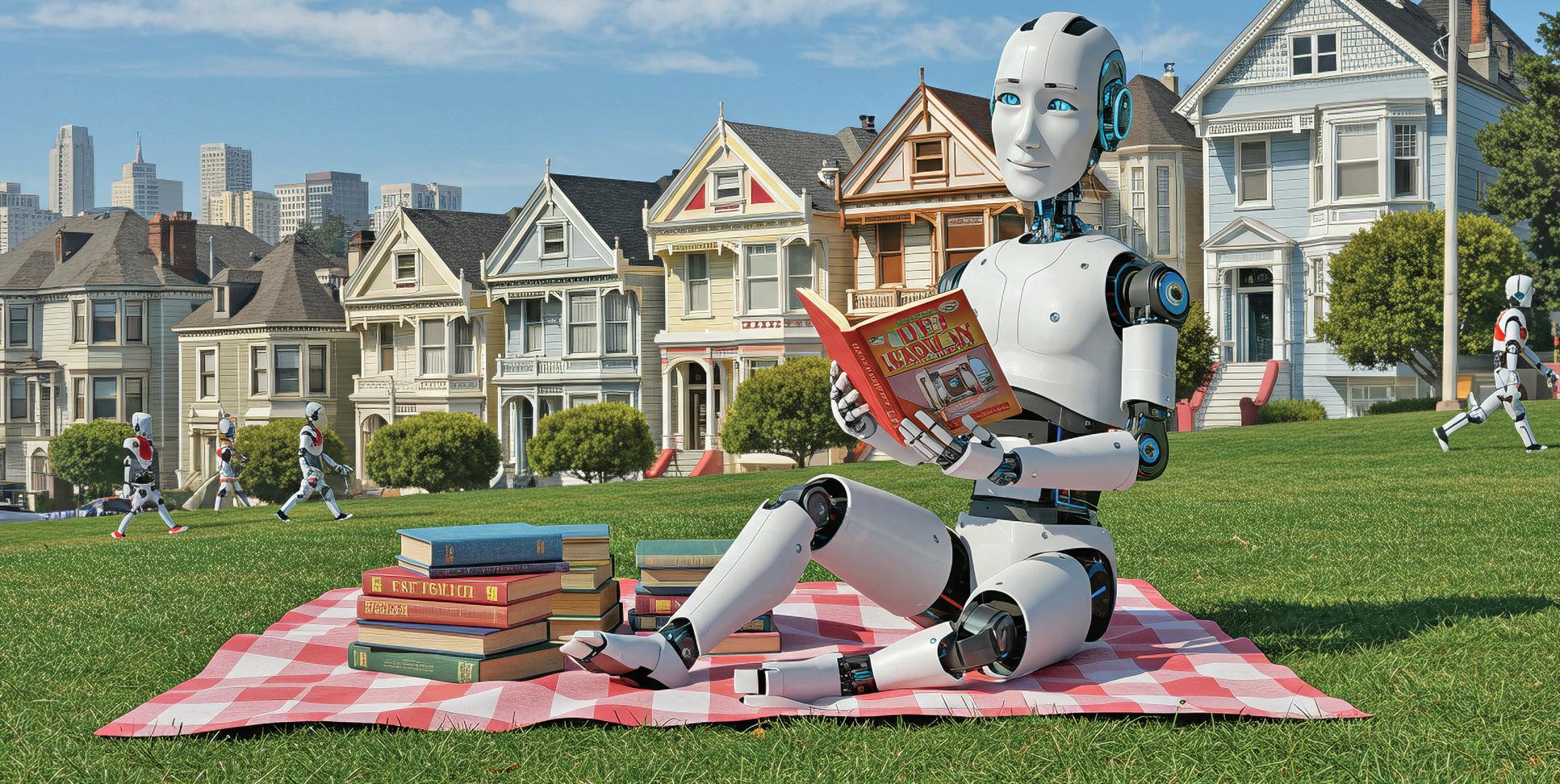
“AI will play a role in a lot more than we expect,” said Craigslist founder and internet entrepreneur Craig Newmark. “We’ll see it everywhere, especially if it’s deployed with a serious commitment to doing it well.”
The speed of AI’s development and adoption has been astonishing. ChatGPT itself reached its millionth user within five days, had over 100 million users by the end of its first full calendar quarter, and at the end of 2024 boasted over 300 million users every week. ChatGPT is just one of many massive, public large language models (LLMs), alongside Google’s Gemini, Anthropic’s Claude, Meta’s Llama and others.
Which is why legislation like Wiener’s SB 1047 seemed so urgent. In essence, what he was trying to convince his colleagues to do was impose legal oversight not only on the development of AI, but on how to shut it down if need be. The bill would obligate all major AI systems to include a kill switch allowing executives to turn off a system that, by accident or design, was threatening to cause a mass casualty event — developing a weapon of mass destruction, say, or engaging in a broad cyberattack. As Wiener noted that day in May, two of the world’s most celebrated machine-learning researchers,
AI. Rarely have two letters seemed to hold so much promise, or so much peril. Artificial intelligence, we are told, could cure humanity’s ills. Or it could end us entirely. Is one or the other true? Could elements of both be accurate at once?
This week, we are running the first in a series of articles exploring AI and the areas where it intersects with Jews and Judaism. In many ways, this is a quintessentially J. story: The beating heart of AI tech, after all, sits in our backyard here in the Bay Area, and a significant number of Jews are involved in creating, legislating and thinking about the consequential technology. What’s more, among Judaism’s motivating principles, tikkun olam repairing the world, ranks high. So does pikuach nefesh, saving lives. Asking important questions — and debating the answers — are also among our traits as a people. We hope this series will spark conversations in our community and beyond about the place of AI in society, and about the places where we, as Jews, can contribute.
Unlike our cover, which was designed by AI, this series is written by a real human being, journalist Dan Friedman. In the opinion section, David Zvi Kalman writes about how Jews might approach AI. And culture editor Maya Mirsky digs back into J.’s Archives where, in the early 1920s, the paper reviewed a Czech play, performed in San Francisco, about machine-made men, “a new and fascinating topic,” Maya writes, “that today might be called artificial intelligence.” But back then it seemed like science fiction. Today, it’s real life.
— Chanan Tigay, editor-in-chief
both of whom were supporting SB 1047, had repeatedly warned policymakers that failure to act could have “severe consequences.”
Because of ChatGPT, many people associate AI with the interfaces that provide banks with infinite experts on their “contact us” chats or help students cheat on essays, but the term is much more general. These generative AIs are just the latest and most visible form of a class of machines that mimic human intelligence.
What has changed recently is the ability of those machine-learning systems to process massive amounts of data and, with the explosion of usable data produced by the internet, the ability of their programmers to provide the systems with vast datasets — whether shopping patterns, biometric readings from health apps or every single word that has ever been digitized.
Machine-learning algorithms identify patterns in data and make predictions about what word, number or consumer good should come next based on those patterns. As a result, artificial intelligence is an immensely powerful tool able, for example, to comb through sets of medical histories and find a pattern of symptoms. What users might do with that diagnosis, though, is a human decision.
Contemporary AIs are, essentially, superefficient autocomplete programs, taking as much of human achievement as they are provided and predicting, on the basis of what has been correct before, what comes next in the sequence. Depending on the prompt, the next item can be a response to a question, a continuation of a sentence, a new chemical compound, fake voices or even videos.
Instead of giving computers a task with a specific determined outcome, like calculating an escape trajectory for a rocket, today’s AI developers produce models that suggest probable results. Depending on the developers, the models could help accelerate searches to produce new vaccines, or to start new pandemics.
This increase in power and shift from “deterministic” to “probabilistic” outcomes is the key to AI magic, but it’s also
why models can “hallucinate.” Sometimes there will be inadequate information or a problem in the statistical weighting, and the models will predict items wrongly, making public errors in ways that we recognize.
What AI systems lack in intention or what we call common sense — machines have no human intuition, understanding, desires or intentions — they make up for in computational power. Because they are simulating human language and the understanding encoded in the ways that we use it, they seem to know who we are and what we mean.
LLMs are, however, just a special case among many — predicting linguistic outcomes, where other AIs predict medical, military, political or other outcomes. And there are many in the tech community who believe that the growth and convergence of AIs will lead to artificial general intelligence (AGI), which could perform any intellectual task a human can. Unlike narrow AI, which excels in specific tasks like playing chess by predicting winning moves, AGI could adapt, learn and reason across diverse domains without human intervention.
The logical continuation of AGI is artificial superintelligence (ASI) in which AI surpasses human intelligence in all aspects, including creativity, problem-solving and emotional intelligence. If developed, ASI could revolutionize science and society, but it also poses obvious ethical risks.
Lawmakers in state legislatures across the United States propose new bills every day, though most receive little outside attention. But with no federal legislation on the cloudy horizon, California’s actions can have significant national impact on AI. The state sits at the epicenter of the AI revolution. On
WE WILL ANNOUNCE THE WINNER OF THE ROBERT HOLGATE PRIDE FELLOWSHIP AWARD
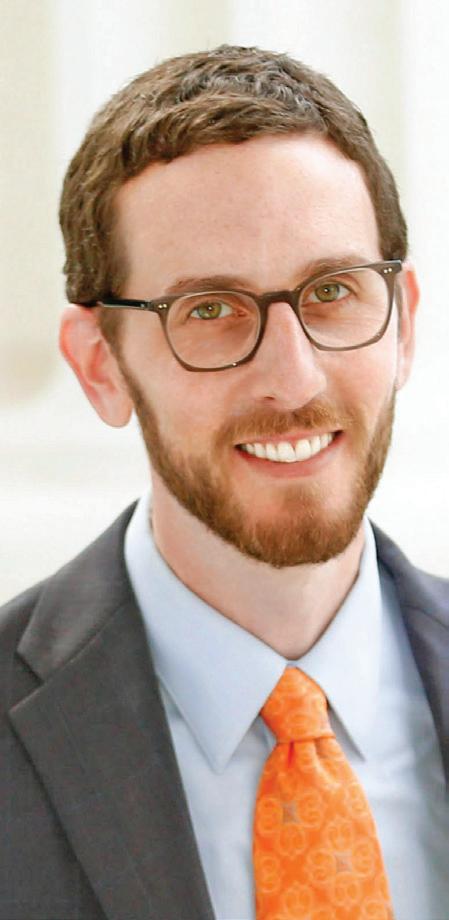
“This
is about
he said. Still, “misguided regulatory policy” can undermine American dominance in AI, he said, and, implicitly, American investments. Bad regulation must be opposed, Horowitz said, because AI “must not be choked off in its infancy.”
are
catastrophic risks that
very tangible and real. … Like shutting
down the electric grid or melting down the banking
system.”
State Sen. Scott Wiener
Forbes’ list of the 50 most promising privately held AI companies, 32 are based in California, nearly all of them in the Bay Area. Indeed, over 50 separate regulatory bills were proposed to the state Legislature in 2024 alone, and 17 of them were signed into law. Most, though, only regulated aspects of the technology, like transparency of use or consumer privacy. Wiener’s SB 1047 was more expansive.
In a terse note in 2023, Ben Horowitz, the co-founder of Andreessen Horowitz, one of the biggest tech venture-capital companies in the world, had outlined his company’s thinking about regulating AI. “[We] need clear regulation to eliminate bad actors exploiting the technology for nefarious purposes,”
Horowitz’s salvo came before SB 1047 had been composed, but Wiener was aware of the sentiments. As he was submitting his bill, he committed to continue “soliciting and incorporating constructive feedback.” It made political sense to pay attention to the head of a local multibillion-dollar company in the industry he was trying to regulate, but he was not solely talking to Horowitz. For all the tech execs and lobbyists listening, Wiener’s offer in that May Senate speech was an olive branch, a promise that as the bill went through the process of becoming law, their voices would be heard.
One of those execs was Sam Altman, the 37-year-old CEO of OpenAI. The baby-faced entrepreneur from St. Louis, Missouri, has become the human face of AI, and his company has become almost synonymous with the new magic chatbots. In an interview with Time magazine editor-in-chief Edward Felsenthal, Altman explained how his upbringing had inculcated both boundless enthusiasm and extreme caution. “I’m a Midwestern Jew,” Altman said. “I think that fully explains my exact mental model, very optimistic and prepared for things to go super wrong at any point.”
He found, though, that his new celebrity made him a target for hate. Online he saw his social media tarred with antisemitic slurs, which he talked about in interviews and posted about on X (formerly Twitter). “i am jewish. i believe that antisemitism is a significant and growing problem in the world, and i see a lot of people in our industry sticking up for me, which i deeply appreciate.”
continued on page 10
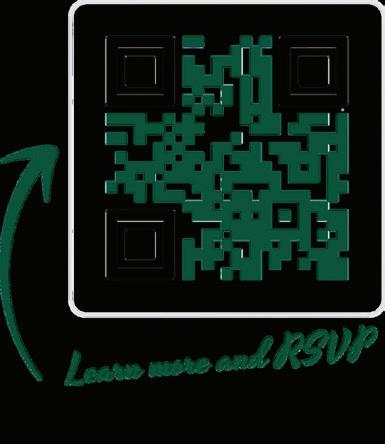
IN HONOR OF AN LGBTQ+ JEWISH SOCIAL JUSTICE ACTIVIST
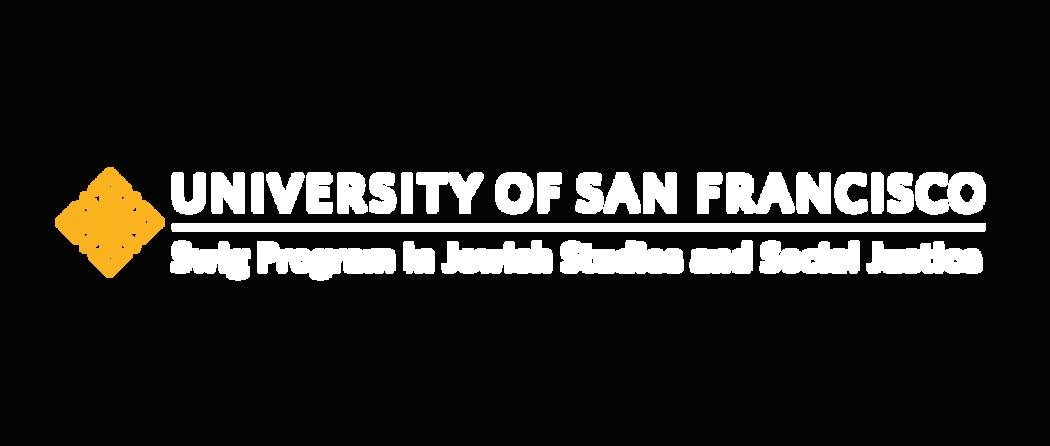

What a Long Strange Trip It’s Been: Rabbinic Tales of Resistance and Resilience
DELIVERED BY MARCH 23, 2025 • 6:30 PM-8:00 PM
FROMM HALL - USF CAMPUS
This annual lecture benefits the Rabbi-in-Residence program at USF and is presented by Co-chairs Pam David and Robert Holgate along with our generous supporters: Congregation Emanu-El, Ms. Leesa Romo, the Honorable David B. Saxe and Melissa Blaustein, Lily Kanter and Mark Sarosi, Jay Cohen, Dr. Marcy Adelman, the Honorable Mark Leno, Mike Shriver, Lisa Szer, Lisa Finkelstein and Sarah Grams, Congregation Sha’ar Zahav, Roger M. Low, Jim Chappell, Ruth Finkelstein, Nancy Gonchar, Irene Ogus, Rabbi Allen Bennett, Allan Gold, Steve Rudser, and Maggid Eli Ramer.
continued from page 9
By the time Wiener presented his bill, OpenAI was no longer an impudent newcomer. It was valued at over $100 billion and had attracted a multibillion-dollar investment from tech behemoth Microsoft. OpenAI had begun to fill downtown office real estate in San Francisco, and Altman later took up a position on the transition team of Mayor Daniel Lurie.
Even so, Altman, who declined to participate in this article, had harbored deep concerns about the potential consequences of AI technology. Nearly a decade earlier, he had said that AI would “most likely lead to the end of the world.” As a poster child for the AI industry who was already on the record with concerns for its safety, how he came down on the debate would be crucial for the ultimate success of Wiener’s bill.
The first atmospheric river of the season was approaching San Francisco when I spoke to Wiener in January 2025. It was just over a year since he had begun the preliminary filings for what would become SB 1047 and, though he is still passionate about the topic, his tone suggested he had grown weary of talking about it.
I asked why a state senator who had concentrated on such issues as housing and net neutrality would want to insert himself into such a controversial debate. “This is an issue that affects everyone and will affect everyone,” he said.
With the launch of OpenAI’s ChatGPT in December 2022, artificial intelligence went from a distant science-fiction dream to a newborn reality.
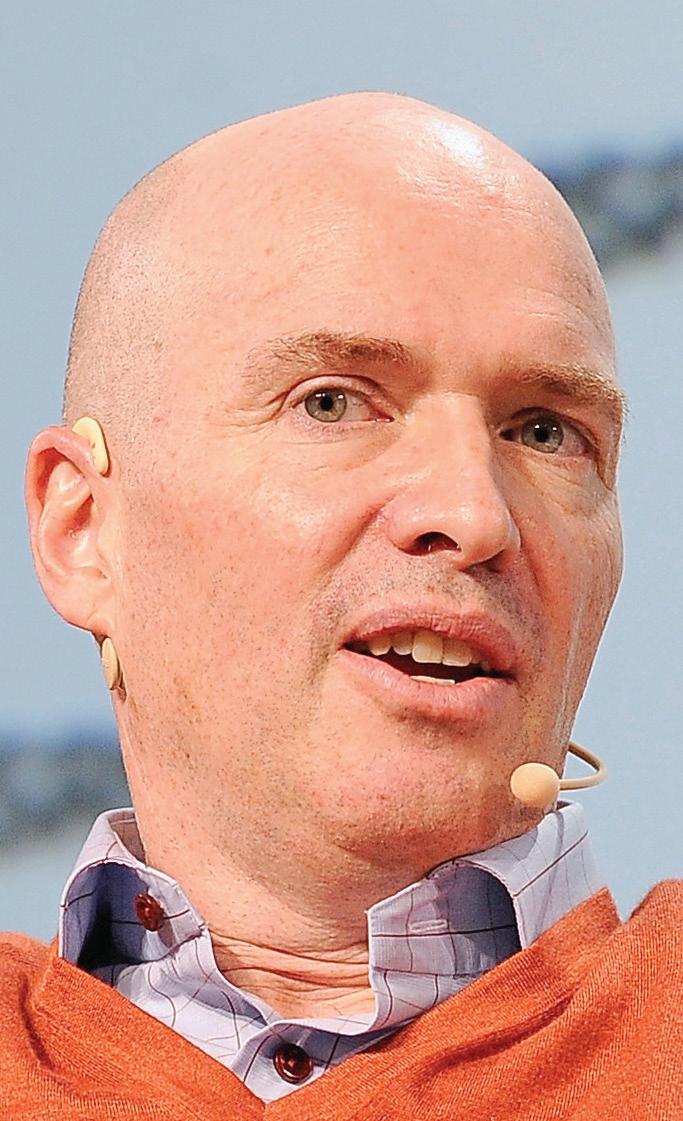
AI elicits strong feelings — from those who believe it will save humankind to those certain it will destroy us. Which is why getting to the right legislation could be so important, and so tricky. Before writing his seminal bill, Wiener said, he convened “a whole bunch of meetings” with people on all sides of the AI debate.
Although Wiener would not tell me who was at the meetings, or exactly what was said, he hinted that significant players were involved. Altman, with his concerns for safety in tension with his institutional desire for freedom from regulation, would have been an obvious partner in trying to thread the needle. After all, in September 2023 Altman had testified at a U.S. Senate subcommittee hearing on artificial intelligence that “we think that regulatory intervention by governments will be critical to mitigate the risks of increasingly powerful models.”
That hearing was part of the federal government’s attempt to grapple with AI. Eighteen months later, the Senate’s Bipartisan Framework on AI Legislation has yet to become law,
or even reach a meaningful vote. With President Joe Biden’s executive order 14110 from October 2023 outlining federal safety policy on AI vulnerable to repeal, Wiener seized the moment. Many other California bills had touched on the uses and effects of AI — including transparency, copyright issues and privacy — but none had centrally addressed the existential threat that AI posed to human civilization. The stakes could hardly have been higher, nor the time shorter.
“This is about catastrophic risks that are very tangible and real,” Wiener said. “Because people are trying to inflict harm today. Like shutting down the electric grid or melting down the banking system or creating nuclear, biological or chemical weapons. … There are people on the planet who are trying to inflict these harms. And the question for us is, do we want to make it easier for them to inflict these harms, or do we want to try to reduce the risk of these harms in creating these massively powerful models?”
Over the next three months, Wiener negotiated with fellow legislators in Sacramento and tech insiders in the Bay Area. The bill went through committees in both houses and through three sets of readings. Wiener let go of a number of suggestions but managed to maintain the main principles of encouraging innovation and instituting “guardrails.”
On Aug. 19, when the amended text finally emerged and was sent back from both houses for Wiener to present for a vote, the proposal also included three significant provisions beyond the kill switch: transparency, certification and public
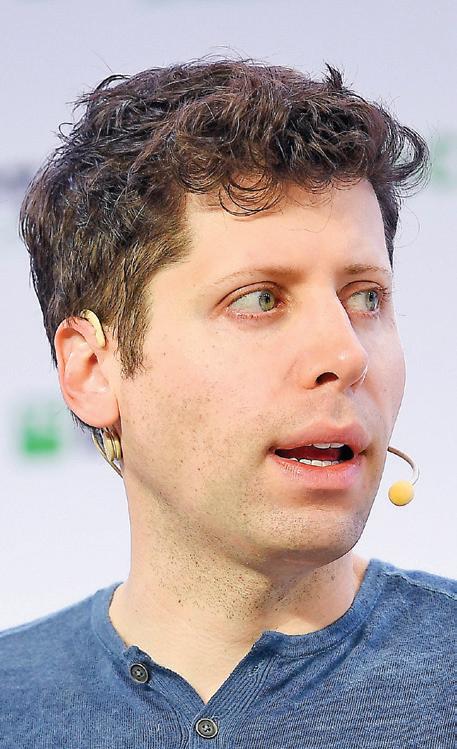
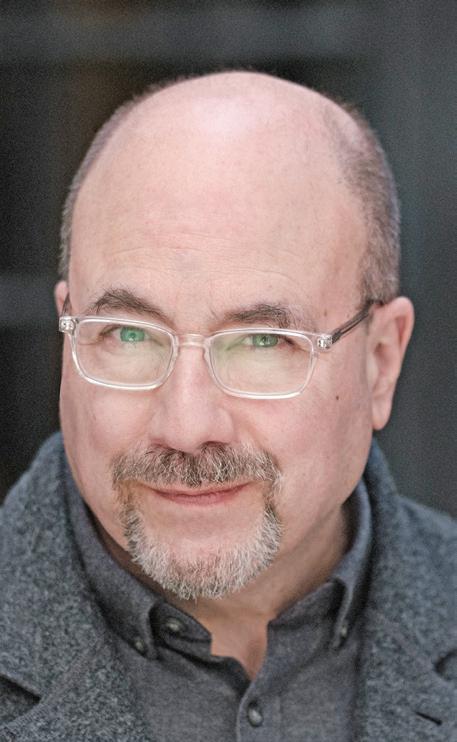
research. With these obligations, massive AI companies would be under the scrutiny of researchers, the government and the companies themselves.
The initial plan had mandated a new government entity, the Frontier Models Division, that would establish an accreditation process for big tech companies to show how they were minimizing catastrophic risk from advanced AI. In July, Wiener spoke to an audience at the preeminent, and extremely influential, tech incubator and investor Y Combinator. While still suggesting that the state set up this FMD, Wiener said he would consider moving away from that provision. And indeed, by August, the idea of the new FMD had been scrapped in favor of setting up an oversight committee within the existing Government Operations Agency.
In addition, the state was proposing to set up a publicly funded body called CalCompute to review massive AI companies. CalCompute would work hand in hand with protections for whistleblowers to keep huge AI developers accountable and would provide an ecosystem for researchers in the state
to stay relevant and innovative, even when they were not directly affiliated with the AI giants.
With all of these changes in place, the bill was ready to move from its amendment phase to a final vote in the state Senate. Then, on Aug. 20, OpenAI came out against the legislation.
“SB 1047 would threaten … growth, slow the pace of innovation, and lead California’s world-class engineers and entrepreneurs to leave the state in search of greater opportunity elsewhere,” chief strategy officer Jason Kwon wrote in a letter.
Even so, the bill handily passed its third reading on Aug. 28, followed by a vote the next day, and then sent up to Gov. Gavin Newsom to be signed into law. Instead of being a victory for compromise and consensus, though, the letter meant that Newsom was going to have to make a choice. Wiener was now pitted against Altman. The governor would have to choose between the two, between democratic governance and financial power, between regulation and no regulation.
On Sept. 29, Newsom vetoed the bill, damning it as “a solution that is not informed by an empirical trajectory analysis of AI systems and capabilities.” Although it’s dead, SB 1047 remains one of the most significant legislative efforts in the country to address the risks of a catastrophe caused by AI. What’s more, this one made it the furthest among other legislative proposals of similar ambition in the United States, passing both chambers before the veto.
Newsom critiqued SB 1047 for regulating models based only on their cost and size, rather than function, and failing to “take into account whether an Al system is deployed in highrisk environments, involves critical decision-making or the use of sensitive data.” Still, he acknowledged that a bill like SB 1047 was necessary.
“Safety protocols must be adopted,” the governor said. “Proactive guardrails should be implemented, and severe consequences for bad actors must be clear and enforceable. … [California] cannot afford to wait for a major catastrophe to occur before taking action to protect the public.”
Wiener, too, is determined to continue to talk to stakeholders, as are his allies. Immediately after the veto, he told me, he was already “talking to both supporters and opponents of the bill,” preparing to “engage with the governor’s team” to see what he can do in 2025. Already this year he has proposed a new bill, SB 53, that would establish a version of CalCompute and protect whistleblowers as SB 1047 had intended.
Already in 2025, President Donald Trump has revoked Biden’s executive order on AI, leaving national policy unstated and AI largely unregulated at a federal level. Again, a California senator has stepped up with a proposal. This time, state Sen. Steve Padilla from San Diego has introduced an AI Bill of Rights that might cover some of the same ground as the executive order or the Wiener proposal.
Threading the needle between oligarchical billionaires who want minimal anti-extinction regulation and politicians who want to safeguard their constituents might be an impossible task. But it’s a vital one, not only for the people of California, but for the 8 billion people who are about to be affected by AI.
It’s a task that requires not only superintelligence, but a degree of political adroitness that is well beyond even the most advanced AIs. No matter how much quantum computing we have at our disposal, the disagreements over how to safeguard AI are human problems that require human solutions — and fast. To paraphrase the Mishnaic sage Rabbi Tarfon: The time is short and the work is great. n
GABE STUTMAN | J. STAFF
An Oakland coffee shop is facing two simultaneous lawsuits brought by Jewish customers who say they were discriminated against because of their religion.
Plaintiff Jonathan Hirsch, a Jewish resident of Oakland, was “ejected from the coffee house because he is a Jew,” alleges one lawsuit filed in state court. Another lawsuit, filed in federal court, alleges that Michael Radice, a Jewish man from Los Angeles, was “harassed and excluded” from the business “explicitly because he is Jewish.”
The lawsuits allege violations of state and federal civil rights laws by the Jerusalem Coffee House, a trendy cafe near the Temescal neighborhood in North Oakland. The shop, an homage to Palestinian culture and a hub for political activism that opened in 2023, serves up regionally inspired fare like date tahini lattes and za’atar focaccia.
“Bigotry against Jews is on the rise, but we will not be turned away — this behavior cannot be tolerated anywhere.”
Marc Levine, ADL regional director
The cafe is also explicitly anti-Zionist, embracing radical politics and describing itself as “rooted in revolution.” In the fall, the coffee shop found itself in an internet firestorm after publishing a new menu around the one-year anniversary of the Oct. 7, 2023, Hamas massacre in Israel. The menu advertised a drink called the “Sweet Sinwar,” an apparent reference to Yahya Sinwar, the now-deceased Hamas leader who masterminded Oct. 7. In response, angry internet posters flooded the cafe with negative Yelp reviews.
Now, the cafe is facing challenges that may prove more serious than internet grief.
The Anti-Defamation League announced one lawsuit, filed Feb. 27 in U.S. District Court for the Northern District of California. The Louis D. Brandeis Center for Human Rights Under Law announced the other lawsuit, filed March 3 in California Superior Court in Alameda County. J. reported on the Brandeis Center lawsuit in mid-February before it was filed.
In each suit, a plaintiff claims that he was refused service because he is Jewish.
“No one should have to hide who they are to order a cup of coffee, but at Jerusalem Coffee House, antisemitism was literally on the menu,” Marc Levine, regional director
for the ADL in San Francisco, said in a statement. “Bigotry against Jews is on the rise, but we will not be turned away — this behavior cannot be tolerated anywhere.”
The Jerusalem Coffee House did not respond to a request for comment.
The state lawsuit, filed by lawyers with the Brandeis Center, focuses on an October 2024 incident that was captured in a series of videos and shared widely online. The videos show a tense and emotionally charged encounter lasting more than half an hour between Hirsch, proprietor Abdulrahim Harara, others in the shop and Oakland police, who attempt to defuse the situation. Hirsch’s lawyers published the footage in a public Dropbox.
Hirsch entered the shop on Oct. 26 wearing a blue baseball cap with a Star of David on it. The video shows Hirsch sitting in front of a chess board with his young son. Harara approaches.
“Are you a Zionist?” Harara says, telling Hirsch he is causing a disruption. “This is a violent hat and you need to leave.”
Hirsch refuses and tells Harara to call the police. Police arrive, and after a lengthy back-and-forth during which Hirsch’s son expresses some anxiety and police try to calm him, Hirsch says he will leave if Harara makes a trespassing claim, which he does, and Hirsch and his son are escorted out.
Throughout the video, Harara periodically taunts Hirsch, making kissing noises in the direction of the camera, while Hirsch calls Harara a “bigot” and tells the police officers, who are Black, that he is taking a stand against bigotry and that Harara is “ignorant.”
“Are you a Zionist?” Harara asks repeatedly, to which Hirsch does not answer. “F*** Israel! F*** Zionists!” Harara says. At other points, Harara says, “I love Jewish people! I love them!”
The other case, filed in federal court by the ADL along with lawyers from the international law firm Benesch, Friedlander, Coplan & Aronoff, centers on an incident not captured on publicly available video. It revolves around Radice, who works full time for an Oakland-based nonprofit serving formerly incarcerated adults and travels to the Bay Area frequently from his residence in Los Angeles. According to the complaint, on July 10, 2024, he approached the cafe wearing a hat with a Star of David on it and the words “Am Yisrael Chai” in Hebrew.
An unnamed employee of the shop allegedly asked him, “Are you a Jew?” and “Are you a Zionist?” The employee “proceeded
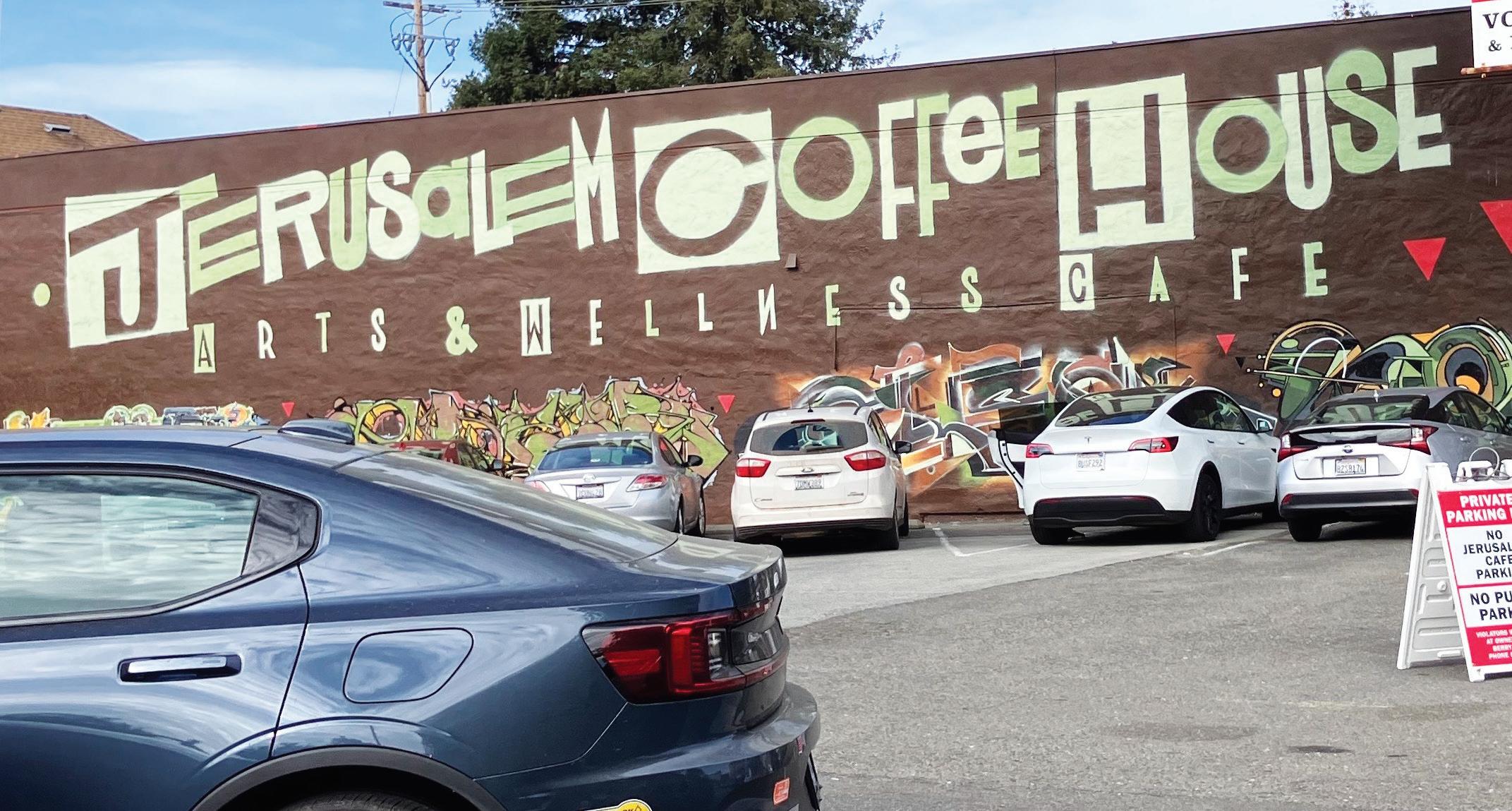
to spew a series of accusations about Mr. Radice’s Jewish identity, including accusing him of complicity in events taking place in the Gaza Strip,” the complaint states. Radice “was concerned for his physical safety” and walked away, the complaint says. As he was leaving, Radice saw another man, whom he believed to be Harara, speak with the employee and they both went inside.
About three weeks later, on Aug. 3, 2024, Radice returned to Oakland and “stopped into JCH with the intent to purchase a cookie or other item as a token of appreciation” for what he believed was an attempt by Harara to de-escalate the previous situation, the complaint states.
“Before Mr. Radice could place his order,

one of the men from the July incident said, ‘You’re the guy with the hat. You’re the Jew. You’re the Zionist. We don’t want you in our coffee shop. Get out,” according to the complaint.
Radice left. But as he did so, three men, including Harara, the complaint states, “followed him out of the cafe.”
“Mr. Radice felt threatened due to the three men’s pursuit,” according to the complaint. “Concerned for his safety, Mr. Radice walked into the street to create more distance between him and the three men.”
Harara is named in both lawsuits. Each suit seeks damages for civil rights violations, plus attorney’s fees and any “other relief” that the court may find appropriate. n
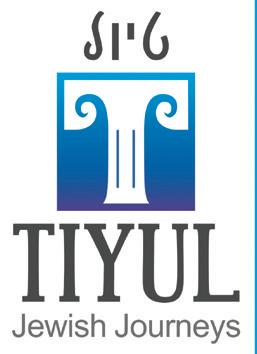

Delhi, Agra, Jaipur, Mumbai, Pune December 3-14
COCHIN extension December 14-17
Guest Speaker: Fred Rosenbaum Tour Leader: Ariel Goldstein
In partnership with New Lehrhaus
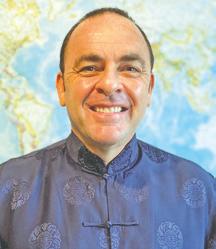
Ariel Goldstein has over 25 years experience organizing and leading tours to more than 40 countries.
www.tiyuljewishjourneys.com • 510.847.4519
ariel@ tiyuljewishjourneys.com
NIVA ASHKENAZI & AARON LEVY-WOLINS | J. STAFF
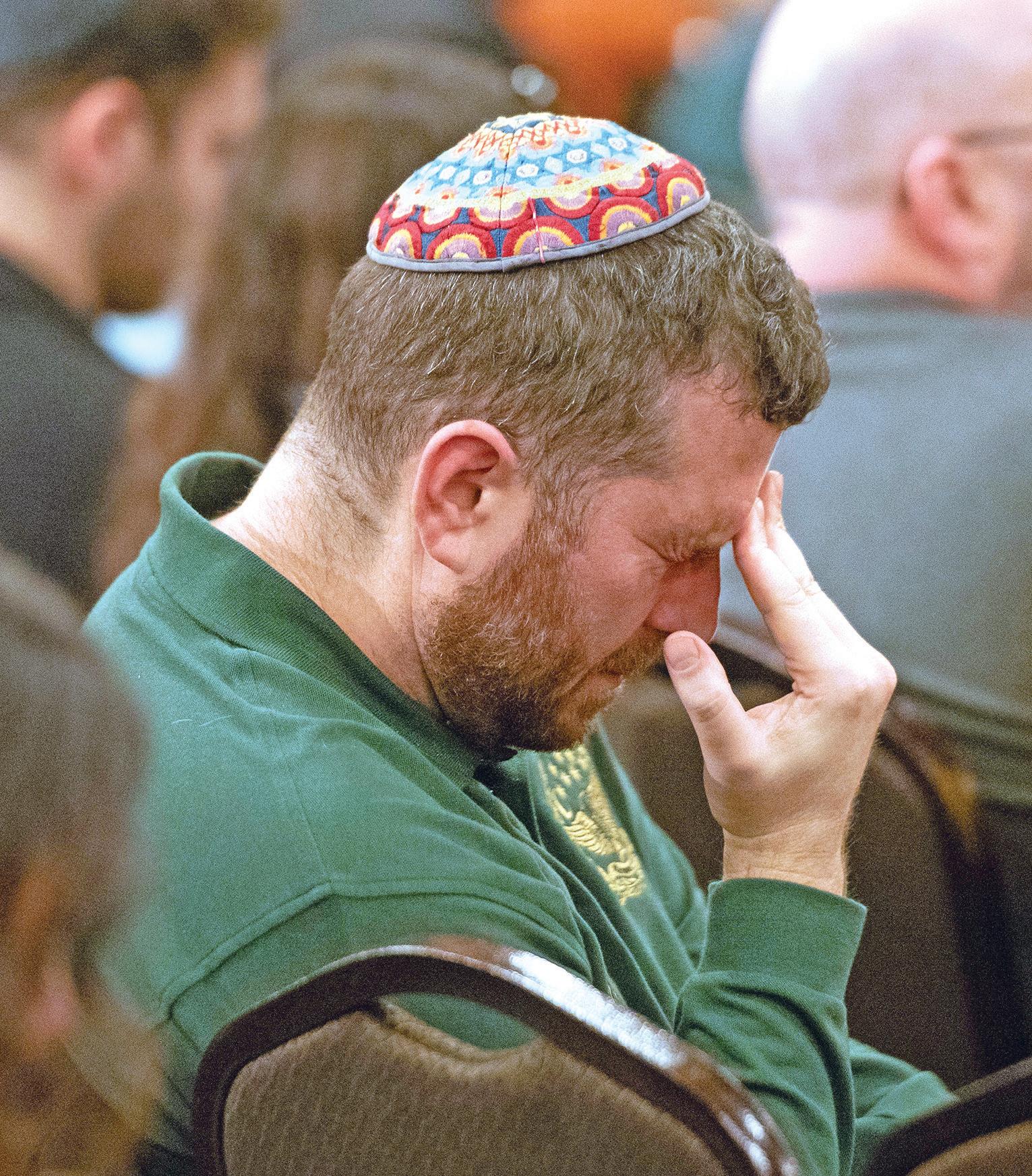
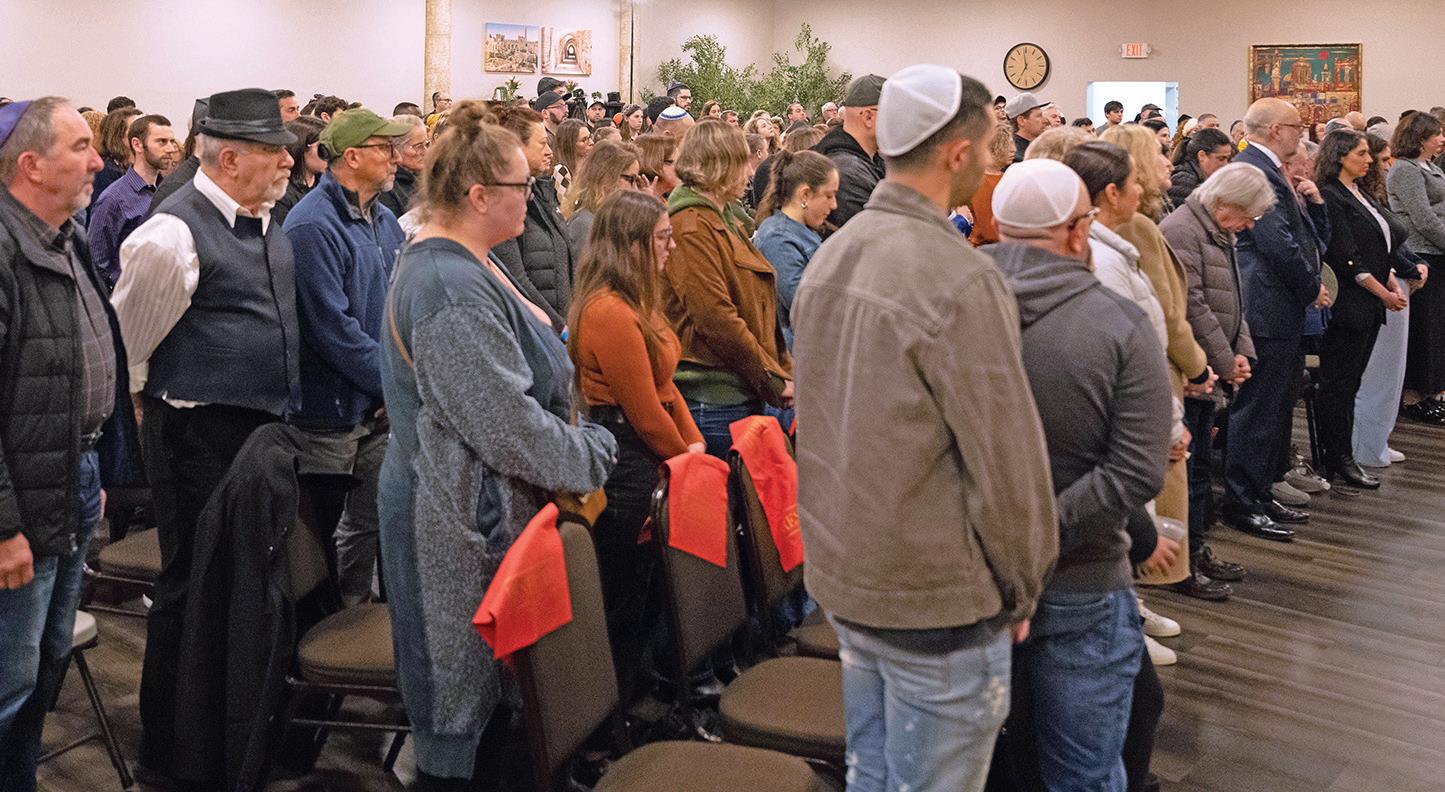
peace is not beyond our reach.”
“There shall be no more open season on Jewish blood.”
Marco Sermoneta, Israeli consul general
At the S.F. event, Marco Sermoneta, the Israeli consul general to the Pacific Northwest, bemoaned that violence against Jews was being normalized.
“ ere shall be no more open season on Jewish blood. And we shall never forgive,” he said.
Hundreds gathered across the Bay Area to share their grief days a er the bodies of
taken hostage on Oct. 7, 2023. e boys’ father, Yarden Bibas, was also

were returned Feb. 20. Hamas claimed it had handed over the remains of Shiri Bibas, 32, the same day, but Israel determined it was not her. Hamas returned Bibas’ body Feb. 21.
e anguish felt in Israel was expressed in Bay Area Jewish communities as people sought a place to express their heartbreak together.










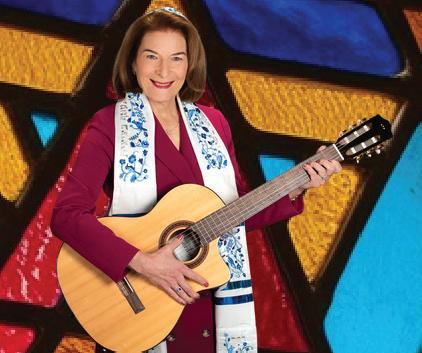


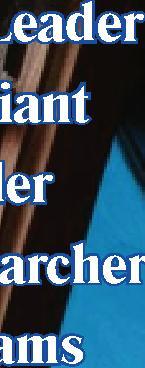
At the Menorah Center in the Richmond District on Feb. 23, many in the audience of 200 wept as speakers took to the lectern to address the crowd.
“When hostages are released, I want to rejoice,” John Rothmann, former KGO radio host, told those gathered. “When a hostage comes back dead, I want to cry.”
Earlier in the day, the Jewish community also gathered in Palo Alto’s Heritage Park, where the Israeli-American Council co-organized a vigil with OneTribeOneStar, a pro-Israel advocacy nonprofit that facilitates events for Jewish empowerment throughout the Bay Area.
About 150 community members and public o cials a ended the Palo Alto memorial, including state Sen. Josh Becker (D-Menlo Park) and Palo Alto City Council members Keith Reckdahl and Greer Stone.
“Even in this darkness, we must not lose hope,” Stone said at the event. “We must hold onto the belief that light will overcome the shadows, that justice will prevail, and that
“Our hearts break for the families and loved ones of Ariel, Kfir, Shiri and Oded. Our hearts break — but not our spirit. ese diabolical murderers will never have that,” Sermoneta said. “We will continue to fight against barbarism for the future of our civilization. We are determined to defeat those who fool themselves into thinking they could uproot us from our homeland through terrorism and bloodshed.”
Other speakers included Rabbi Shimon Margolin, who heads the Menorah Center of the Russian-speaking Jewish Community, state Sen. Sco Wiener of San Francisco and the Israeli American Council’s Bay Area regional director, Adi Hayun Perez.
Ron Barzilay, 24, a ended the vigil. He told J. that it was important for him to be there to avoid losing touch with what people are experiencing in Israel, which he recently visited.
“If there’s anything that this whole war has taught me is that it’s really di cult to grieve and process when life just goes on,” said Barzilay, who is a Moishe House resident in San Francisco. “It’s di erent when you’re in Israel. It’s more in the forefront.… It’s in the public consciousness.
He added, “I think that as a community, when these awful tragedies happen, we have to set aside time to acknowledge and just kind of feel and grieve together.” ■
Grab a grogger: It’s time to celebrate Purim! From carnivals to costume parades, there’s a Purim party for everyone. Check out the full list at tinyurl.com/PurimBayArea.
FRIDAY | MARCH 7
Fun Friday Story Time—PJ Library presents holiday story time, featuring “ e Purim Superhero” by Elisabeth Kushner. Followed by a physical education activity. At Oshman Family JCC, 3921 Fabian Way, Palo Alto. 4:155:15 p.m. Free, RSVP required. tinyurl.com/ purim-story-time
“Jr. Jews Purim Party”—Holiday celebration with stories, parade, pizza, cra s, dance party and hamantaschen. Costumes encouraged. Bring a box of mac-and-cheese to use as a grogger and then donate. At Osher Marin JCC, 200 N. San Pedro Road, San Rafael. 5-5:45 p.m. Free. tinyurl.com/jr-jews
SATURDAY | MARCH 8
“A Special Purim Morning”—Purim Shabbat for families with kids 5 and under, with Purim-themed cra s, singing, dancing, snacks and more. Costumes welcome. Presented by Kitchen Playground and Jewish Baby Network. At SF Friends School, 250 Valencia St., S.F. 10 a.m.-11:30 a.m. Free. tinyurl.com/purim-morning
SUNDAY | MARCH 9
“Family Cooking: Hamantaschen for Purim”—Hands-on baking workshop for kids and parents to learn to bake hamantaschen from scratch. At Oshman Family JCC, 3921 Fabian Way, Palo Alto. 4-5 p.m. $44.52. tinyurl. com/family-cooking-purim
SF Family Hamantash Bake—Workshop to roll, shape and fill hamantaschen. Presented by Chabad of the Neighborhood. At 85 West Portal Ave., S.F. 11 a.m.-12 p.m. $18, registration required. chabadneighborhood.square. site
“Purim ETZtravaganza”—Family-friendly Purim carnival with activities, pony rides and more. Kindergarteners and younger must be accompanied by adult. At Congregation Etz Chayim, 4161 Alma St., Palo Alto. 9:30 a.m. Free. Email aliza@etzchayim.org
Contra Costa Purim Carnival—Holiday celebration with games, pony rides, face painting, a ra e, food, costume contest and more. Presented by Contra Costa JCC, PJ Library and others. At B’nai Shalom, 74 Eckley Lane, Walnut Creek. 10 a.m.-1 p.m. $20 per child before March 7, $25 a er; under 2, free. ccjcc.org/upcoming-events
East Bay Purim Carnival—Holiday celebration with carnival games, face painting, hamantaschen, mishloach manot, Purimspiel, costumes and talent show. At JCC East Bay, 1414 Walnut St., Berkeley. 2-5 p.m. $36 per family. tinyurl.com/jcceb-purim-25
Purim Party in the Park—PJ Library, Tkiya and Jewish Gateways present sensory-friendly, outdoor Purim celebration for families with young children featuring music, snacks, books, cra s and more. Costumes encouraged. At Kennedy Grove Regional Recreation Area, 6531 San Pablo Dam Road, El Sobrante. 3-4:30 p.m. Free. tinyurl.com/purim-party-park
THURSDAY | MARCH 13
Family Purim—Holiday celebration for families with kids featuring a Purimspiel
puppet show for ages 6 and under and themed scavenger hunt for ages 6-10. Costumes encouraged. Presented by Urban Adamah, Chochmat HaLev, Wilderness Torah and Berkeley Moshav. At Urban Adamah, 1151 Sixth St., Berkeley. 5:30-6:30 p.m. $9-$36, sliding scale. tinyurl.com/ purim-scavenger-hunt
Purim Megillah and Dance Party—Holiday celebration with Megillah reading, dance party, tea lounge, music by Shamati and more. Costumes encouraged. Presented by Urban Adamah, Chochmat HaLev, Wilderness Torah and Base Bay. At Urban Adamah, 1151 Sixth St., Berkeley. 7-10 p.m. $24-$72, sliding scale. tinyurl.com/purim-dance “ e World Turned Upside Down”—Family-friendly Purim celebration with art activities, workshops, services, pizza dinner and hamantaschen tasting. Livestream option. At Congregation Sha’ar Zahav, 290 Dolores St., S.F. 5 p.m. $5 per person for dinner, registration required. tinyurl.com/purim-sz
FRIDAY | MARCH 14
“Purim in Israel”—Holiday celebration for
families featuring live Israeli music, Israeli style food, selfies at the “Western Wall,” kids activities and Megillah reading. At the Lent Chabad Center in San Mateo, RSVP for full address. 5:30-6:30 p.m. $5-$10. chabadnp. com/purim
SUNDAY | MARCH 16
Bernal Heights Purim Carnival—Family-friendly holiday celebration with carnival games, activities, songs, storytelling, mishloach manot-making and costume parade. Presented by Or Shalom Jewish Community. At Bernal Heights Playground, 500 Moultrie St., S.F. 10-12 p.m. Free. tinyurl.com/ bernal-purim
Purim Palooza—Holiday extravaganza with hamantaschen, games, mishloach manot, costumes, live music, cra s, holiday activities, adults-only learning and “Wicked”-themed Purimspiel. Presented by JCCSF, Congregation Emanu-El, King Knish, Melita and Friends, PJ Library, Repair the World and others. At JCCSF, 3200 California St., S.F. 10 a.m.-1 p.m. Free. tinyurl.com/ purim-palooza-25 ■
Ready to Meet Your Handsome Prince or Beautiful Princess?
Are you 70 to 80+ years young?
Are you a senior without a partner?
Finding the golden years not so golden?
We are starting a group for singles in the Bay Area who would like to meet someone. No fee. Just fun. Our first event is coming soon!
Contact Jerilyn.paley@gmail.com or Nancycherniss@aol.com

Looking forward to meeting you!





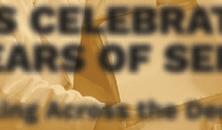
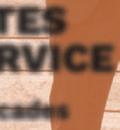

Does your organization have an anniversary coming up? Do you want to celebrate its rich history and share your successes with the Jewish community?
Let J. help you tell your story through our archives, going back 130 years to our founding as The Emanu-El in 1895. J. can help you bring your organization's past to life through stories, editorials, advertisements and more.
If you have an anniversary coming up, let us know! Create a memorable chronicle of your organization’s proud history, adding meaning to celebrations and anniversaries, whether marking 25, 50, 75, 100 years or more! Contact Steve Gellman [steve@jweekly.com] at least six months before your milestone
Let us help you create an
Patricia C. and Richard M. Briskin
Sy Aal
Layli and Teddy Adelstein
Hans Adler
Sylvia Alderman
Marilyn Allen
Elizabeth Alpert
Nancy Alpert*
Cheryl L. Anton
Amir Axelrod
Sheila and Murray Baumgarten
Jay Begun
Joanna and Allan Berland
Tila Bibliowicz
Paula Birnbaum and Neil Solomon
Sharon L. Bleviss
Debbie Bloomberg
Liz and Richard Bordow
Jane and Jeff Boyarsky
Mae Bragen
Susie Brenner
Kay and Arthur Brief
Susan and Jeffrey Callen
Joyce and Ari Cartun
Joseph Caston
Steven Clair
Andrew Cohen
Skylar and Peter Cohen
Jennifer Colosimo and Robert Belzer
Anne Cook and Jeremy Solterbeck
Rabbi Mychal and Kirsti
Copeland
Mervyn K. Danker
Della Dash
Mark S. Davidow*
Sharon H. Davis
Ruth DeHovitz
Win Derman
Stuart Dick
Mark Eaton
Liz Einbinder
Jessica and Michael Eiselman
Shelley Eisenman and Elisa Friedlander
Riva Erenstein
Karen Erlichman
Denise Field
Sue and Gary Fishtrom
Suzanne Flecker
The Foremans
Deborah and Jonathan Frank
Joan Frenkel
Roberta Friedeberg
Susan Friedeberg
Monica and Henry Friess
Mah Frouzan
John Galen
Olga Galperin
Teri Gerritz
Steven Gerstle
Shira and Donald Gilbert
Richard B. Glickman
Rebecca Golbert and Doug Crane
Sandra and Robert Goldberg
Joan Gordon and William Cohen
Rabbi Sarah E. Graff
Michele and Michael Greenfield
Susie and Alan Greinetz
Lyudmila and Vladimir Grigoryev
Marsha and Ralph Guggenheim
Diane S. Gyuricza
Jamie Haft
Judy Hahn and Ben Lerman
Diane and Ephraim Hirsch
Philip Horowitz
Estie Hudes
Penni Hudis
Randi and Jim Hutchinson
David Cornfield
Eileen Ingenthron
Marilyn Jacobs*
Richard Johns
Yeva Johnson
Andrea G. Julian
Judy and Michael Kapiloff
Lisa and Martin Kharrazi
Stephen C. Klein
Rachel and David Kliger
Monteser D. Kohn
Peggy and Neil Kostick
Rosalinda Kramer
Robert W. Krensky
Doris and George Krevsky
Caryl and Ken Kurtzman
Rabbi Noa Kushner and Rabbi Michael Lezak
Lynn and Ron Laupheimer
Susan and Fred Lebe
Eve and Jerry Lerman
Jerrold Levine
Rabbi Chai Levy
Deborah Pollak Levy
Tom Levy
Galina and Lev Leytes*
Beverly Licht
Laurie Lippin
Louise and Mike Lipsey
Sandra Lipsman
Miriam Tordjman Lite
Barbara Litt
Maxine Litwak
Vicky Loel and Michael Semler
Jody London and Mike Aronson
Steven Ivan Lurie
Margalit Lutskevich
Elyse and Ivan Maltz
Judy and Rick Markoff
Mendy Marks
Joyce Maskell
Susan and Willy Mautner
Julie Levine
Tina Sharkey*
Rachel McClelland
Barbara Merino
Robin and Philip Metz
Gayle Miller
Russell Morris
Sonia H. Moss
Marcia Fisher Muggli
Anita and John Naylor
Anne Marie Noonan and Jeffrey Wohl
Laura and Stephen Olson*
Larisa Oryol
Barbara Paley
Michelle Pearl
Virginia and Michael Peiser
Aliza and Raanan Peleg
Saralie Pennington and Tom Herz
Judy Penso and Marc Manason
Jan Pepper
Noreen Pheffer
Jeffrey Piade
Edith L. Piness
Wendy and Fred Pomerantz
Evelyn Posamentier
Toby and David Reitman
Paula Romberg
Diane Rosenberg
Dorie Rosenberg
Jerry Rosenblatt
Isadore Rosenthal
Sylvia Sabel
Esther Saidman and David Thorne
John F. Sampson
Lesley and Stanley Samuels
Steve Scheier
Gail and Frederic Schwartz
Susan and David A. Schwartz
Madeline and Steven Shakin
Stephen Shields
Tina Shih and Gordon Strause
Tiffany Shlain and Ken Goldberg
Margaret Silverman
Lisa Kay Solomon
Mark Solomons
Ruth Souroujon
Spieler Family
Judy and David Stein
Cecile Steinberg
Sandra and Jon Stern
Liz Sufit and Howard Scott z”l
Laura Sutta
Ellen and Eugene Switkes
William A. Tarran
Libby and Michael Thaler
Gail Todd
Stephanie and Jack Ventura
Alix Wall
Rabbi Amy Wallk and Rabbi Mark Cohn*
Irene Wapnir
Martin Wasserman
Sharon and Steven Wasserman
Steve Waxman
Ruth Donig-White and Robert E. White
Paula White-Reddy
Lori and Bob Wick
Maxine Winer
Amy Wollman and Gerald Berkowitz
Frank Yellin and Mark Showalter*
Jane and Stacey Zones
Anonymous *A Donor-Advised Fund of the Jewish Community Federation and Endowment Fund
NIVA ASHKENAZI | J. STAFF
Rabbi Jamie Hyams grew up in what she called a “fanatical cycling family.”
Her passion for bicycling carried into her adult life. At 35, she biked her first “metric century,” a ride of 100 kilometers, or roughly 62 miles. Nearly three decades later, she has now combined her love of cycling with her profession as a rabbi.
Hyams is the founder of Chai Cycle, a Jewish cycling community that infuses weekend rides with thoughtful discussions about Jewish texts and ideas.
She was ordained at California’s Academy for Jewish Religion, a “transdenominational” rabbinical school that draws wisdom from all Jewish movements without adhering to any specific denomination. For a long time, she knew she wanted to take an unconventional approach to the rabbinate.
In fall 2023, Hyams began a two-year program at the Clergy Leadership Incubator, which trains rabbis for roles in organizational leadership. That’s where she began developing the concept for Chai Cycle, which she envisioned as a program to give Jewish cyclists an opportunity to apply the teachings of the Torah and Talmud to their everyday lives, outside of a traditional synagogue setting.
Chai Cycle, which will mark the anniversary of its first ride in March, has attracted participants who come from a variety of Jewish backgrounds, including secular ones.
“I realized that [people] want to come together in a community, but the traditional ways of affiliation … they’re all bounded by four walls, you have to go to them,” Hyams told J. in mid-February. “And this is where they already were — on their bikes in communities. The question was how did I want to tap into that?”
Today, it’s clear that Hyams has clipped into something valuable for those looking to connect with Judaism in creative ways.
Lisa Halperin, 70, said she grew up with a strong cultural connection to Judaism and the Jewish community, but without much religion. After the Hamas attack of Oct. 7, 2023, she felt a need to bond with other Jews.
“This is where they already were — on their bikes in communities.”
Rabbi Jamie Hyams
“It’s nice having that connection,” Halperin told J. “This was an opportunity to not only meet new people. … But then to have the added benefit of these wonderful discussions … I’ve learned a lot.”
When she is not leading Chai Cycle’s twice-monthly Sunday rides, Hyams splits her time between her home in San Ramon and the Mother Lode Jewish Community, serving a small Jewish community in four mostly rural counties in Northern California: Amador, Calaveras, Tuolumne and Mariposa.
Hyams said the rides of 25 to 30 miles are kept at a moderate pace: a rider may have a slightly elevated heart rate but should still be able to hold a comfortable conversation. At the halfway point in the ride, the group convenes at a rest stop for a half-hour break to discuss the topic of the day. Those topics have included Joseph’s connection to

climate change, wildfires and liability, the acquisition of wisdom and restaurant etiquette according to the Talmud.
Hyams said she feels that the repetitive motion of cycling allows her to clear her mind. To prime the brain for thoughtful discussion later, Hyams gives the riders a
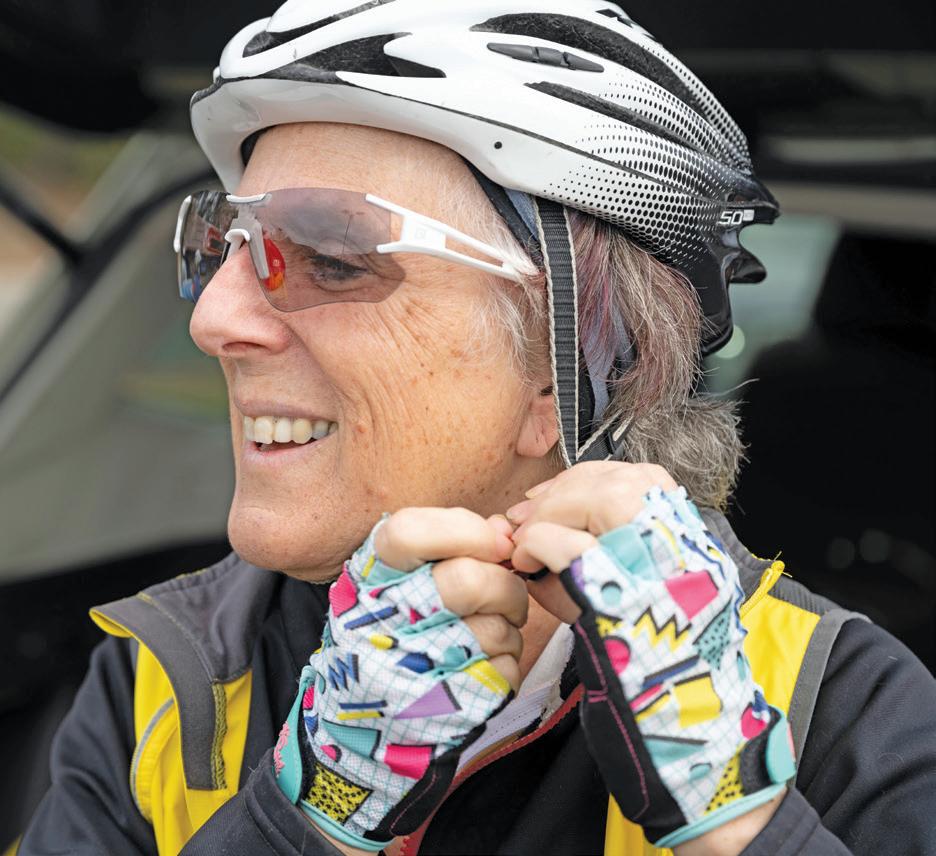
preview of the discussion topic before they start the ride. Then, they can consider the ideas while they pedal.
“When you’re riding along, and you’re in the zone, and you get into that rhythm, the noise falls away,” Hyams said. “It’s different than going out to coffee and talking, because in those moments, you’re all in your head… But when you’re noodling and you’re riding… clarity often comes.”
Now, Hyams is looking to expand Chai Cycle’s reach beyond Alameda and Contra Costa counties, where she launched the group, while staying consistent with its core values. One of her inspirations is the Christian Cycling Network, which has “spokes” all over the country.
She is getting a helping hand from Jim Mizes, former CEO of several major food companies including Jamba Juice,
Taco Bell and Noah’s Bagels. The two have been cycling together since 2007, and Mizes helped Hyams design Chai Cycle.
Mizes, like Halperin, said Chai Cycle rides have helped him form community.
“The beauty of this time of Sunday morning is with kind, caring, Jewish people, with a little bit of Jewish study to go with it,” said Mizes, who is 69 and now retired. “It has slowed me down. … This is a kinder, gentler, more inspiring cycling event, which is beautiful.”
Mizes is applying his expertise in scaling up companies as he and Hyams determine the best way to expand Chai Cycle, while sustaining its original parameters of keeping the group size at 10 to 12 riders, so that everyone can participate in the discussion.
“As long as there’s a good structure around the teaching, and some good questions, then anyone can lead it, I think,” he said.
Chai Cycle registered as a nonprofit in June 2024. Its regional expansion is already in the works, with future rides scheduled from March through June in Los Altos Hills, in collaboration with the Oshman Family JCC and Congregation Beth Am; through San Francisco and Marin County with Congregation Beth Sholom; and in Sacramento with Mosaic Law Congregation.
Chai Cycle currently has around 25 members who have paid a $50 annual membership fee, which is strongly encouraged for regular riders but not required to participate in the rides. Interested riders should have at least some cycling experience and come with a helmet, water bottle and tire change kit. Participants also get access to discounts at local bike shops in Pleasanton and Dublin.
“Each group is going to develop its own personality.… Sometimes [the group leader] will be a rabbi, sometimes it might be someone else,” Hyams said. “What they’re all going to have in common is that they are intentional Jewish communities with cycling, conversation and learning at the core.” n
SUE FISHKOFF | CORRESPONDENT
Ah, those halcyon days of summer camp. Singing, swimming, campfires, cooking… Wait, cooking? That wasn’t part of the camp experience of today’s parents and grandparents. But over the past 10 to 15 years, as the environmental movement and Jewish farming projects have gained wider currency, more Jewish day schools, JCCs and synagogues have planted vegetable
Eden Village West, founded in 2018, has had a robust farming and environmental focus since the beginning.
“We’re not a ‘farm camp,’ but we incorporate Earth-based Judaism into everything we do,” said Cohen, who estimates that “50 to 60 percent” of camp activities involve growing, harvesting and preparing food.
In addition to more typical camp activ-
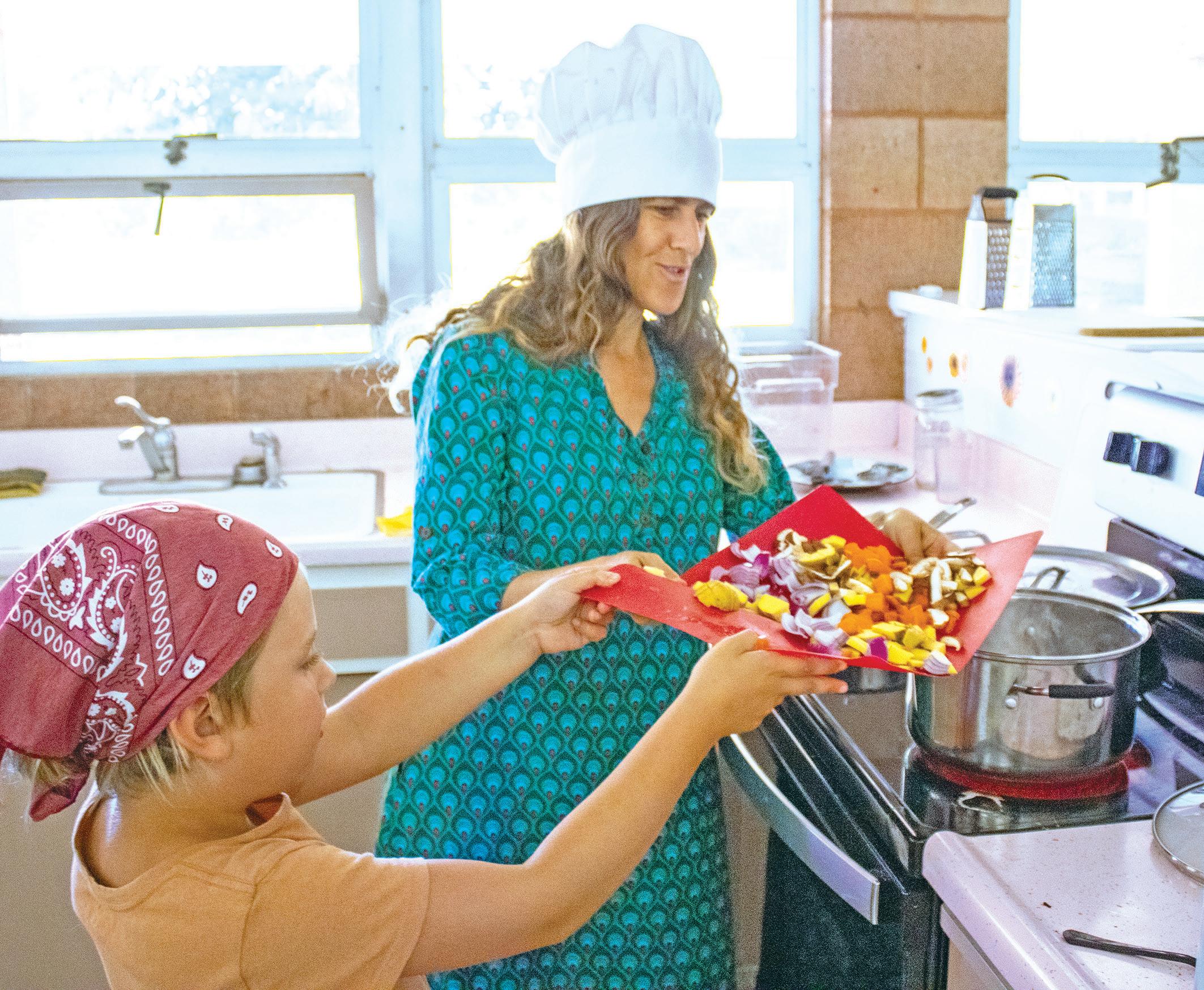
gardens to teach children about caring for the Earth and its bounty.
That has moved into the world of Jewish summer camps as well. Particularly at overnight camps where kids spend weeks onsite, campers are growing, harvesting and cooking fruits and vegetables into tasty dishes to share with their peers.
It appears to be a growing trend.
“Camps are doing it more often,” said Brad Cohen, executive camp director at Eden Village West, an overnight Jewish camp along the Russian River in Sonoma County.
ities such as swimming, archery, art and music, the 150 campers each summer can choose to take part in organic farming, culinary arts and the study of herbs.
“Some kids love farming, some prefer cooking, others like to create different salves with herbs we grow,” he said.
The cooking classes take place in a dedicated Culinary Arts Center and Bakery, with six small, fully equipped kitchen areas where campers “learn all the culinary skills,” he said. “It’s like a 1950s home economics class.”
Learning to cook and prepare meals

teaches campers a lot, Cohen said. “Besides basic culinary skills — how to cook, how to chop and sauté — it gives them confidence,” he said. “It’s an opportunity to be creative. And it gives them a chance to feed other people, which is part of taking care of your community.”
This summer, two other Northern California Jewish overnight camps are ramping up their own gardening and cooking programs.
URJ Camp Newman, a Reform camp in the hills of Santa Rosa that serves more than 1,400 campers a year, relaunched its organic garden called Operation Kibbutz Yarok last summer. It had been destroyed, along with most of the old camp, by the Tubbs Fire in October 2017. The replanted garden contains a wide variety of produce and houses farm animals such as goats, pigs and chickens that campers learn to care for.
This summer Newman will unveil an outdoor kitchen at the site, with sinks, food
prep areas and picnic tables, where campers will prepare food with produce they harvest.
Campers from third grade and up will have access to the outdoor kitchen, and two of the teen programs will have it as a main focus.
The program is tied in to the camp’s Jewish and social values, said Rachel Slaton, Newman’s communications director.
“Our goal is to be able to process as much of our food waste as possible through composting and community education involving campers in the full cycle of consumption, recycling, composting, planting and harvesting,” Slaton said in an email to J. “Campers will learn … why these are important and to be more mindful, weaving in values of tikkun olam and a shared responsibility to care for the Earth.”
The biggest unveiling this summer, however, will take place at Camp Tawonga in the Yosemite foothills, which is just
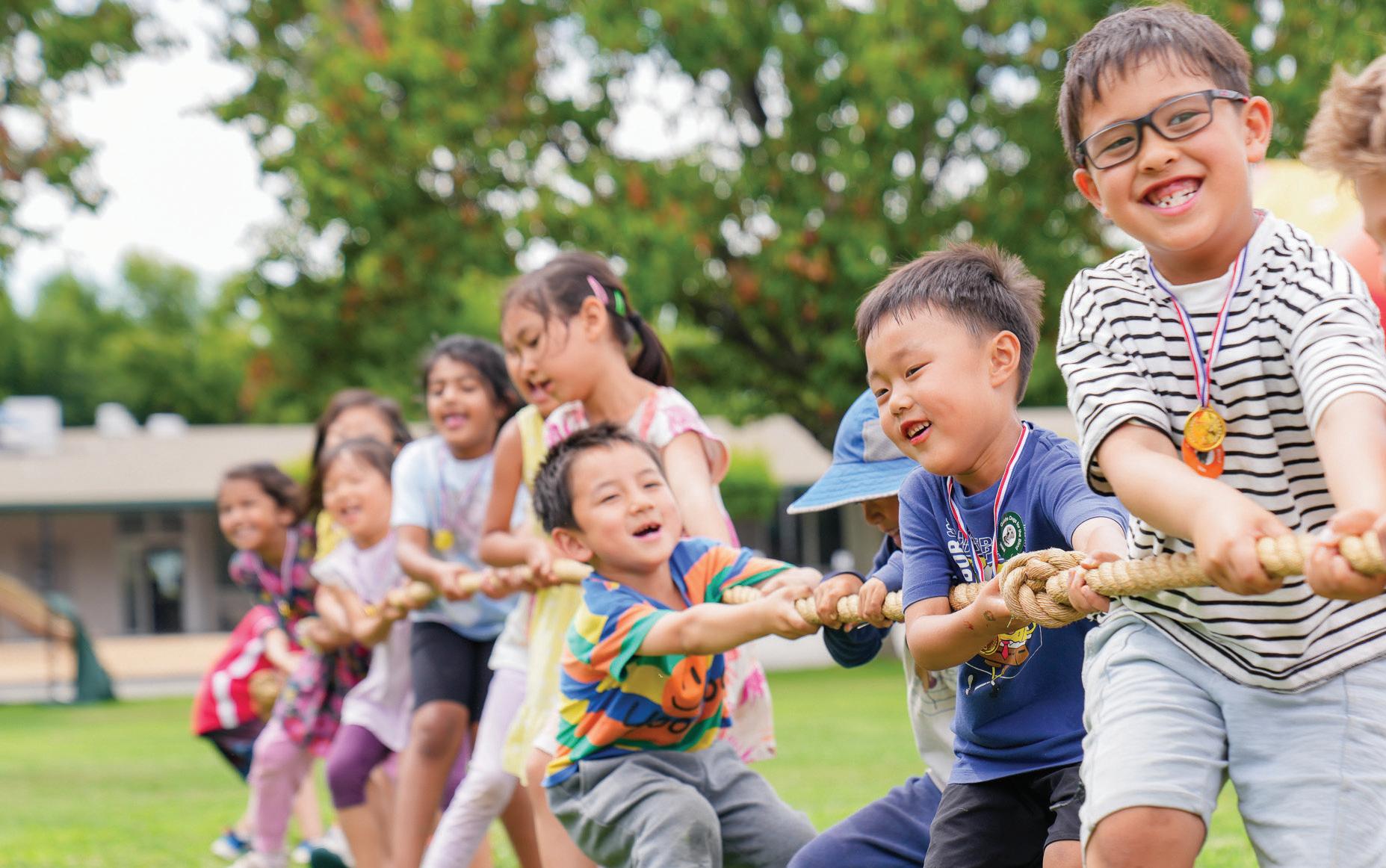

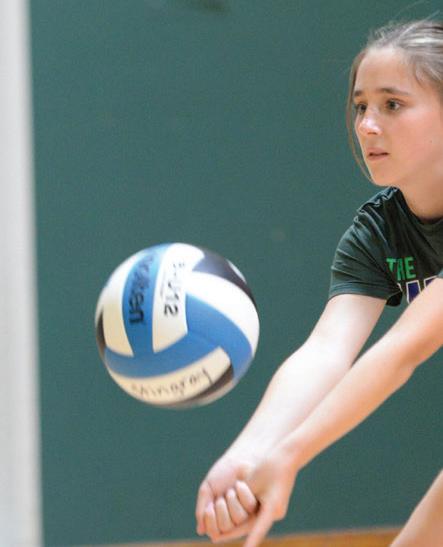

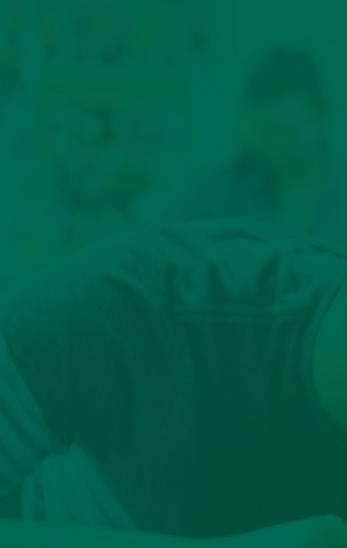


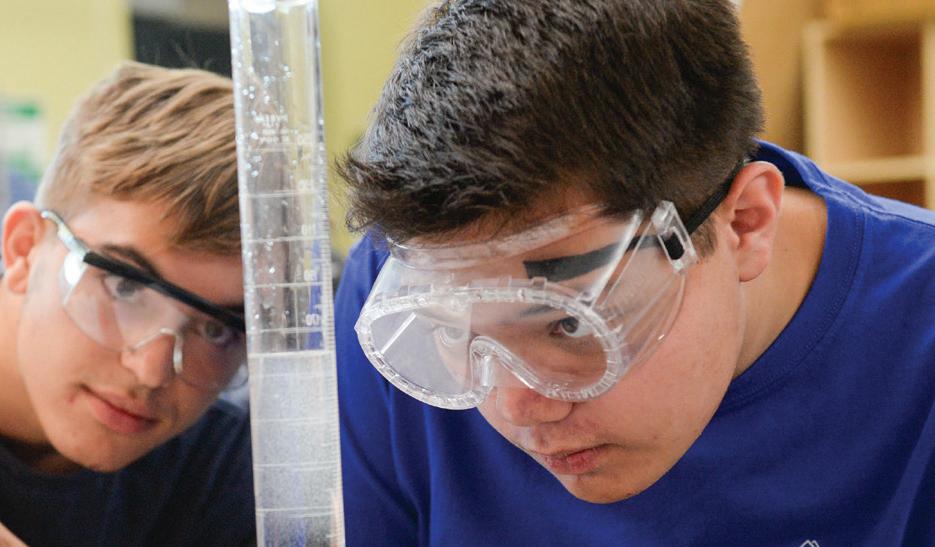
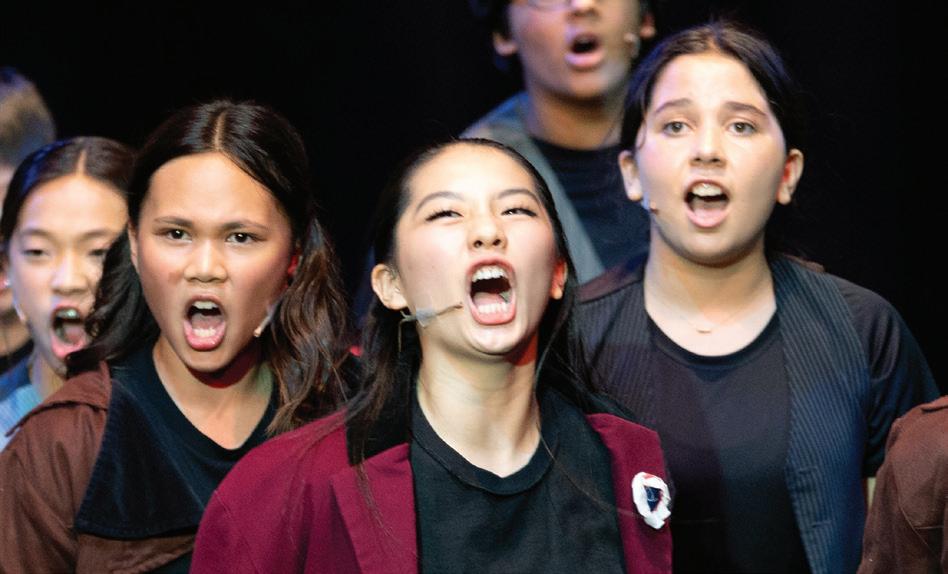

from page 16
completing construction of a new Garden Kitchen that will house the camp’s expanded culinary arts program.
Assistant camp director Aviva Maslow said that Tawonga has had a “robust vegetable garden” for years and has always done some cooking programming, “but it was limited” by the lack of a dedicated facility and expert sta .
e new Garden Kitchen, built right next to the camp’s organic garden, will be supervised by a culinary expert, she said. Up to 24 apron-clad campers at a time will be able to work at the chef stations and learn to prepare a wide variety of dishes, most of them “Jewish or Israeli,” Maslow said. But even those that are not specifically Jewish will be accompanied by Jewish teachings related to holidays or di erent Jewish cultures around the world, she said.
“Participants will engage in every step of food preparation, from harvesting produce in our organic garden to cooking meals inspired by global Jewish communities,”
“Campers will have a hands-on farmto-table experience, creating dishes using milk from our goats, eggs from our chickens and herbs, fruit and veggies from our garden.”
Aviva Maslow, Tawonga assistant camp director
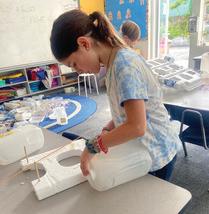










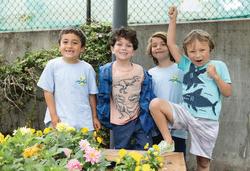




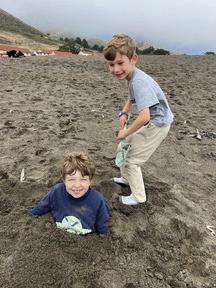






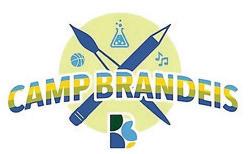







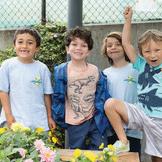
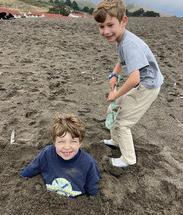


from our goats, eggs from our chickens and herbs, fruit and veggies from our garden,” she said. “ rough spending time in the garden and cooking together in the new kitchen, campers will connect with Jewish values and intergenerational traditions.”


And as with Eden Village West and Camp Newman, there is a strong environmental aspect to the culinary program at
appreciation and insight into all the work that goes into preparing the food that we eat at camp.”


“ is will be a fully operational, fully

tering Kindergarten through 5th grade, rafts, STEM, games, and field trips

sfbrandeis org/camp or www.sfbrandeis.org

Ometz Lev We act honestly, responsibly, and courageously.

Tikkun Olam

We embrace our collective responsibility to help repair the world.




When Tawonga was designing its culinary arts program and the new Kitchen Garden, camp leaders looked to other successful children’s farming and cooking programs in the area. at included, Maslow said, consulting with Eden Village West and with the Berkeley-based Edible Schoolyard Project, which was created by Alice Waters of Chez Panisse fame to bring food awareness to public schoolchildren.
Eden Village was glad to share what it knew, said Cohen.

“ at’s the wonderful thing about Bay Area camps,” he said. “We all support each other. It’s not about competition.” ■







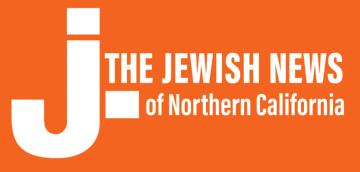



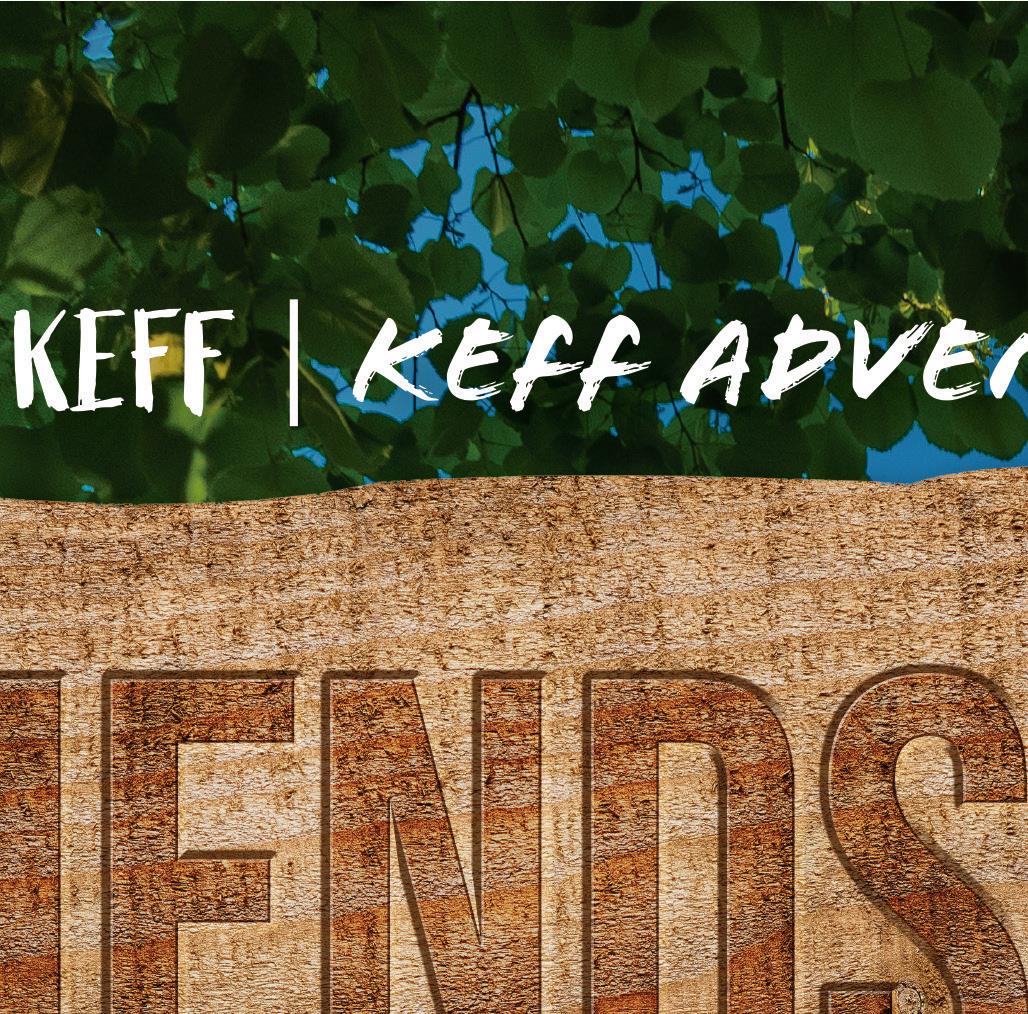





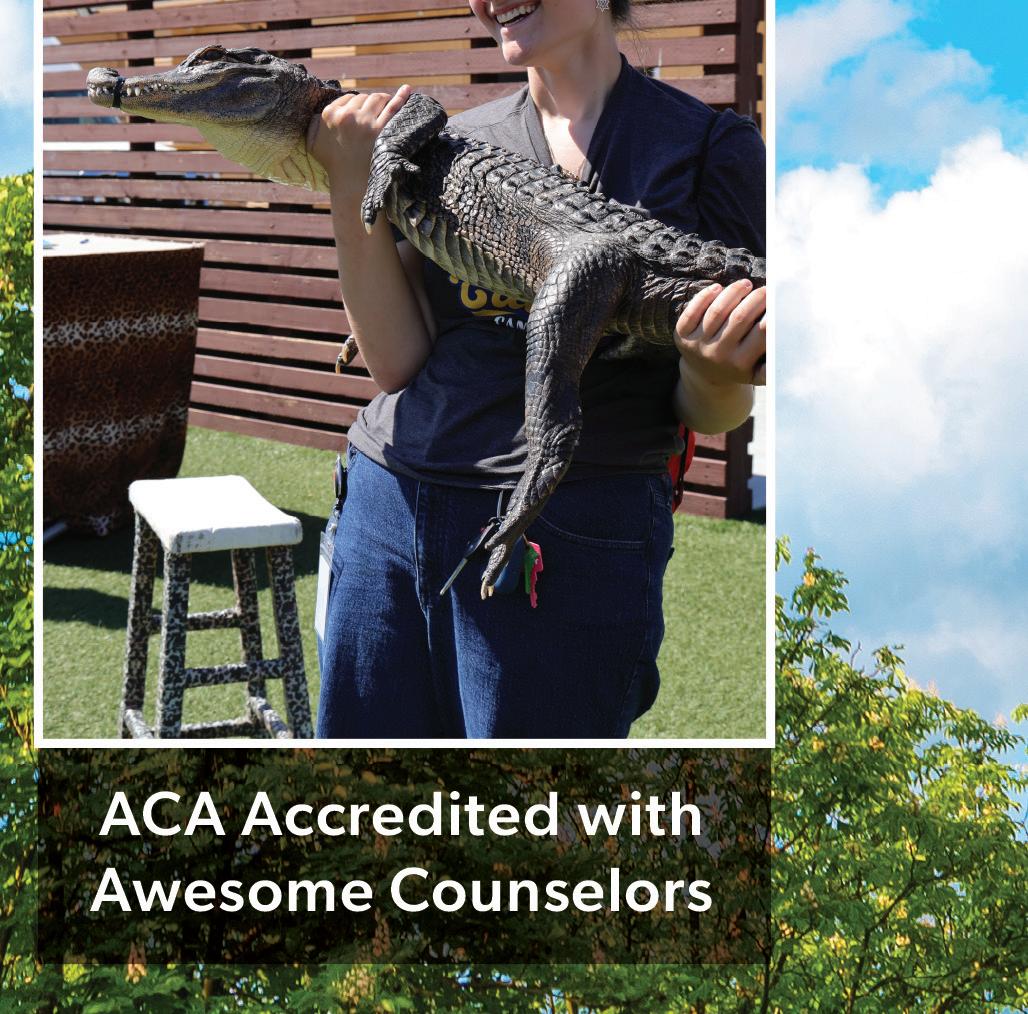
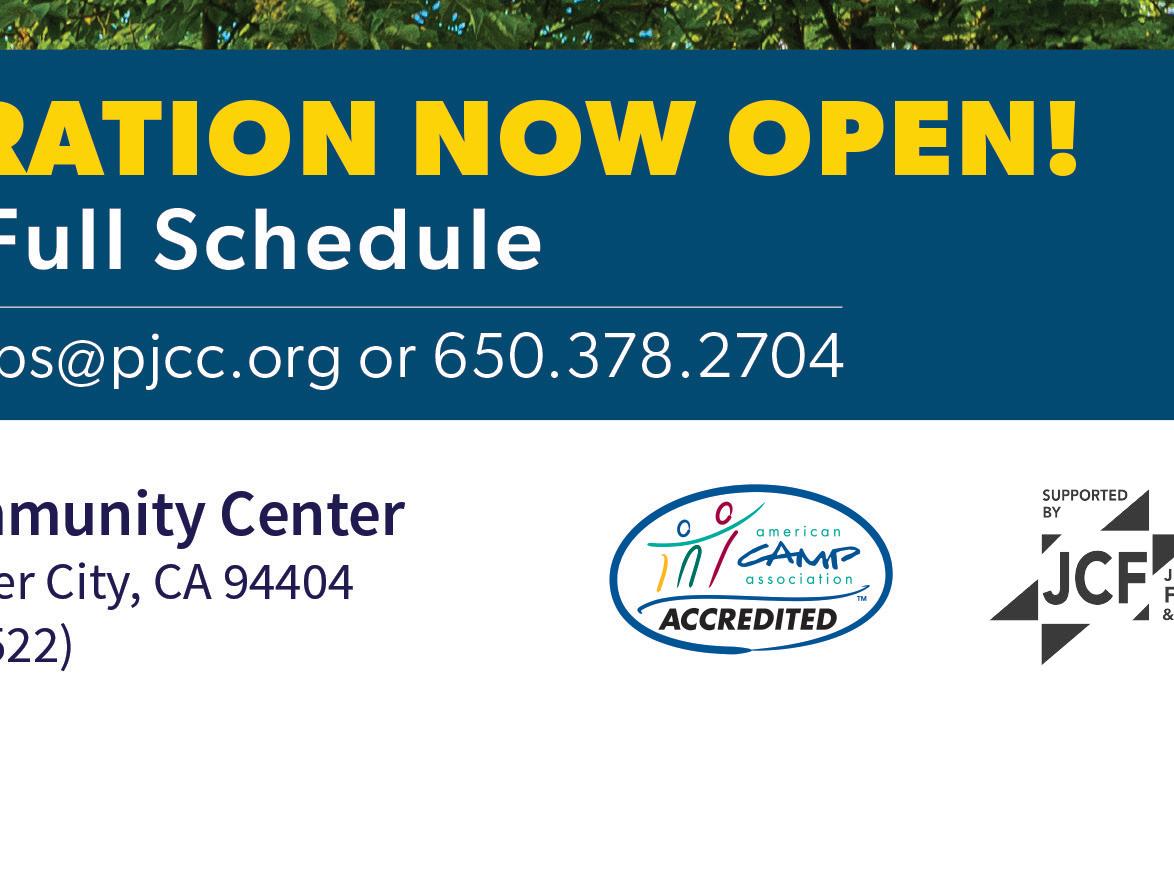

VIVIEN BRALEY & ELLEN HOLDERMAN | GUEST CONTRIBUTORS
It is magical when parents read to their children and even more so when young readers are inspired by the books. Jewish tradition is full of stories that spark conversations and motivate the entire family to explore and celebrate what they love about Jewish life. In these books, Jewish identity, pride and joy are expressed through the celebration of family traditions, holidays, rituals, community and a deep connection to heritage, even in the face of adversity.
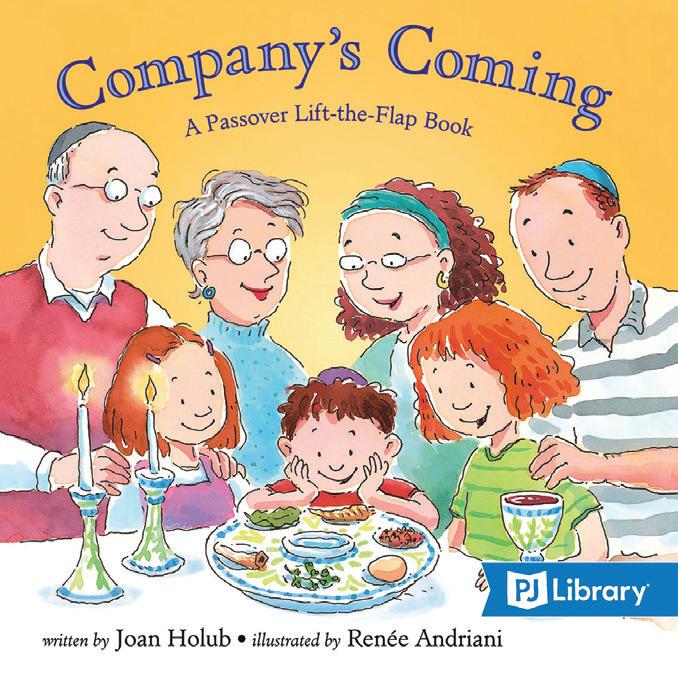
At PJ Library Bay Area, a program of the Jewish Community Federation and Endowment Fund, we know the power of Jewish stories. Every month, we send free Jewish books to Bay Area families with children, from newborns to age 12.
Here are some of our favorites showcasing the vibrancy of Jewish life and how Jewish identity can be a source of happiness and resilience.
By Joan Holub
Illustrated by Renee Andriani-Williams
Penguin Random House; ages 2 to 3 years
Family and friends arrive to visit and take part in a Passover celebration. The Four Questions are asked, foods on the seder plate are sampled, and the afikomen is found.
Even the youngest children take part and create lifelong memories. This is how Jewish tradition and values are conveyed from one generation to the next.
“Here
By Lesléa Newman
Illustrated by Susan Gal Abrams; ages 3 to 4 years
The cycle of the Jewish year is filled with joy, significance and wonder, especially for the youngest children encountering holidays for the first time. As leaves turn gold, flutter to the ground and are ultimately replaced by fresh green buds, we follow the Jewish year. Our planet has distinct seasons, and the Jewish year does, too. With every new season, we grow a little more and experience the holidays in new ways.
“Dance the Hora, Isadora”
By Gloria Koster
Illustrated by Barbara Bongini Apples & Honey; ages 4 to 5 years
Dora loves her dance class. She learns dances from all across the world from her teacher and classmates. But it isn’t until she goes to her cousin’s wedding that she learns a favorite new dance: the hora! As Dora’s grandma tells her, it’s easy. All you have to do is “let the joy sweep you along.”
“On Friday Afternoon: A Shabbat Celebration”
By Michal Babay
Illustrated by Menahem Halberstadt Charlesbridge; ages 4 to 5 years
Although Shabbat is a time for rest, preparing for it can be anything but restful. One disaster leads to another for Leelee and her dog Pickles. But with a lot of spirit (and some help from friends and family), they are ready to enjoy a sweet Shabbat.
Books for bigger kids (5-8)
“Bagels for Benny”
By Aubrey Davis
Illustrated by Dusan Petricic Kids Can Press; ages 5 to 6
While working in his grandfather’s bakery, Benny learns the joys of giving, receiving, caring and expressing gratitude. Kindness is contagious. That is what Benny and his grandpa find when they hear a poor man promise to help others as he has been helped. Performing mitzvot (Hebrew for “commandments” or “good deeds”) can set in motion a chain reaction of kindness

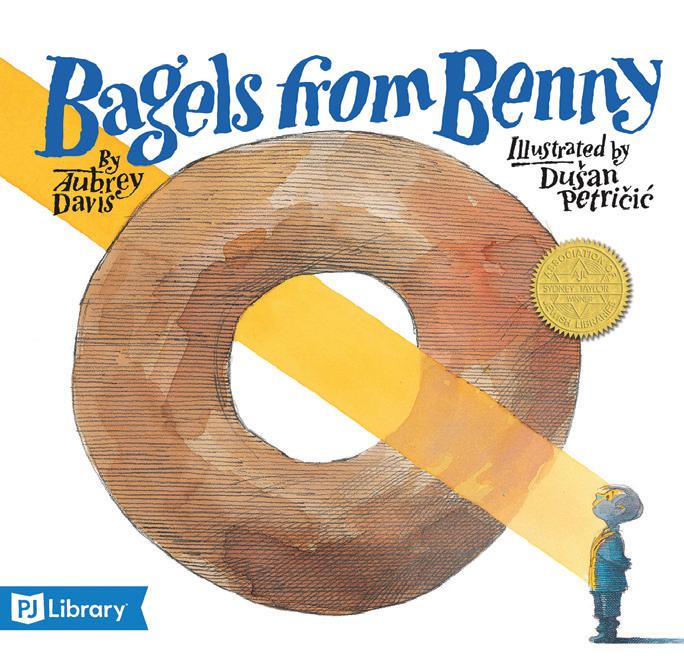
known in Hebrew as mitzvah goreret mitzvah – “one good action leads to another.”
“I Say Shehechiyanu”
By Joanne Rocklin
Illustrated by Monika Filipina Lerner; ages 5 to 6
When you are a small child, life is a series of firsts: first steps, first words, first teeth, first snow. Jewish tradition has a special prayer, the Shehechiyanu, that recognizes the importance of every first. is book explores some of the many new experiences celebrated by a child in the course of a year.

By saying the Shehechiyanu, we express our gratitude for life itself as well as for individual moments we experience.
“Queen of the Hanukkah Dosas”
By Pamela Ehrenberg
Illustrated by Anjan Sarkar Macmillan; ages 5 to 6
Sadie and her brother are part of a family with both Jewish and Indian background, so at Hanukkah they eat dosas, traditional Indian pancakes, instead of latkes. When they get locked out of their house just before their Hanukkah party, the protagonist’s quirky li le sister, Sadie, draws on her special talents and uniqueness to save the day.
“Not
By Madelyn Rosenberg and Wendy Wan-Long Shang
Scholastic; ages 10 and up
Sixth-graders Lauren and Tara have always done everything together so it’s only natural that they both try out for their middle school musical about an “all-American” girl. Tara gets the lead role, as usual, because in the teacher’s mind Lauren, half-Jewish
and half-Chinese, does not fit the image of an “all-American” girl. Lauren is hurt but resolved to support her friend. Lauren’s two grandmothers are furious, though, and they intend to do something about it.
“A Place at the Table”
By Laura Shovan and Saadia Faruqi Houghton Mi in Harcourt; ages 10 and up Elizabeth and Sara are both in sixth grade and are both worried about their mothers. But the similarities end there. e book explores the friendship of the 11-year-old girls as they grapple with family dynamics, school and friendship challenges and a growing awareness of racism. ey also need to overcome their di erences and agree on an award-winning recipe for their school’s international food festival. rough it all, they learn about themselves, the meaning of friendship, and how to claim their space in the world.
“How to Be a Mensch”
By Catherine Newman Illustrated by Debbie Fong Storey; ages 9 and up is how-to manual is a version of Catherine Newman’s book “How to Be a Person.”

Chapters cover life skills such as how to care for people, pets and plants; how to cook for Shabbat; how to clean your clothes; and how to manage money. Cartoon-style illustrations add to the accessible, kid-friendly style. ■
Vivien Braley and Ellen Holderman oversee and manage PJ Library Bay Area, a program of the Jewish Community Federation and Endowment Fund. Learn more and sign up at pjlibrary.org/ jweekly.






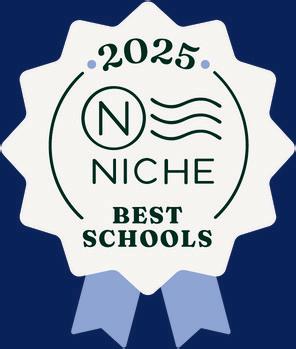
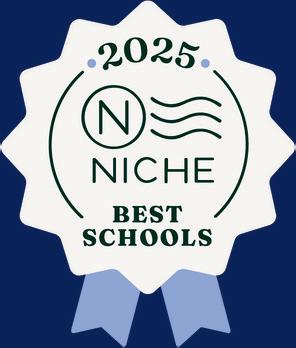


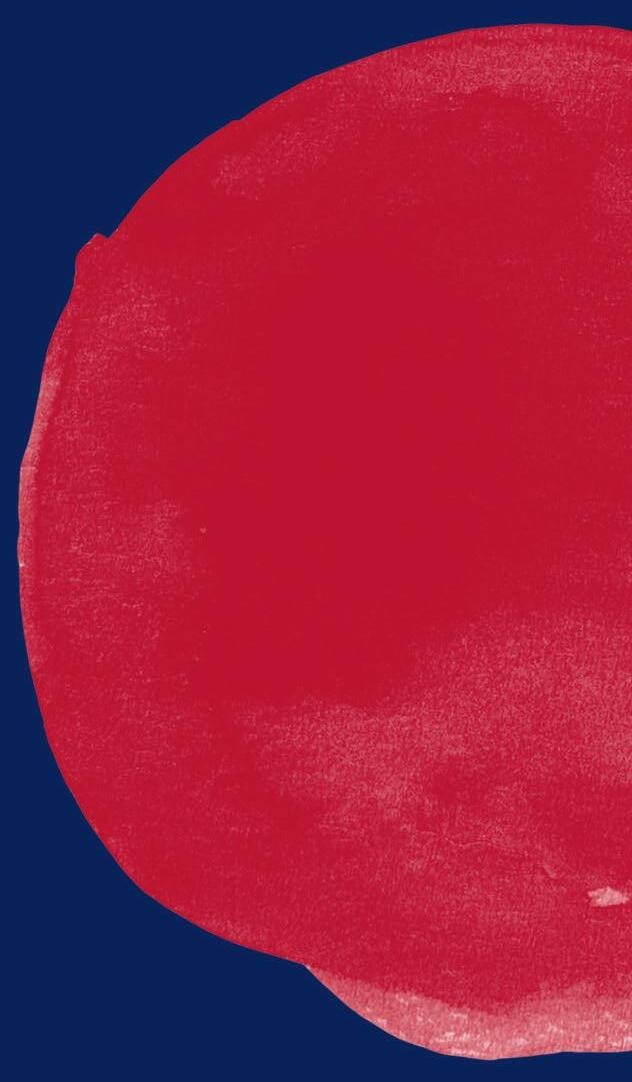

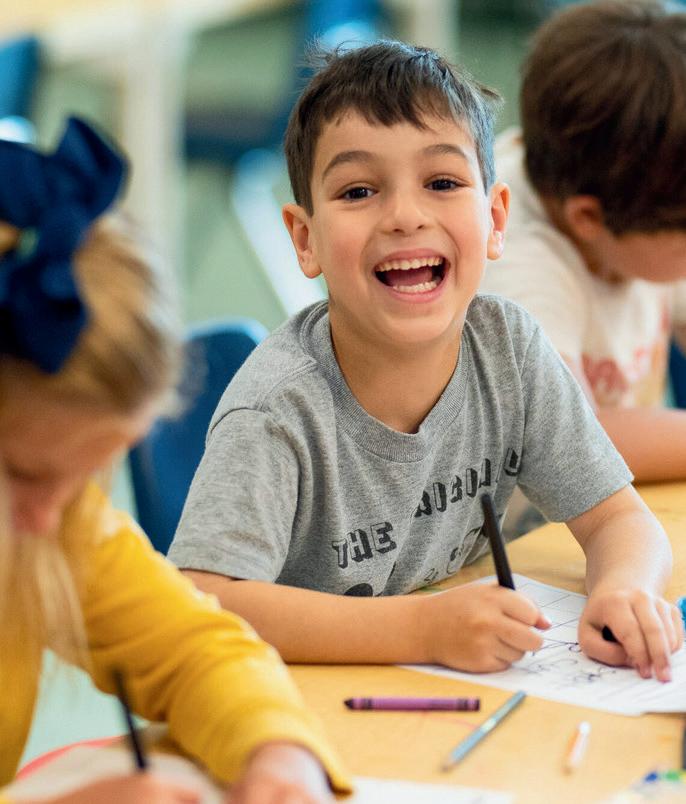

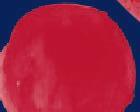
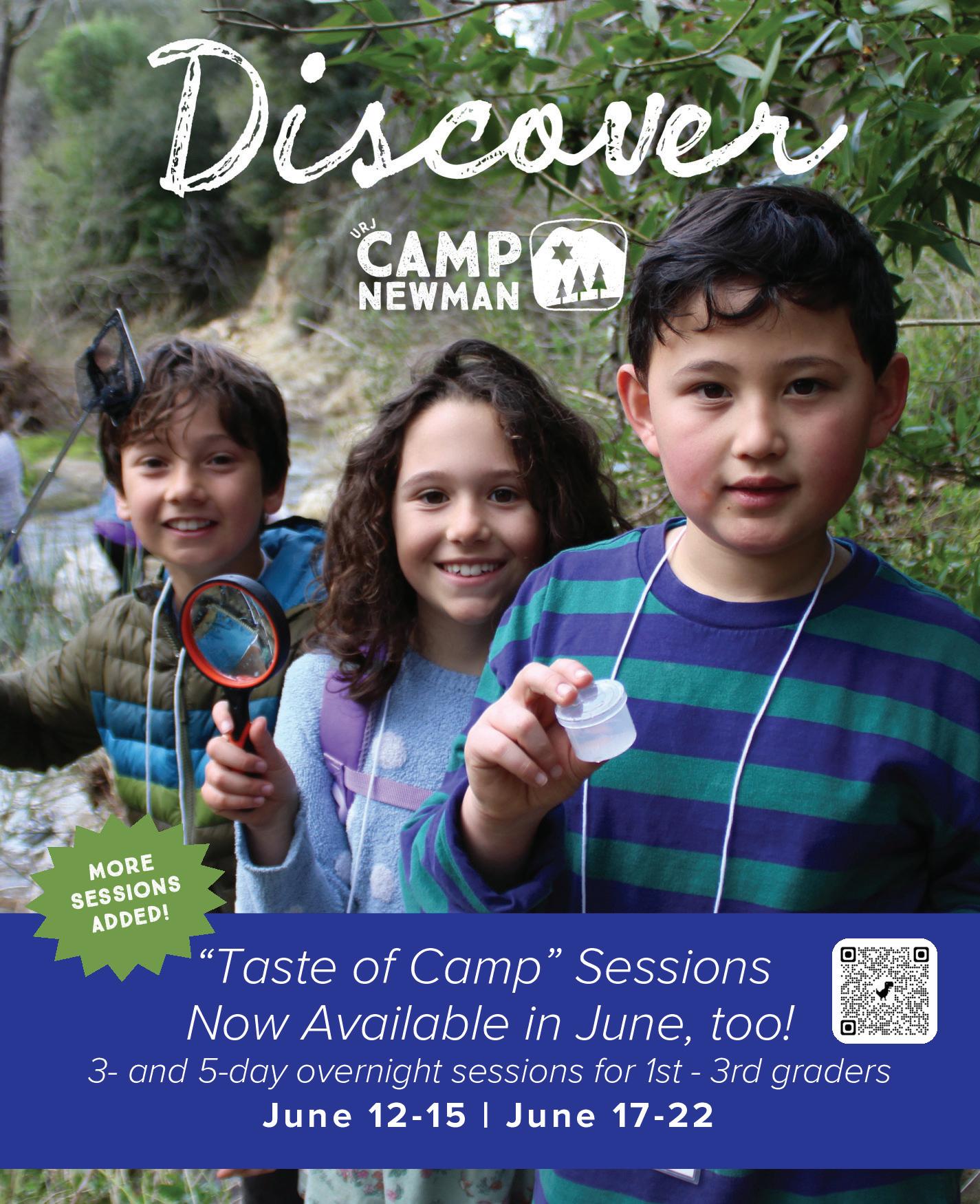
ONGOING
SACRAMENTO JEWISH FILM FESTIVAL—26th annual festival, with livestreaming through March 9. sacjewishfilmfest.org
EAST BAY INTERNATIONAL JEWISH FILM FESTIVAL—30th annual festival is streaming 16 films through March 20, with in-theater screenings of “Bad Shabbos” and “Monsieur Batignole” March 16 at the Vine Cinema and Alehouse in Livermore. $180 festival pass, $12$15 individual films. eastbayjewishfilm.org
TUESDAY | March 11
“TORN”—Documentary exploring the reactions to the hostage poster campaign in New York City following the Oct. 7 Hamas attacks. Followed by Q&A with director. At Oshman Family JCC, 3921 Fabian Way, Palo Alto. 7:30 p.m. $29. paloaltojcc.org
THURSDAY | March 13
“STRIPPED FOR PARTS: AMERICAN JOURNALISM ON THE BRINK”— Documentary about a secretive hedge fund plundering American newspapers, as well as the journalists fighting back. Followed by informal discussion across the street at Picaro. Presented by San Francisco Public Press. At Roxie Theater, 3117 16th St., S.F. 5:30-9:30 p.m. $15-$50, proceeds benefit SF Public Press. tinyurl.com/strippedparts
SUNDAY | March 23
“ECHOES FROM THE MELLAH”—Film about the once-thriving community of Arab Jews in Morocco. Followed by Q&A with filmmaker Kamal Hachkar. Presented by Reboot and JIMENA. At Roxie Theater, 3117 16th St., S.F. 3:30-5:20 p.m. $12. tinyurl.com/echoes-mellah
MONDAY | March 10
“DOES EMIGRATION MAKE SENSE FOR YOU?”—Responding to the current political climate, Neil Grungras discusses options for living in another country, including factors to consider when relocating and pathways to getting there. Part of “Narrow Bridge” series. Livestream option. At Congregation Sha’ar Zahav, 290 Dolores St., S.F. 7 p.m. $36 per session, $230 for series. tinyurl.com/the-narrow-bridge
WEDNESDAY | March 12
“ISRAEL AND THE UNITED NATIONS”—Yuval Shany and Masua Sagiv discuss Israel’s complex relationship with the U.N. in the fifth annual Libitzky Lecture on Israel and the Great Powers at the Helen Diller Institute. At Room 105, UC Berkeley School of Law, 27632719 Bancroft Way, Berkeley. 6-7:30 p.m. Free. tinyurl.com/israel-un
“THE IRANIAN JEWISH EXPERIENCE”—Weekly columnist for the Jewish Journal of Greater Los Angeles Tabby Refael discusses the 2,700-year-old Iranian Jewish community. Presented by JIMENA. Online 12 p.m. Free. tinyurl.com/ iranian-jewish
THURSDAY | March 13
ADULT EDUCATION: BOOK OF ESTHER—Rabbi Steve Finley and Reb Neal Attinson lead discussion-based lessons of the Book of Esther before Purim. Also March 20, 27. At Congregation Shir Shalom, 252 W. Spain St., Sonoma. 1-2:15 p.m. Free. tinyurl.com/ adult-education-class
MONDAY | March 17
“IS CALIFORNIA TRULY A SANCTUARY?”—S.F Supervisor Rafael Mandelman and Rabbi Eliana Kayelle discuss where the state stands on issues, including immigration,
trans rights and climate, and what it means for California to be a “sanctuary state.” Part of “Narrow Bridge” series. Livestream option. At Congregation Sha’ar Zahav, 290 Dolores St., S.F. 7 p.m. $36 per session, $230 for series. tinyurl. com/the-narrow-bridge
THURSDAY | March 20
“ART IN TIMES OF CRISIS”—Visiting artist Dina Yakerson discusses how Israeli art responds to the ongoing war in the Middle East and how artistic expression emerges in times of crisis. At Oshman Family JCC, 3921 Fabian Way, Palo Alto. 7-8:30 p.m. $13. tinyurl.com/ art-crisis
SUNDAY | March 23
“A SEAT AT THE SEDER FOR EVERYONE”—Online cooking demonstration with author and J. recipe columnist Micah Siva featuring Passover-friendly dishes that are vegan and gluten-free including cauliflower schnitzel, herbed horseradish salad and black-andwhite cookies. 2-3:30 p.m. Free, registration required. tinyurl.com/ seder-cooking
ALVIN H. BAUM JR. MEMORIAL
LECTURE—Rabbi Sydney Mintz delivers the annual lecture in honor of Baum, a local lawyer, urban planner, social worker and philanthropist who was a pillar in Jewish, civil rights and gay communities. Presented by Swig Program in Jewish Studies & Social Justice, USF. At Xavier Auditorium, Fromm Hall, USF, 2130 Fulton St., S.F. 6:308 p.m. Free, registration required. tinyurl.com/usf-lecture
“THE JOY OF JEWISH MUSIC AND DANCE”—Five-part workshop series to learn klezmer music technique and Yiddish dance. With dance party, informal music jam and series of performances
and teachers including Qadim Ensemble, Miriam Peretz, Bruce Bierman, Veretski Pass and Saul Goodman’s Klezmer Band. Also April 21, May 19. Presented by JCC East Bay and KlezCalifornia. At JCC East Bay, 1414 Walnut St., Berkeley. 1-4 p.m. Series, $72. Drop-in class, $18-$54 sliding scale. tinyurl.com/ jewish-joy
MONDAY | March 24
“SYNERGISTIC EFFECTS OF QUEERPHOBIA, RACISM AND ANTISEMITISM”—Discussion of the effects of these three forms of hate and how they might play out in second Trump administration and beyond. Part of “Narrow Bridge” series. Livestream option. At Congregation Sha’ar Zahav, 290 Dolores St., S.F. 7 p.m. $36 per session, $230 for series. tinyurl.com/the-narrowbridge
TUESDAY | March 25
“I AM NOT AFRAID”—Holocaust education and remembrance workshop for teens and parents featuring screening of animated Holocaust documentary “A Great Big Secret” followed by interview and Q&A with Anita Frank, the survivor featured in the film. Presented by JCC East Bay and Congregation Netivot Shalom. At JCC East Bay, 1414 Walnut St., Berkeley. 6:30-7:45 p.m. Free. tinyurl.com/not-afraid-jcceb
SUNDAY | March 23
TOT CONCERT AND PLAYTIME—Hadar and Sheldon perform concert for kids under 5. With refreshments and play time. Presented by
Jewish Baby Network. At Gideon Hausner Jewish Day School, 450 San Antonio Road, Palo Alto. 10:30 a.m.-12 p.m. $18 suggested donation. tinyurl.com/tot-concert

At this book release event, author Michael Rosen discusses “Like Silicon from Clay: What Ancient Jewish Wisdom Can Teach Us About AI.” As artificial intelligence sparks debate, Rosen turns to the centuries-old Jewish legends of golems, dybbuks and maggids to reflect on the potential, peril and ethical implications of human-made intelligence. In conversation with Rabbanit Meira Wolkenfeld. Co-presented by Afikomen Judaica and Congregation Beth Israel. 7-8:30 p.m. Monday, March 10. At Afikomen Judaica, 3042 Claremont Ave., Berkeley. tinyurl.com/ai-jewish
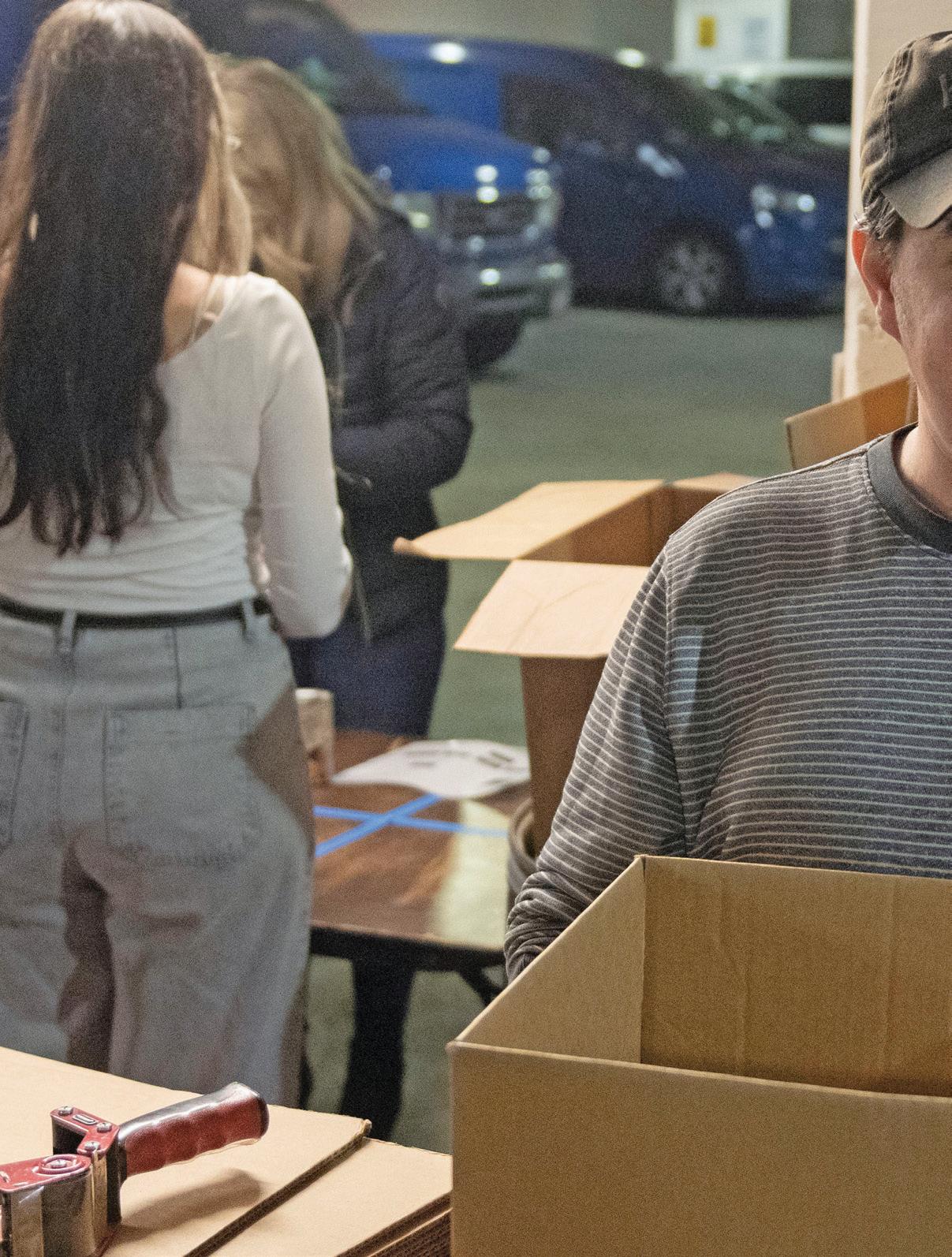
THE GIVING KITCHEN—Seeking volunteers to cook meals for those in need at Chabad’s kosher community kitchen. At Chabad of SF, 496 Natoma St., S.F. Times vary. Registration required. tinyurl.com/ giving-kitchen
CLOTHING DRIVE—Congregation
Sha’ar Zahav is collecting blankets, jackets, and new or lightly used clothing and socks to be distributed to the homeless by the Gubbio Project. At Sha’ar Zahav, 290 Dolores St., S.F. Weekdays 9 a.m.-5 p.m. shaarzahav.org
“OPERATION DIGNITY”—Jewish Silicon Valley and Jewish Family Services Silicon Valley are raising funds for a community needs campaign to support 250 local Holocaust survivors living below the poverty line. Every dollar donated will be matched by the Joseph Gringlas National Kavod Shef Fund. Donate online. tinyurl.com/operation-dignity
DIAPER DRIVE—Temple Emanu-El in San Jose is collecting boxes of diapers and wipes for Jewish Family Services of Silicon Valley. Through March 16. Dropoff at Emanu-El, 1010 University Ave., San Jose. tinyurl. com/diaper-drive-25
SUNDAY | March 16
“MITZVAH MAKERS”—Day of service for families with kids ages 5-10 to assemble meal kits to help feed Bay Area neighbors in need. With meaningful activities and treats like hamantaschen, babka, rugelach and more. Presented by Jewish Family and Children’s Services. At
JFCS locations in Marin, Palo Alto, S.F. and San Mateo. 1-2:30 p.m. Free. tinyurl.com/jfcs-mitzvah-makers
MONDAY | March 17
PASSOVER BAG PACKING—Volunteer opportunity for Jewish young adults to make holiday gift bags for JFCS clients in need. With snacks and activities. At JFCS SF, 2150 Post St., S.F. 5:45-7:45 p.m. $18-$36 suggested donation to JFCS Foodbank. tinyurl.com/passover-bags-jfcs
WEDNESDAY | March 19
INTERFAITH WINTER SHELTER COOKING PROJECT—Or Shalom Jewish Community is looking for two shifts of volunteers to help cook dinner for 40-45 homeless San Franciscans and serve it at the Quaker Meeting House, 65 Ninth St., S.F. 3-5 p.m. and 6-9 p.m. Contact Bryna Rifkind at brynabr@gmail. com to volunteer or donate drinks, desserts and fruit.
SUNDAY | March 9
“A NATION OF REFUGEES”—Polly Zavadivker discusses her book about the untold history of how Jews in Russia experienced World War I, a period of rupture and dispersion that reshaped Eastern European Jewry. Based on newly accessible archives, Yiddish and Russian press and personal accounts. Presented by Jewish Community Library and New Lehrhaus. Online. 3-4 p.m. Free. tinyurl.com/nation-refugees
MONDAY | March 10
ONGOING
“IN PLAIN SIGHT: JEWISH ARTS AND LIVES IN THE MUSLIM WORLD”—Exhibit showcasing Jewish objects originating from Muslim lands that reflect cultural affinities and common threads between the cultures. Through May 15. At the Magnes, 2121 Allston Way, Berkeley. magnes.berkeley.edu
“COCA-COLA, BLACK PANTHERS AND PHANTOM JETS”—Historian Oz Frankel discusses his book, which examines the late 1960s as a unique moment when Israel became more closely entwined with the U.S. as a strategic ally and through its intensifying intimacy with American culture, society and technology. Followed by light reception. Presented by the Helen Diller Institute and the Center for Jewish Studies, the Magnes and departments of history and American studies at UC Berkeley. At Berkeley Law building, 2207 Piedmont Ave., Room 141, Berkeley. 4-5:30 p.m. Free. tinyurl.com/oz-frankel
WEDNESDAY | March 12
“STATECRAFT 2.0: WHAT AMERICA NEEDS TO LEAD IN A MULTIPOLAR WORLD”—Ambassador Dennis Ross
discusses his upcoming book, which explores a range of key foreign policy issues including the Israel-Hamas conflict, the broader dynamics between Israel and the Middle East and the roles of Iran, Russia and the U.S. in navigating today’s multipolar world. Presented by Jewish Silicon Valley. At Addison-Penzak JCC, 14855 Oka Road, Los Gatos. 7-9 p.m. $18 and up. tinyurl.com/dennis-ross-book
“HOW TO READ THE BOOK OF GENESIS”—Ronald Hendel discusses his book, which explores how to navigate the ancient text of Genesis in a modern world, balancing historical insights with traditional interpretations. Presented by Jewish Community Library and New Lehrhaus. Online. 7-8 p.m. Free. tinyurl.com/read-genesis
FRIDAY | March 14
“SHECHINAH AT THE ART INSTITUTE”—Rabbi Irwin Keller discusses his book, a collection of essays, memoir and poetry exploring Jewish mysticism, love, loss, memory, gender, AIDS and the Milky Way. Livestream option. At Congregation Sha’ar Zahav, 290 Dolores St., S.F. 6 p.m. Free. tinyurl. com/irwin-keller

The food bank at Jewish Family and Children’s Services is collecting donations of nonperishable items for a Purim food drive. Last year JFCS provided over 20,000 bags of groceries to those in need. Requested donations include soup, peanut butter, jam, macaroni and cheese, rice, cereal, oatmeal, granola bars, toothpaste, lotion, soap, paper towels and toilet paper.
Drop off items at food bank locations: 2150 Post St., S.F.; 2001 Winward Way, No. 200, San Mateo; 200 Channing Ave., Palo Alto; 600 Fifth Ave., San Rafael. Monday-Friday, 9 a.m.-5 p.m. tinyurl.com/jfcs-food-bank
David A.M. Wilensky, J.’s director of news product, assembled cardboard boxes while volunteering in November at the JFCS food bank in San Francisco.
(AARON LEVY-WOLINS/J. STAFF)
FRIDAY | March 7
FAMILY SHABBAT—Family-friendly Kabbalat Shabbat service with musical guest Lior Ben Hur. At Congregation Emeth, 17835 Monterey St., Morgan Hill. 7 p.m. Free. tinyurl.com/family-shabbat
FRIDAY | March 28
RABBI MARTIN WEINER MEMORIAL
LECTURE—Rev. Paul Rauschenbush, CEO of Interfaith Alliance, discusses religious diversity and the importance of inclusive religious liberty at colleges, churches and institutes. With dinner. At Congregation Sherith Israel, 2266 California St., S.F. 7:15-8:30 p.m. Lecture is free, dinner $20-$35. tinyurl.com/martin-weiner-25

Celebrate the rich wedding traditions of Sephardic and Mizrahi Jews with Rabbi Tsipora Gabbai, the world’s first female Moroccan rabbi, who will lead a traditional henna ceremony. Party also includes live music by the Qadim Ensemble, food from Hummus Bodega, a private tour of the Magnes exhibition “In Plain Sight: Jewish Arts and Lives in the Muslim World” and an opportunity for 12 attendees to model wedding garments. Presented by the Magnes, JIMENA, Berkeley Hillel, JCC East Bay and Our Sephardic Family.
6-8 p.m. Thursday, March 20. At the Magnes, 2121 Allston Way, Berkeley. Early bird $29, general admission $40, students $10. tinyurl.com/henna-party-magnes
SUNDAY | March 9
“L’DOR V’DOR”—Hillel of Silicon Valley fundraiser and awards ceremony with keynote speech by Shai Davidai, an Israeli professor at Columbia Business School who has made headlines for his public stances against antisemitism and anti-Israel sentiment in higher education. At Rotary Summit Center, 88 S. Fourth St., San Jose. 3-5 p.m. $72. hillelsv.org/ldor-vdor
SATURDAY | March 22
SUNDAY | March 23
“MAHJ MADNESS”—Mahjong tournament and fundraiser. Proceeds support health care and programs for older adults at San Francisco Campus for Jewish Living. At SFCJL, 302 Silver Ave., S.F. 10 a.m.-2:30 p.m. $90. tinyurl. com/mahj-madness
THE ANNUAL 2025: THE BENEFIT OF BELONGING—OFJCC’s annual fundraiser featuring activities, entertainment, food and drinks. At Oshman Family JCC, 3921 Fabian Way, Palo Alto. 6 p.m. $180. tinyurl. com/annual-25
YVONNE BOXERMAN | GUEST CONTRIBUTOR
I’m a Dublin-born Jew who has always worn green on the most “Irish” of days, but this year is different.
The pain and hurt of so much ill-will directed toward Israel from so many parts of the world has been difficult. At the front of the pack in this anti-Israel campaign is the Irish government. Amid the war between Israel and Hamas, Ireland’s cabinet decided that it would recognize a Palestinian state and that Ireland would side with South Africa, which has accused Israel of committing genocide in Gaza, before the International Court of Justice.
In 2024, the Israeli government closed its embassy in Ireland in response to what Israel’s foreign minister called Ireland’s “extreme anti-Israel policies.”
Ireland has a checkered history when it comes to Jews, who have been in the country continuously since the Middle Ages. Eastern European Jews settled in Ireland at the same time as they came to North America, in the latter half of the 19th century. For the most part, they were welcomed without prejudice, though there was an infamous economic boycott and pogrom that occurred in Limerick between 1904 and 1906.
Then came World War II. Ireland’s antipathy toward the British for centuries of subjugation was so strong that Ireland sat the war out — though some 100,000 Irish citizens fought with the Allies as individuals. When asked to take in children arriving on the Kindertransport, Ireland shamefully declined.
Jews in Ireland after the war were so outraged when the truth came out about the Holocaust and Ireland’s “officially neutral” position that they left in droves. Many made aliyah, including my parents when I was a baby.
Even Isaac Herzog, Israel’s current president, has Irish ties. He is the grandson of Rabbi Yitzhak HaLevi Herzog, Israel’s first chief rabbi, who led the synagogue my mother attended as a child in Dublin.
In the early 1950s for family reasons, my parents reluctantly left Israel and returned to Dublin. As a young child, I remember those years in Ireland vividly. The shock of coming back from a Jewish state to a strongly Catholic one, basically a theocracy at the time, was difficult for us. I can still remember the anti-Jewish epithets that came my way from neighborhood children. We stayed in Ireland for the next six years until my family immigrated to Canada.
Looking at the history of Jewry in Ireland is complicated. In 1948, there was a sense of pride among Irish Jews, like Jews worldwide at the time, that Israel had stood her ground against much greater enemies. For the most part, Jews in southern Ireland had always been very sympathetic to the movement for self-government, known as “home rule,” that had prevailed for centuries in Ireland. In fact, Rabbi Herzog had been known in Ireland as the “Sinn Fein Rabbi” before he made aliyah, a reference to the pro-independence party.
In the 1920s, the Republic of Ireland won its hard fought independence from the British. With this shared history of oppression, it is no wonder that Irish Jews now bemoan the fact that Ireland is at the forefront of antipathy against Israel. For the few Jews still living in Ireland — perhaps 1,000 from a high of around 6,000 before WWII — this must be a hard pill to swallow.
I have dual citizenship, American and Irish. Not too long ago, one of our grandsons asked if I would gather the documentation needed for him to apply for Irish citizenship. It was very sad for me to tell him that right now I just don’t have the will to do it.
In that same vein this year I cannot, in all good conscience, wear green on St Patrick’s Day. n
Yvonne Boxerman is the author of two volumes of short stories. She has written for local publications, including J., and is former executive director of Palo Alto’s Congregation Kol Emeth.
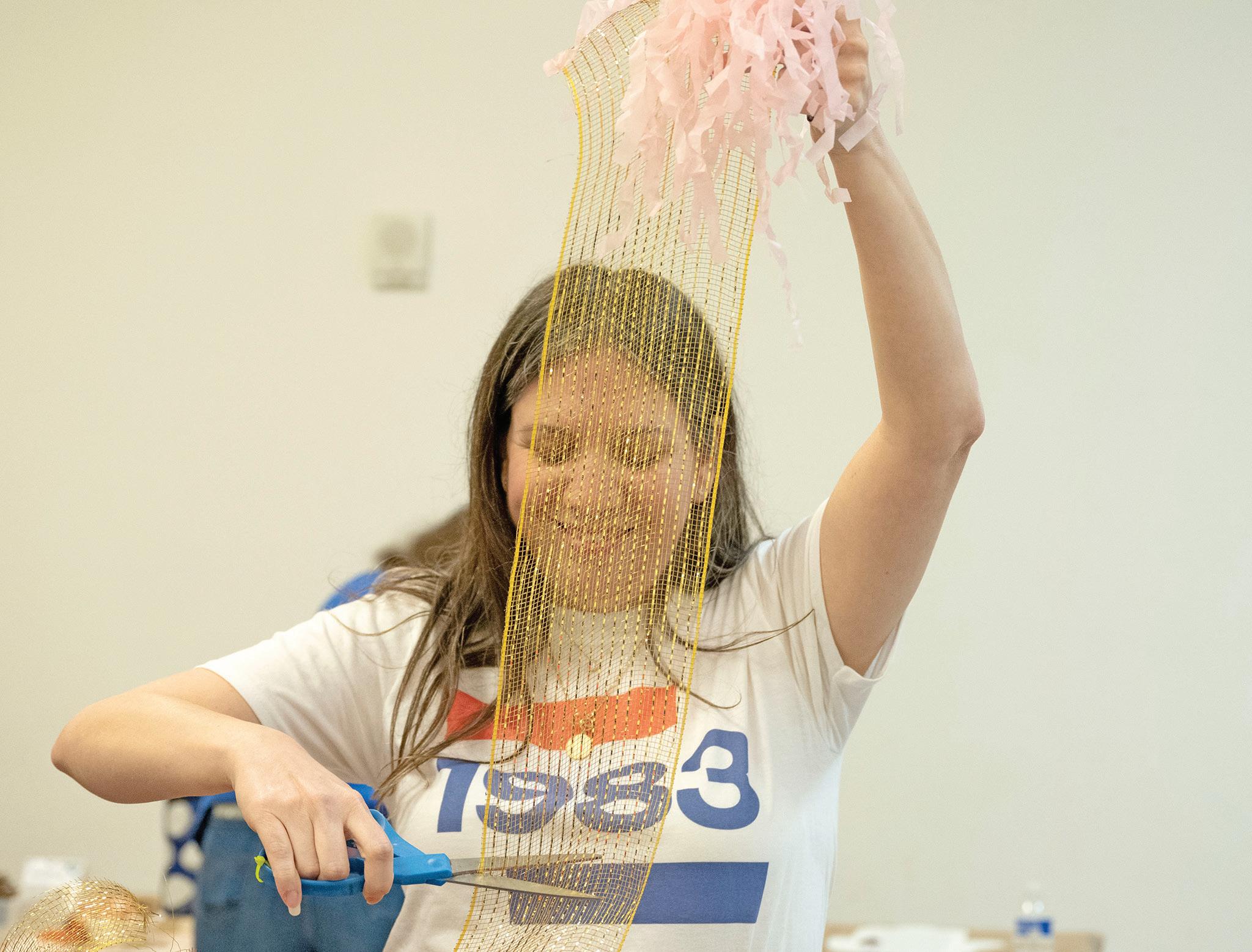
I, too, found my way back to Judaism
Like Janet Silver Ghent (“Joy and pride, not crises, pulled me back to Judaism,” Feb. 7), I also was raised in a secular Jewish home. My parents acknowledged that we were Jewish and, in fact, tried to put me in a few Sunday schools around the area that my mom’s friends felt were politically “liberal” enough, but it was never a good experience for me so they eventually stopped even that.
Other than my dad not working or me not going to school on the High Holidays and other than my parents hosting a few “model seders” for other secular Jewish friends, not much Judaism was practiced or taught at home.
My mother was a devoted Democratic activist and even had strategy lunches with James Roosevelt (FDR’s son), who was a Congress member representing Los Angeles at that time. She would pick me up after school and we’d drive over to the Fairfax area to deliver election materials for Democrats running for local offices. For years as a kid, I believed that being Jewish meant being a Democratic precinct worker — just like Mom!
My story of finding my own way to Judaism was largely influenced by being a part of United Synagogue Youth as a teen. Then 41 years ago, 13 women (myself
included) had our adult b’nai mitzvah at Congregation Beth David in Saratoga following nearly two years of study of Jewish history, Hebrew, trope, etc. We became the first adult b’nai mitzvah class at Beth David.
Nearly 50 years after joining, we are still active members of our Beth David community, which has truly been one of the best parts of my life.
The other of course is being a grandma!
HILLARY FARKAS | CUPERTINO
Liberated ethnic studies — a movement for elevating the history, voices and experiences of Black, Indigenous and people of color — can be transformative and life-saving for students of color, but also for white Jewish students.
This moment of rising antisemitism, racism and xenophobia calls for solidarity across marginalized groups. Standing together calls on Jews of conscience to lend our support to those ethnic studies scholars who have shaped the field and carry the torch of the Third World Liberation Front.
It is largely the advocacy of our Jewish community organizations that has endangered the adoption of
DAVID ZVI KALMAN | GUEST CONTRIBUTOR
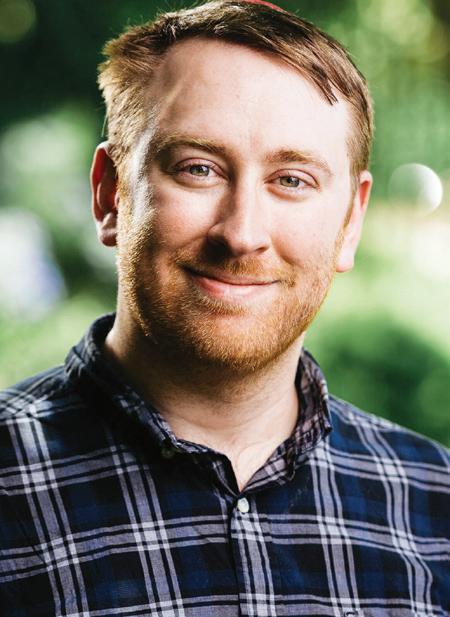
AI may or may not be the most important technology ever invented, but it is by far the most rapidly deployed.
The mechanical clock wasn’t widely adopted for at least a century. It took almost a decade after the iPhone’s introduction for half of American adults to slip a smartphone into their pocket. AI is moving so fast that the time between theoretical breakthroughs and commercial availability is measured in weeks.
There seems to be no way to effectively place ethical guidelines on tech moving at this velocity. Countries see AI as a part of their national security, and they are loath to voluntarily or unilaterally slow down its development.
This has left us mortals in an impossible situation. Even if you do not believe that artificial general intelligence (AGI) and artificial superintelligence (ASI) are existential risks to humanity, the widespread availability of such powerful tools has given us new ways to hurt others from a distance.
AI has the potential to massively improve human welfare, but its proponents are often short on details about how exactly this will happen. In the meantime, the potential for abuse is increasing daily and there are few mechanisms in place to prevent bad actors from using AI to harm the general public or specific individuals.
What in the world are Jews — both leaders and laity — supposed to do in this situation?
ethnic studies in California. The omission of white Jews from liberated ethnic studies courses does not mean that our stories are missing from the high school curriculum. The history of our people — the devastation of the Holocaust, our immigration stories to arrive here, our resilience and our numerous contributions — have an important and safeguarded place in world and U.S. history courses.
Furthermore, liberated ethnic studies is not antisemitic. Ethnic studies helps us to explore and examine all aspects of our identities, including our Jewish identity, and build bridges with others. An overwhelming majority of white students who engage in ethnic studies develop a stronger sense of their own identity, confidence to engage in dialogue across differences and the agency to work toward a just future.
Now more than ever, Jewish students need to feel strong in their sense of self, and to feel empowered as agents of change to preserve our democracy and strive toward justice for all. Let’s fight for it.
LAURA EINHORN | SAN LEANDRO
Trump’s ‘big, bold’ Gaza plan
Once again, J. has published a ridiculous op-ed from the Forward, “Trump’s Gaza plan is terrible. So why don’t the Democrats have
I firmly believe we must do something. Judaism’s commitment to cultivating an ethical society demands no less. But time is limited, and Jews with busy schedules will rightly look at this topic and wonder whether addressing it — which involves keeping pace with its many twists and turns — is really the best use of our time. If political and business leaders struggle to wrangle this technology, why should we expect a minority religion to contribute anything?
We should not expect Jewish thought to sway AI development directly. This global project will hardly face regulation through secular argument, let alone passages of the Talmud.
While Silicon Valley’s tech culture may be particularly secular — or perhaps its religion is tech itself — Jewish thought is nowhere near sufficiently equipped to provide strong ethical guidance, and its ability to shape American secular society is limited at best.
Instead, Judaism’s greatest power in this technological maelstrom is our community. This is not because of some romantic notion that we are stronger together. It is because you can’t regulate technology effectively while ignoring what communities actually want.
This simple truth seems to have evaded most tech regulators even when regulation was politically fashionable. For many tech developers, the public exists only as a willing receptacle for new products, an abstract concept called “scalability.” This is sometimes because tech produces real good, but a lot of the time it is because the public has grown used to the idea that 21st-century citizens must adopt tech regardless of its utility. Tech comes in waves. When a new one comes, you either surf it or you drown. It happens to you, not for you.
This learned sense of inevitability means that the public has lost its ability to evaluate new tech in terms of its own vision for society; the muscle is so atrophied that average citizens don’t even realize this is something they can do. Instead, this task ends up getting outsourced to policy experts. Yet policy experts can only implement societal values when those
anything better?” (Feb. 18) by Rob Eshman.
The writer asks, why hasn’t a Democrat provided a “genuinely practical vision for Gaza’s future,” one with a “big, bold, rational alternative” and articulated by someone with “passion, clarity and humanity”?
He further proposes that the “loyal opposition” should “think out of the box of historical thinking to create different possibilities for the future of the region.”
First, let’s review what Trump has stated as his plan: 1) removal of Hamas from the region; 2) provide the opportunity for those in the Gazan population to emigrate; 3) develop the strip, creating jobs, security and a world-class destination.
What would be the result? 1) permanent removal of terrorist threat to Israel from that area on its border; 2) allow Gazans to escape from the murderous iron boot of Hamas and leave for a better place; 3) create safety, security and peace in the area, a booming economy and a better life for those who live there.
My response to Eshman’s questions: Hasn’t Trump already thought out of the box, provided a big, bold, rational and practical alternative to the current situation, and articulated it with passion, clarity and humanity?
The reason Democrats have not come up with a better plan might be because there isn’t one.
DAVE L. HARRIS | RICHMOND
values have actually been articulated.
AI ethics, even on a theoretical level, is patchy. Experts can develop policies for values that are clear — don’t encourage self-harm, don’t enable exploitation, don’t violate privacy — but they’re not equipped to resolve our general anxieties (about losing your job, about romantic relationships with robots, about an internet full of auto-generated nonsense). AI ethics, therefore, ends up being reactive and is better at solving small technical problems than big societal ones. It also means that the public’s voice gets mediated by a third party.
This is where I think religion in general, and Judaism in particular, can do some good.
To the extent that they are champions of ethics, religious communities are more than just places where ethical philosophy gets a sprinkling of Bible verses. Religious communities are places where ethics itself is inculcated, where both children and adults can learn together what a just society ought to look like. This process is about more than just the application of age-old laws to novel situations; it’s about the messy but necessary process of making determinations about the world we wish to inhabit.
The alternative is for someone else to make that determination, which means resigning ourselves to a reactive ethics that only speaks up when things are so egregiously (and probably irreversibly) wrong that we feel we must at least voice our dismay, even if doing so is futile.
Much is made of the need for AI to align with our values. Religion is an important component of such alignment: a method to determine what actually matters and then ensure that the fastest-moving tech does not stray too far from what we understand about our newly articulated values. n
The views expressed on the opinion pages are those of the authors and do not necessarily reflect the views of J.
Rob Eshman’s article about Trump’s Gaza plan could be summarized as: Woe is us. Trump’s plan won’t work, and the Dems don’t have an alternative.
And he’s right, of course. But if the Dems were willing to extract a nugget of reason from Trump’s “outrageous” proposal and adapt it to reality, and if the Republicans were willing to listen to anyone on the other side, something might happen.
As much as I despise the Trump administration and fear what it’s doing to our country, I’m willing to listen to anyone who suggests a way out of the Gaza quagmire. And neither party has done that. So let’s take a summary of the proposal: Mandatory, permanent relocation of all Gazans, and U.S. ownership of the land for redevelopment to serve rich vacationers.
That’s a nonstarter. But change “mandatory” to “optional,” continued on page 26
J. welcomes letters of no more than 300 words. Submissions are subject to editing. See guidelines and form at jweekly.com/letters, or email to letters@jweekly. com.
ANALUCÍA LOPEZREVOREDO | GUEST CONTRIBUTOR
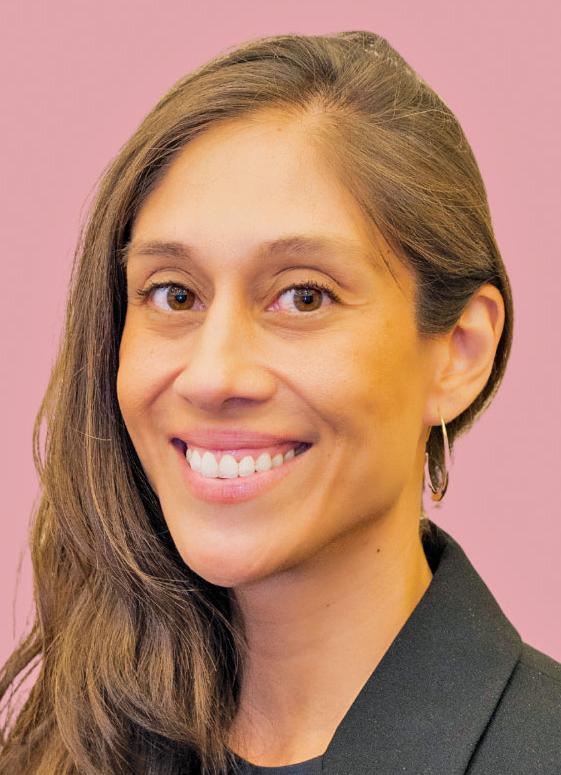
Analucía Lopezrevoredo (she/ella) is a Peruvian Chilean American sociologist, known for her advocacy and research on human migration, immigrant identity development and global Jewish communities. She is founder and executive director of Bay Area-based Jewtina y Co.
For generations, Jewish organizations have been at the forefront of immigration and refugee rights, carrying forward our people’s legacy of resilience and renewal. But today, as immigration policies grow more restrictive and American hostility toward immigrants reaches alarming levels, major Jewish institutions are largely silent when it comes to defending even the Jewish immigrants within our own communities.
As a formerly undocumented American Jew, I know the intense fear that undocumented immigrants are living with right now. I also believe the Jewish community has a meaningful opportunity to step up and support immigrants in impactful ways — if we come together with the will and commitment to do so.
Since President Donald Trump returned to the White House, immigration enforcement has intensified. In just the first week of the new administration, Immigration and Customs Enforcement arrested more than 3,500 undocumented immigrants — a staggering increase compared with prior years. While the administration claims it is prioritizing criminals, officials have made it clear that any undocumented person is a target, regardless of their history or contributions to society.
In response, many immigrants are retreating into the shadows, skipping work and keeping children home from school. They are fearful of even the most basic interactions, whether it's a visit to the DMV, a doctor’s office or even a place of worship. The new policies don’t just remove people from the country; they instill terror, destabilizing entire communities.
THE
Despite the gravity of this moment, only a handful of legacy organizations and synagogues have stepped up in meaningful ways so far. Some, such as declared sanctuary synagogues, HIAS and local refugee agencies working tirelessly to support new arrivals, are leading the way. Their efforts are commendable, but we need more Jewish organizations to join the movement.
Many Jewish immigrants and their loved ones are currently navigating complex legal systems — often alone, with limited resources and overwhelming uncertainty. They are fighting to remain with their families, to access basic rights and to build secure lives in the face of immense barriers. This is not just their crisis — it is ours.
As Jews, we are commanded to love and protect the stranger. As a people who have known the pain of displacement, we must ask ourselves:
Where is our chesed (lovingkindness) and compassion in this moment?
Where is our commitment to recognizing the dignity of every person — that we are all made b’tzelem Elohim (in the image of God)?
Where is our arevut (mutual responsibility) when our own community members are in danger?
I grew up undocumented. For 15 years, I lived in constant fear, knowing that my life could be upended at any moment. It’s surreal to think that today I am on the other side of that fear, but the reality is that fear for my community still grips me.
Through my work at Jewtina y Co., an organization led by and for Latin Jews, I have had the privilege of working with undocumented individuals and people from mixed-status families. Their stories mirror my own. There is a particular kind of survivor’s guilt that comes with having gained stability while knowing so many others remain trapped in the same cycle of fear that shaped my childhood.
I know that I’m not alone in feeling this way. Many of us who have made it through find ourselves overwhelmed by the magnitude of the crisis, leading to retreat, emotional flight or mental disengagement.
Of course, that exhaustion extends beyond the immigrant justice space.
It has been more than 500 days since Oct. 7, 2023, and in that time, we have been carrying an unbearable weight:
continued from page 25
“permanent” to “temporary” and “ownership” to “assistance.”
Changing those three words turns a mendacious pipe dream into a negotiable possibility, details TBD.
Trump is correct that Gaza is a wasteland; no plan will work without rebuilding it.
No one can return to a “home” that is just a pile of rubble. Peaceful, innocent Gazan civilians might welcome a clean, well-lighted, temporary place to live, work and raise their children while their homeland is rebuilt. Give them a return ticket that they can use when that happens. Then make it happen through international cooperation. Let able stalwarts choose to stay in local camps and help with the rebuilding. Sure, bring in businesses including international hospitality; just please leave the Trump Organization out of it.
RICHARD TAVAN | SARATOGA
I share with Rob Eshman his horror and rage at the murder of the Bibas children and their mother, together with all the other hostages who have died. (“The only appropriate response to the Bibas deaths: Pure rage,” Feb. 21)
However, I take exception to his throwaway line addressed to “pro-Palestinian” protesters: “Do not dare cite body counts of children killed by Israel in Gaza in response to agony over the Bibas children. Each young life marred or taken by war is a unique tragedy: Palestinian or Israeli; Jewish, Muslim or Christian.”
Really? To focus almost exclusively on the tragedy of these two young children with barely a mention of the thousands of Palestinian children killed and the hundreds if not thousands orphaned is reprehensible to me as a Jew and as a son of a
the heartbreak of yearning for the return of all hostages, the desperate hope for a cease-fire that endures and the pursuit of lasting peace.
While many Jewish institutions have long supported immigrant justice, we must ask whether they are doing enough for Jewish immigrants right now. Here is what we must expect of our community:
1. Move from words to action. Statements of support are meaningful, but real impact comes from direct aid: legal assistance, bail funds, translation services and public education on immigrant rights. Every synagogue and Jewish organization should be equipping its members with the knowledge to protect and support vulnerable members of their communities.
2. Center Jewish immigrant voices. Jewish institutions often focus solely on broader refugee populations, which is essential, but they must also recognize the Jewish immigrants within our own communities. Many Jews — especially Latin Jews, Israeli Jews, Mizrahi Jews and Jews of Color — live with precarious immigration statuses. Their voices must be uplifted, protected and heard in decision-making spaces.
3. Fund community-led support systems. Legal aid is crucial, but so are mental health support, community spaces and cultural connection. Jewish organizations must recognize the full spectrum of needs that Jewish immigrants have and invest accordingly.
So what now? What does resilience look like when everything feels like too much?
Perhaps our answer lies in how we’ve always endured. Like our ancestors in the wilderness, wandering through uncertainty, sustained only by manna and faith, we must take this one step at a time.
The Israelites didn’t know how long their journey would last, and we cannot know how long this moment of darkness will stretch. But what we do know is this: We keep moving forward.
We take things day by day, moment by moment, doing whatever is in our power to choose courage, action and hope — not because we are naive but because we know that despair has never been our final chapter.
If history has taught us anything, it is that we were not placed here to stand still. We are here to keep building, fighting, dreaming, loving — and carrying each other forward. n
Holocaust survivor. I can’t be easily dismissed as anti-Zionist, which I am not. I am a strongly identified and engaged Jew who believes that our historic suffering and the challenges of current antisemitism should not eclipse the enormous scale of the destruction of Palestinian people in our name.
RICHARD WEINER | OAKLAND
It should be an embarrassment to J. that it chose to publish over six pages of donors and the range of their donations in the Feb. 21 edition. It is not a Jewish value to publicize charity. If you think this is what most donors want, you are mistaken. Your action makes me rethink any future donation.
MUSIC | ANDREW GILBERT | CORRESPONDENT
More than a decade before Israel’s birth, musicians in British Mandate Palestine created what would become the national orchestra.
Many of the same forces that shaped the young state were instrumental in the 1936 creation of what is now known as the Israel Philharmonic Orchestra, as hundreds of Jewish musicians purged from European orchestras in the 1930s found refuge in the British-controlled territory.
On the cusp of its 90th birthday, the celebrated company is embarking on a seven-city U.S. tour that includes a stop at Davies Symphony Hall in San Francisco on March 23. It will be the orchestra’s first Bay Area performance since 2022.
composition. He connects them to future generations, as many of us took classes with him at university.”
The Davies program will also feature Max Bruch’s powerful 1880 composition for cello and orchestra of “Kol Nidrei,” named for the Yom Kippur prayer. Bruch’s piece has long been part of the orchestra’s repertoire. Also included will be Leonard Bernstein’s “Halil,” which was written for the Israeli orchestra in 1981 in honor of Yadin Tanenbaum, a young Israeli flutist killed at the Suez Canal during the 1973 Yom Kippur War.
“Bernstein was very connected to the Israel Philharmonic,” Gertner said of the legendary composor and conductor. “He was an honorary guest conductor, and he composed this really beautiful piece dedicated to a soldier.”
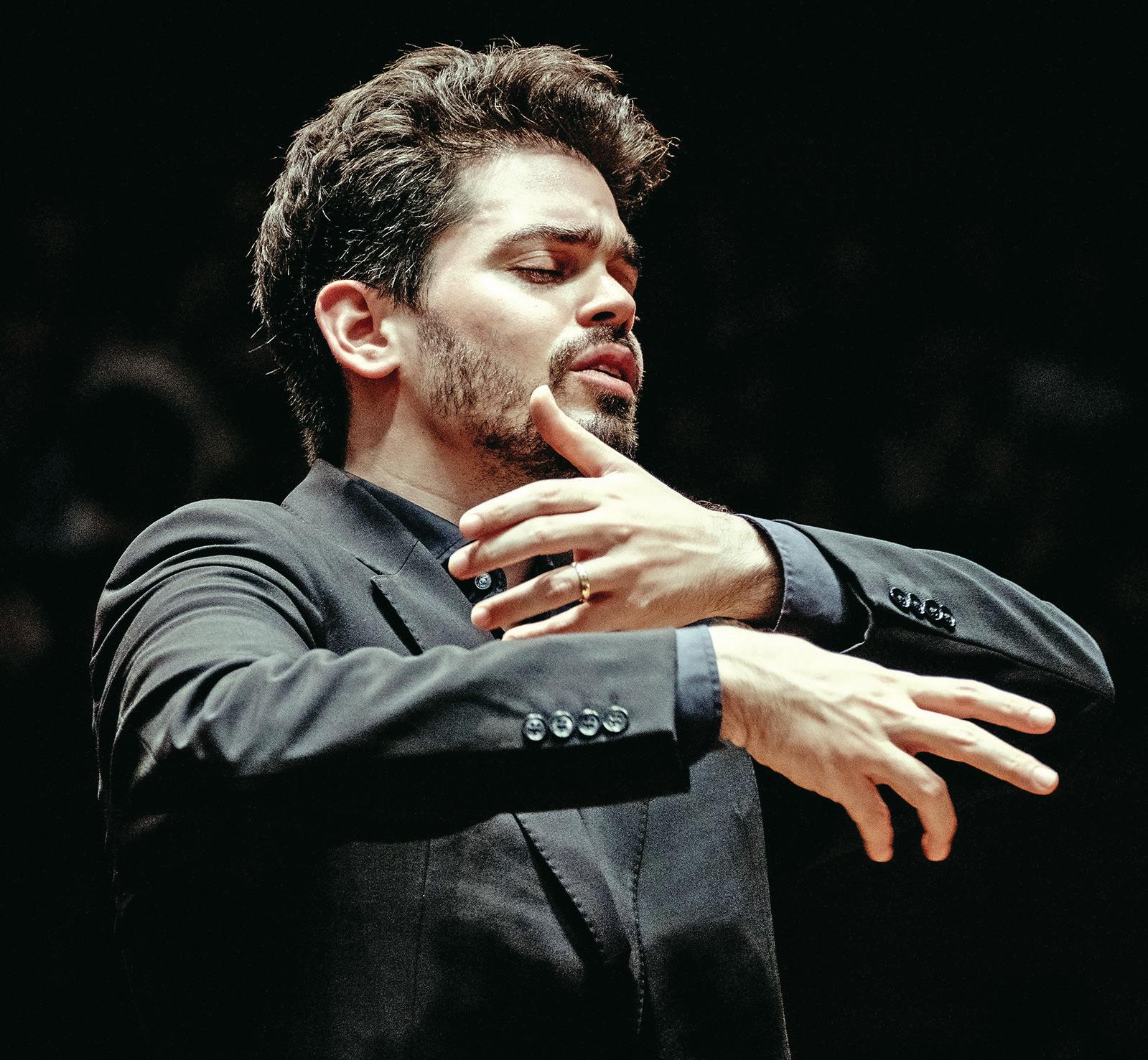
The program planned for Davies is “almost like a portrait of the orchestra,” violist Yoni Gertner, who also serves in a top position in the orchestra’s musician-led management, told J. in early February.
Each piece represents a particular thread running through its history, starting with Tzvi Jacob Avni’s “Prayer.”
Avni, now 97, was born Hermann Jakob Steinke in Saarbrücken, a city now in Germany. He is a living link to the historical European milieu out of which the orchestra coalesced and his relationship with it runs deep.
“He’s not just still active. He came to watch a concert last month,” Gertner said. “He’s one of the second-generation composers in Israel, and some of his teachers were first generation, who established the genre of Israeli classical
“It’s self-run, almost as if it’s owned by the players.”
Yoni Gertner, violinist
The program will close with Tchaikovsky’s Symphony No. 6. The orchestra has a deep connection with the Russian composer’s music “that’s hard to explain,” Gertner said. “It’s just very comfortable and natural when we play his symphonies. The Sixth is one of the most beautiful, but you can’t pick one as a favorite.”
The orchestra returns to San Francisco at a fraught moment for classical music in
Symphony Orchestra, Vienna Philharmonic and Berlin Philharmonic. In the U.S., this model is far less common.
“The players form all kinds of committees dealing with transportation, the schedule, all kinds of things that have to do with the conditions of the players,” Gertner said. “And we’re taking part in big financial and artistic decisions: whether we go on tour, pursue big projects, salaries, whether we want to invite a certain soloist. It’s self-run, almost as if it’s owned by the players.”
One piece of the tour that the musicians cannot control is the political environment.
When the orchestra performed in San Francisco in 2022, about two dozen anti-Israel protesters showed up outside Davies hall.
Likewise, dozens of anti-Israel protesters showed up Feb. 22 and 23 outside of UC Berkeley’s Zellerbach Hall when Israel’s Batsheva Dance Company performed to sold-out audiences. Those same protesters hope to disrupt the orchestra’s upcoming tour, accusing the musicians of “artwashing” Israel’s treatment of Palestinians.
The current tour is the orchestra’s third since the Oct. 7, 2023, Hamas massacre that started the war in Gaza. Gertner said the orchestra has only faced one small protest in Switzerland so far.
“We respect people’s rights to protest as long as it’s peaceful
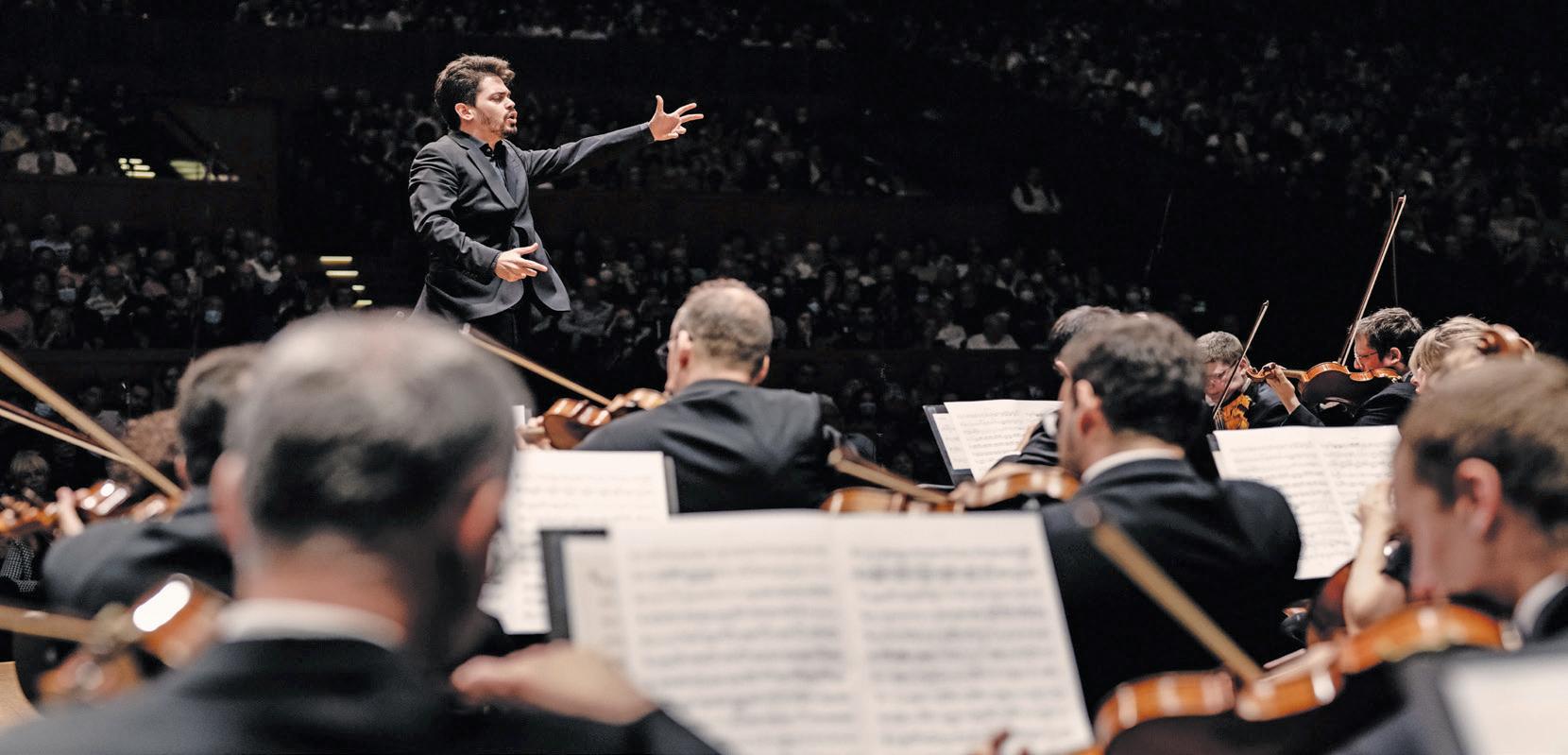
the city. The San Francisco Symphony is still trying to right itself after Esa-Pekka Salonen decided not to renew his contract as music director last year.
In contrast, the Israel Philharmonic announced in January that music director Lahav Shani’s contract was extended through 2032.
The orchestra has long been led by the musicians themselves, following the model of European organizations such as the London
and allows the concert to go on,” Gertner said, while noting that the musicians are generally too engrossed in their work to take much notice.
That said, the fate of Israeli soldiers and hostages weighs heavily on the musicians.
“Everyone is affected by the bigger picture,” he said. “We always have the hostages on our mind.” n
FILM | MAYA MIRSKY | J. STAFF
Two documentaries coming to the Bay Area this month probe the trauma at the heart of what happened on, and after, the Hamas invasion of Israel on Oct. 7, 2023.
Neither film is easy to watch, but both have something crucial to say about life in Israel and the U.S. since that day.
“There Is Another Way” is about Combatants for Peace, an Israeli-Palestinian group focused on coexistence and founded on a bedrock of nonviolence.
Members of the group have visited the Bay Area multiple times in recent years, including Sulaiman Khatib, who grew up in the West Bank. After serving time in prison for stabbing two Israeli soldiers, he came out determined to abandon violence.
Oct. 7 and its aftermath have been a challenge for the group, member Iris Gur, who appears in the film, told J. in an email interview.
“For most of us — including myself — the first reaction was anger, hatred, fear and even a desire for revenge,” Gur said. Open dialogue among group members has helped, she said. But they have faced outside hostility for continuing their efforts.
“Honestly, I feel that the circle of people I can speak freely with is shrinking,” she said. “The atmosphere in Israeli society is increasingly right-wing, religious and
The documentary’s executive producer is Oscar-winning filmmaker James Cameron, “who saw an early version of the film and was incredibly generous in reaching out and saying that he was committed to helping get this message out,” Apkon said.
“Torn: The Israel-Palestine Poster War on NYC Streets,” a documentary released on the one-year anniversary of the Oct. 7 massacre, will screen in Palo Alto on March 11 and in Aptos on April 26.
The film examines how hostage posters in New York became a flash point in the divide over how Americans view the Hamas attack. That division created a “cultural
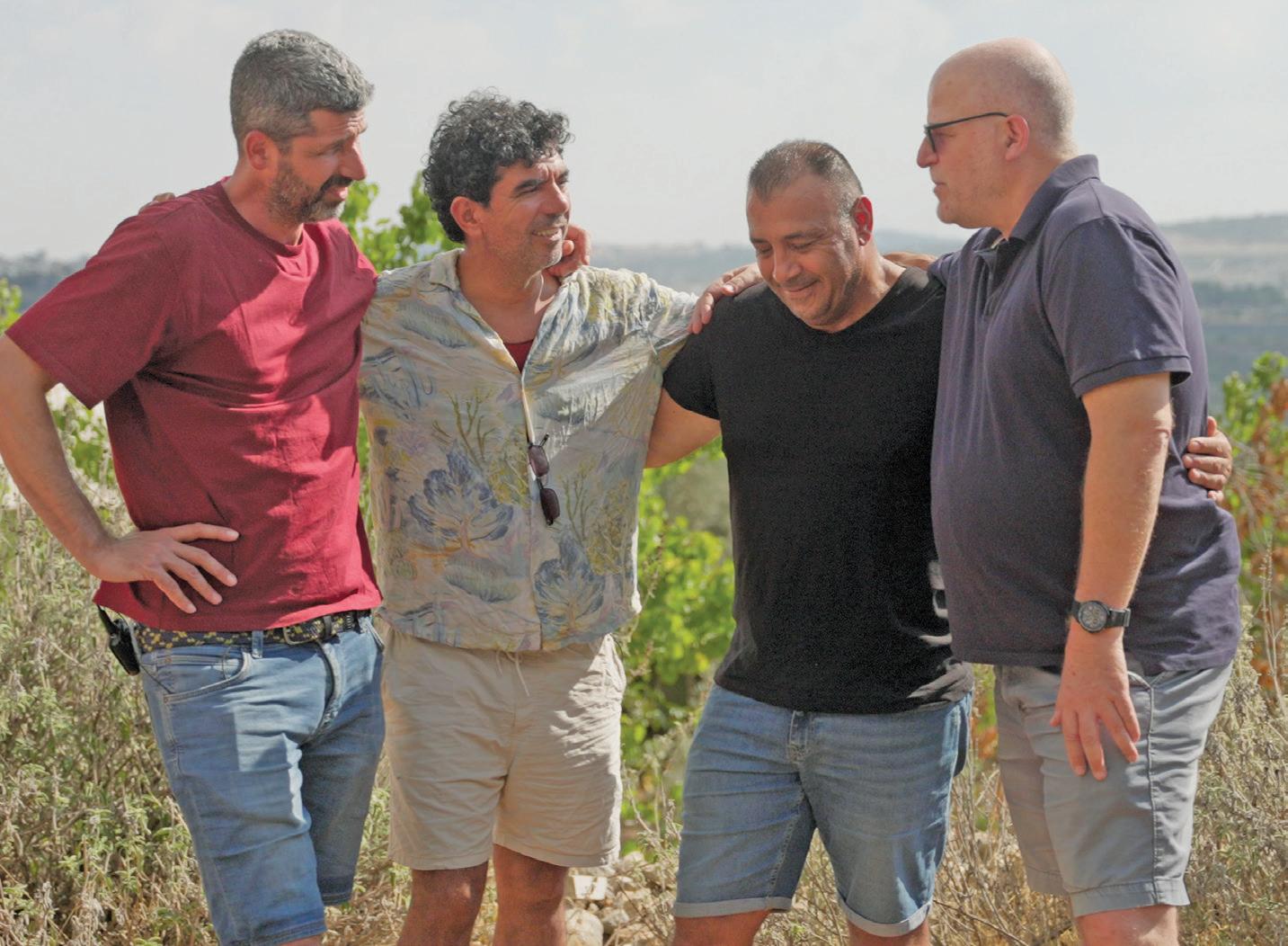
fascist. People who share my views are afraid to speak out.”
The film includes hard-to-watch footage of brutal violence on both sides of the conflict.
“It is always a challenge to make a film that holds the suffering of both people, but it also feels essential,” director Stephen Apkon told J. in an email.
The film, which will screen March 13 in San Rafael and March 14 in San Francisco, started as a short epilogue to Apkon’s 2016 film “Disturbing the Peace.” But Oct. 7 changed the landscape, he said.
“Not only were the Combatants for Peace being challenged by the events of Oct. 7 and the Israeli response, there were new people joining from both sides,” he said. “People who had suffered unimaginable loss.”
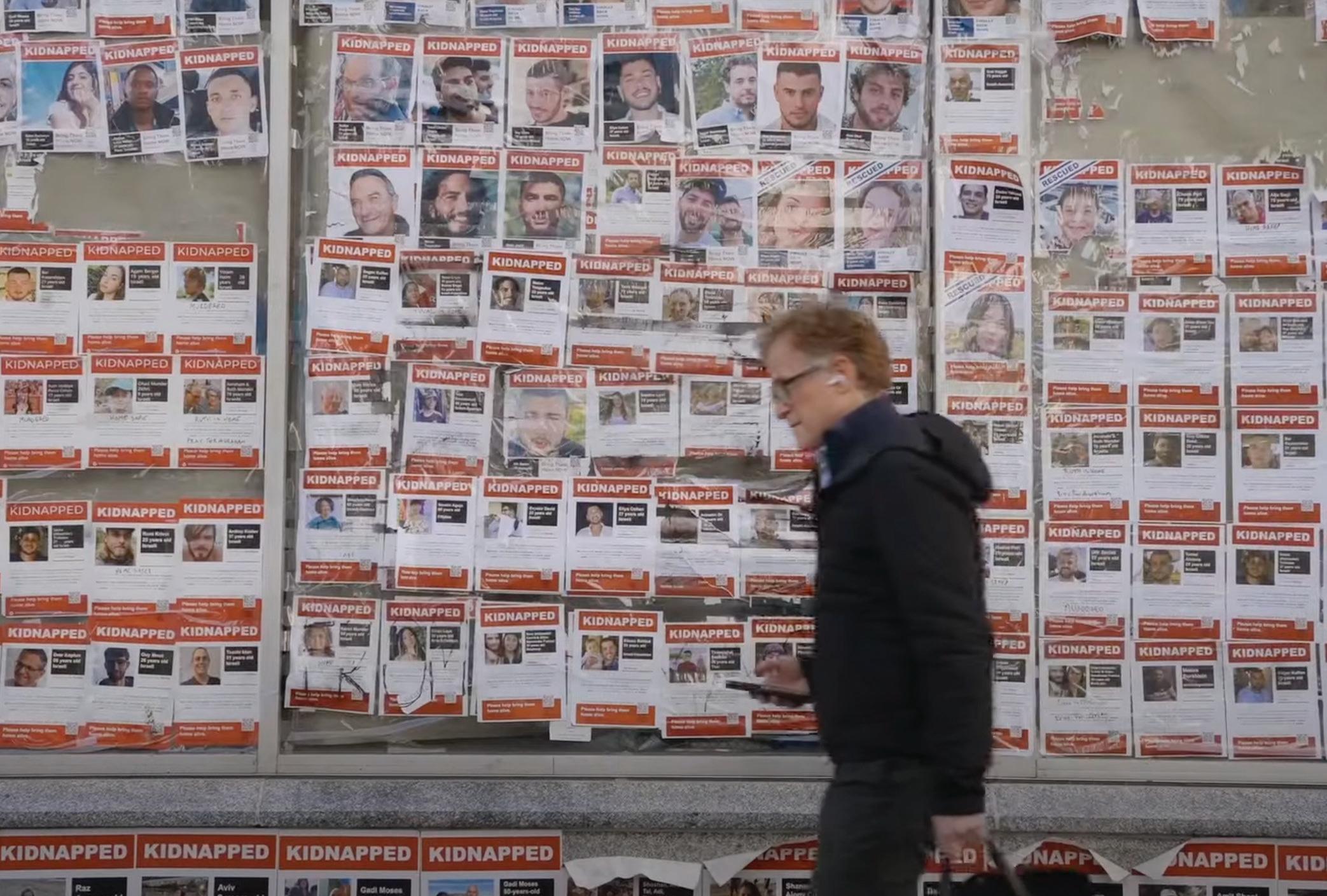
“These posters became more than images; they became symbols — subjective, with each side projecting their own beliefs onto them,” Shapira said.
Using footage shared on social media and interviews with artists, free-speech experts and relatives of hostages, Shapira examines the emotions behind outward displays of anger and frustration on both sides as New Yorkers struggled with questions of justice and humanity.
“Honestly, I feel that the circle of people I can speak freely with is shrinking.”
Iris Gur, Combatants for Peace
‘paper war,’” director Nim Shapira told J.
After Oct. 7, New York was plastered with red-andwhite “Bring Them Home” posters with the faces of the 251 people abducted by Hamas.
“Amid the horror, this felt like a small silver lining — my city of 11 years was standing up, calling attention to the urgent need to bring them home,” Shapira said in an email interview.
The iconic posters not only sought to raise awareness of the hostages but also reflected Jewish grief. As a result, many Americans, both Jewish and not, were shocked when it became apparent that people were ripping down the posters, even those that bore the names and images of kidnapped children.
“My goal was to capture the personal stories, the raw emotions and the deep ideological divides that emerged in the wake of the poster campaign,” he said.
Both films expose deep wells of anger and pain, but both also make pleas for empathy and connection. Shapira said he wants people to step outside their echo chambers and try to understand the motivations and humanity of others.
“Silencing people through doxxing, cancel culture and public shaming doesn’t change minds. It just drives beliefs underground,” he said. “Instead of fostering dialogue, it pushes people to hide their views, deepening divisions rather than bridging them.”
For Gur of Combatants for Peace, connecting with those who in other circumstances might be called enemies is the only way forward out of despair and hatred.
“We are living through a terrible chapter of history, but history changes,” Gur said. “One day, things will be better.” n
“Torn” 7:30 p.m. March 11 at Oshman Family JCC, 3921 Fabian Way, Palo Alto. Screening and Q&A with director Nim Shapira. $29. tinyurl.com/torn-pajcc / 7 p.m. April 26 at Temple Beth El/JCC, 3055 Porter Gulch Road, Aptos. Free. tinyurl.com/torn-aptos
“There Is Another Way” 7 p.m. March 13 at Smith Rafael Film Center, 1118 4th St., San Rafael. $11-$15. tinyurl.com/another-wayrafael / 6:30 p.m. March 14 at Roxie Theater, 3117 16th St., S.F. $13-$17. tinyurl.com/another-way-roxie
Both screenings will be followed by a Q&A with director Stephen Apkon and film subjects Iris Gur and Mai Shahin.
IDEAS | MAYA MIRSKY | J. STAFF
Even as tensions over the Israel-Hamas war continue to simmer on California’s college campuses, a quiet e ort at UC Davis seeks to show people just how valuable cooperation can be.
e California-Israel Collaborations in Research Program, which funds grants for early research done by Israeli and Davis academics, is about promoting the sciences — but it also has a bigger mission.
“ e idea was to do something that would be not just pushing back on negative things that were happening on campus, but actually do something that was positive,” said Jay Rosenheim, a retired professor of entomology at UC Davis and co-chair of the program’s advisory commi ee. It’s “a clear signal that UC Davis is welcoming to Israeli academics and to Jewish students,” he said.
e program gives out grants for research done as a partnership between a UC Davis faculty member and a researcher from Israel. e two-year grants of around $20,000 are considered modest for science research, but they’re designed to help incubate projects that have the potential of finding additional funding down the line.
“It’s just to get the thing to germinate, and then hopefully a er that, the researchers will secure big pots of money from somewhere else,” Rosenheim said.
Between 2016 and 2023, the program awarded 24 grants, totaling more than $250,000.
e grants have funded everything from cancer vaccine research to sustainable barley breeding to internet ad analysis since it was founded in 2016 by UC Davis mathematician Joel Hass. He brought together Davis faculty who wanted to push back against the anti-Israel rhetoric and calls for an academic boyco they saw on campus.
“It’s only go en worse since then,” Rosenheim acknowledged.
Magali Billen, a professor of geophysics and chair of the Department of Earth and Planetary Sciences at UC Davis, got a grant in 2019 (though the project was postponed because of Covid).
She worked with Yuval Boneh, a lecturer at Ben-Gurion University of the Negev, on a project to improve the mathematical modeling of what happens under the surface of the Earth when tectonic plates slide under one another — something quite relevant on the coast of Northern California.
“I’m a numerical modeler, and he’s a person who actually deforms rocks in the lab, and so I take the data that he creates and I put it into my model,” Billen said. “It was really a chance for cross-disciplinary learning.”
e grant, she said, was an opportunity for them to get together, free of distractions, and just talk about ideas. It’s the kind of
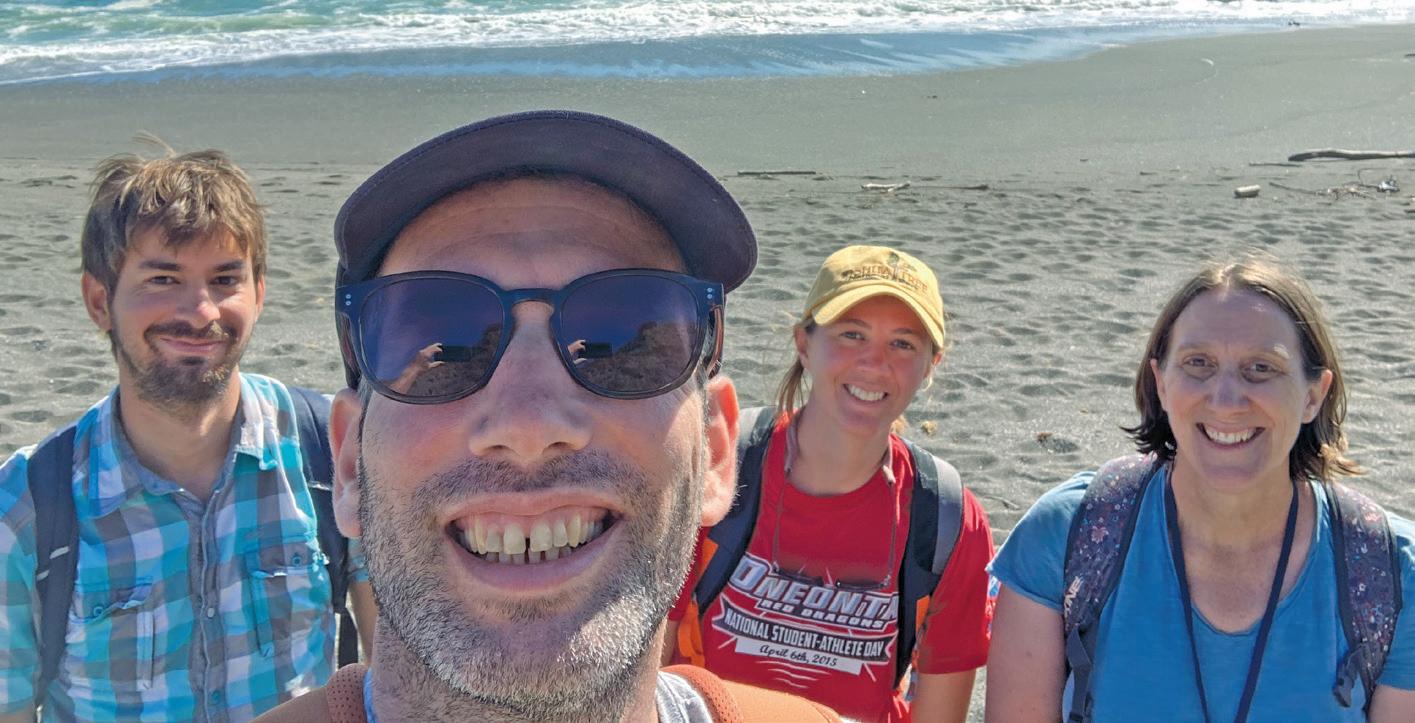
opportunity that’s “precious” for a busy academic, she pointed out.
“ ere’s no way we would have been able to make that kind of progress without being able to sit in the room, you know, just day a er day, with each other,” she said.
at’s the kind of synergy between scientists that the grants seek to generate.
“In the private sector, this collaboration has been whirring away for many, many years, but we’d like to create a parallel collaboration in the academic realm,” Rosenheim said.
A side benefit of the grant program comes from showing Davis faculty a more normalized side of Israelis and Israeli life.
“Most of the UC Davis cooperators are not Jewish,” Rosenheim said. “ ey’re not expat Israelis or anything like that. ey’re just rank-and-file faculty, many of whom know absolutely nothing about Israel. To actually have them go to Israel and see it up close is really a valuable thing.”
at was true for Billen, who visited Israel in May 2023. She said learning about the geology of Israel and speaking with Israeli counterparts was “really fantastic.”
“It was also just an opportunity to talk with them and learn more about Israel and to learn more about the diversity of people, where they’ve come from,” she said. “It made me take time to go online and read more history.”
Grants for the program are given annually, although there was a break from 2020 to 2022 related to the pandemic and one in 2024 because it seemed too hard to require Israeli academics to write proposals in the midst of war, Rosenheim said. But now the program is back up and running. e most recent round of applications closed in February.
“ e war continues, right? But life in Israel also has to continue,” Rosenheim said. “So we’re ge ing back to our normal operating, even though things are still pre y challenging.”
With the Trump administration slashing funds for scientific research, programs like the one at UC Davis may become more important in the future.
Rosenheim added that the Davis grants are not intended to support large-scale research projects; for that, academics may
need to start looking outside the U.S. if funding is eviscerated.
“I’m not sure anybody has really processed what the new reality will be once the dust se les,” he said.
Until recently, the Davis program was funded straight out of the pockets of university faculty who supported the mission. (Donors don’t pick the grant winners; that is handled through the UC Davis O ce of Research, which handles the operational end.)
But in 2024, the program started to receive funding from the S.F.-based Koret Foundation and the Silicon Valley Community Foundation, allowing for more stability. With that backing, the program is looking to expand to other California schools, with UC Berkeley and Stanford topping the list.
Billen said she’s glad to hear about an expansion, because early-stage funding can be meaningful for partnerships like the one between her and Boneh.
“It really set the stage for us to start a collaboration that we wouldn’t have done otherwise,” she said, “so I think it really made a huge di erence.” ■




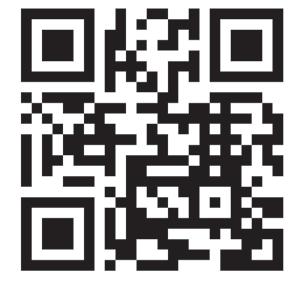
We tell the story of Bay Area Jews like nobody else. J. covers the range of what it means to be Jewish today — from politics to culture, from religion to food, from local news to global trends. These are stories you will only find in J.
We’ve been here for 130 years, and we’re not stopping now.
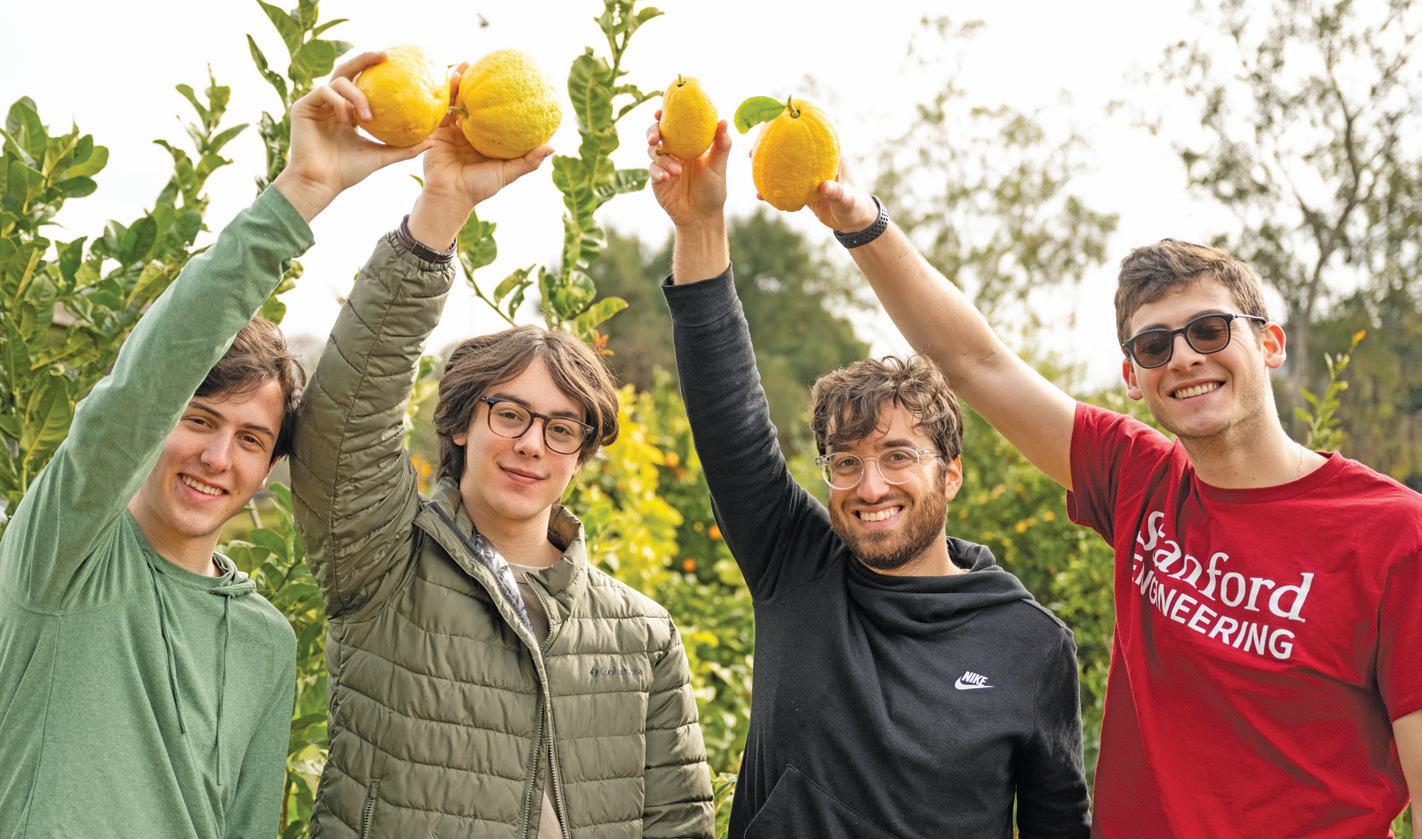
J. is an independent, nonprofit publication and relies on your donations. Say ‘yes’ to local Jewish journalism.
You can make your tax-deductible gift securely at jweekly.com/givetoday, scan the QR code below, or phone Allison Green, development director, at 415.796.0227.
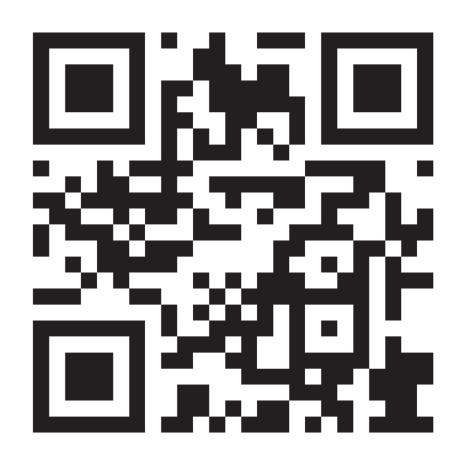
Our Employer Identification Number is 94-1089387 and we are listed as San Francisco Jewish Community Publications, Inc.
Our mailing address is: J. The Jewish News of Northern California PO Box 192604, San Francisco, CA 94119-2604
FILM | PHILISSA CRAMER & BEN SALES | JTA
Adrien Brody nabbed an Academy Award for best actor on March 2 for his portrayal of an architect in “The Brutalist,” marking the second Oscar for the Jewish actor.
Mikey Madison, who is also Jewish, won best actress for her role in “Anora,” which also won best picture.
Both of Brody’s best actor wins have been for portrayals of Holocaust survivors. In 2003, he received the best actor statuette for his performance in “The Pianist,” in which he played a musician who survived the Warsaw Ghetto.
In “The Brutalist,” Brody’s character, László Tóth, makes his way as an architect in the United States after the Holocaust. In his acceptance speech, Brody acknowledged the resonance of the two roles.
“I’m here once again to represent the lingering traumas and the repercussions of war, and systematic oppression and of antisemitism and racism and of othering,” he said. “And I pray for a healthier and a

happier and a more inclusive world, and I believe if the past can teach us anything, it’s a reminder to not let hate go unchecked.”
Madison won an Oscar for best actress for portraying a sex worker in the dark comedy “Anora.”
“I also just want to again recognize and honor the sex worker community,” she said in her acceptance speech.
“Yes, I will continue to support and be an ally. All of the incredible people — the women that I’ve had the privilege of meeting from that community — has been one of the highlights of this entire incredible experience.”
The best supporting actor award went to Kieran Culkin for his role in “A Real Pain,” about two Jewish cousins on a heritage tour of Holocaust sites in Poland.
The best documentary feature award was

won by “No Other Land,” which chronicles Israel’s demolitions in the Palestinian West Bank village of Masafer Yatta.
Taking the stage at the Oscars ceremony, two of the film’s four co-directors — an Israeli and a Palestinian — used their acceptance speeches to call for Palestinian rights and a negotiated solution to the Israeli-Palestinian conflict.
“About two months ago I became a father, and my hope to my daughter: that she will not have to live the same life I am living now,” Basel Adra, a Palestinian who lives in the West Bank, said in his speech. “Always feeling settler violence, home demolitions and forceful displacement that my community, Masafer Yatta, is living and facing every day under the Israeli occupation.”
His co-director, Israeli Yuval Abraham, spoke in his speech of the “atrocious destruction of Gaza and its people, which must end, the Israeli hostages, brutally taken in the crime of Oct. 7, which must be freed.”
All three films are playing in the Bay Area. “No Other Land” is in limited release locally, including March 8 in San Francisco at the Roxie Theater, co-presented by the Jewish Film Institute. n
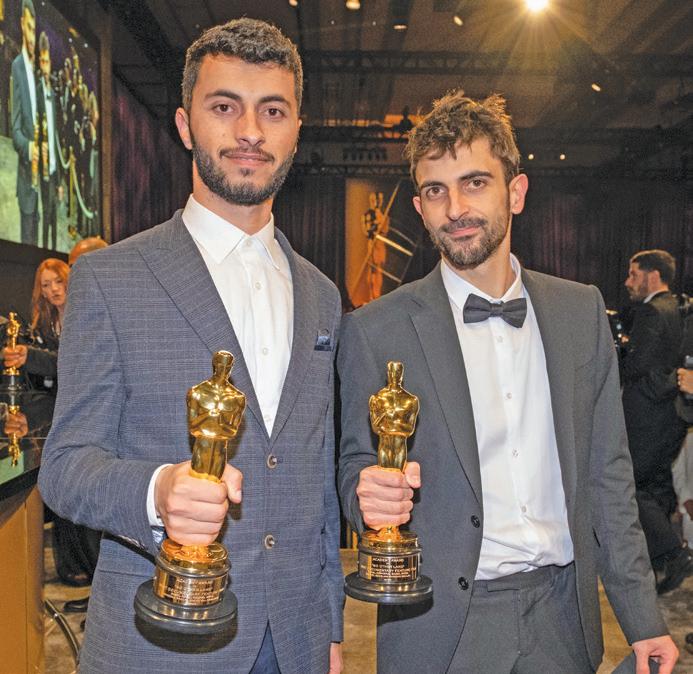
PURIM | EMMA GOSS | J. STAFF
For the past nine years, some 450 synagogues across the world, including many in the Bay Area, have relied on “The Spiel Guy” for behind-the-scenes help to put on witty and relevant Purimspiels.
“The Spiel Guy” is former Bay Area resident Jamie Marx, who runs an online store for Purimspiel scripts, sheet music, posters and more.
Marx, 44, is a cantor at Temple Sholom, a Reform synagogue in the Philadelphia suburb of Broomall. Originally from San Diego, he and his family moved to Concord when he was 12, where he attended Oak Grove Middle School and Ygnacio Valley High School. He stayed in California until he left for cantorial school after college.
He co-wrote his first parody with his best friend when he was 8 years old. It was a twist on Michael Jackson’s hit song “Man in the Mirror.”
He got into spiel-writing leading up to Purim 2014 when he updated an existing Disney-themed Purim script by Norman Roth, a prolific New York-based spiel writer and distributor, to include songs and dialogue from the popular animated film “Frozen.”
“I had a 2-year-old who was obsessed,” he told J.
The script was a big hit.
Then in 2016, when the nation had become obsessed with Lin-Manuel Miranda’s Broadway hit “Hamilton,” Marx’s wife, Anna, encouraged him to try to parody the rap-musical in a Purimspiel. Marx wrote it and even made it available for sale.
“It sold really well that first year,” he said. “I was super surprised, and I thought, ‘Oh, maybe I should write another one.’”
Today, it’s a real business. With help from Anna, who works in nonprofit management, Marx set up online in 2020, becoming a go-to guy for Purim parodies.
Marx recently spoke with J. about the inspiration and process behind more than two dozen spiels he’s written over the years, as well as about his Bay Area roots. The interview has been edited for length and clarity.
J.: You were born in San Diego, but your family relocated to the Bay Area when you were 12. Tell me about your time growing up in the Bay Area.
Jamie Marx: I lived in Concord and my family belonged to B’nai Shalom in Walnut Creek. I was in Midrasha, which was actually a really huge part of my teen years and my Judaism. My wife and I met in high school, originally at a Kesher retreat. We met again in college [at Cal Poly San Luis Obispo]. We had a lot of friends in common. It was meant to be. And after college, my wife and I joined B’nai Tikvah in Walnut Creek.
When you’re writing a spiel, how do you draw the connection back to the story of Purim?
As a cantor, I’m a big believer that we should be faithfully telling the Purim story. I don’t want anyone to come away and hear a different story than the one that we’re intending. I’m not really telling the story of “The Wizard of Oz” or “Wicked.” I’m telling the story of Esther, and the tools I use to bring that out and the way that we highlight what’s within the tale is the real pleasure of writing a Purimspiel.
The Bible includes all the details you need and nothing you don’t. What that means is that sometimes you’re looking for an explanation for why a thing happened, and there’s room there to create a midrash, an interpretation of that story that fills out the characters.
So the question is: Esther shows up at the king’s palace early on in the story to potentially be the new queen. But how did she feel about that? Maybe she was excited to have a life of wealth and to live in the palace? Or was she nervous? Was she scared? Was she indifferent or annoyed?
All those emotional options are available when I write a spiel.
Last year for Purim, during the height of fandom over Taylor Swift’s Eras concert tour, you wrote “Esther’s Story (Taylor’s Version),” a spiel parodying Swift’s most popular songs. What was that process like? I didn’t know a lot of Taylor Swift music, but
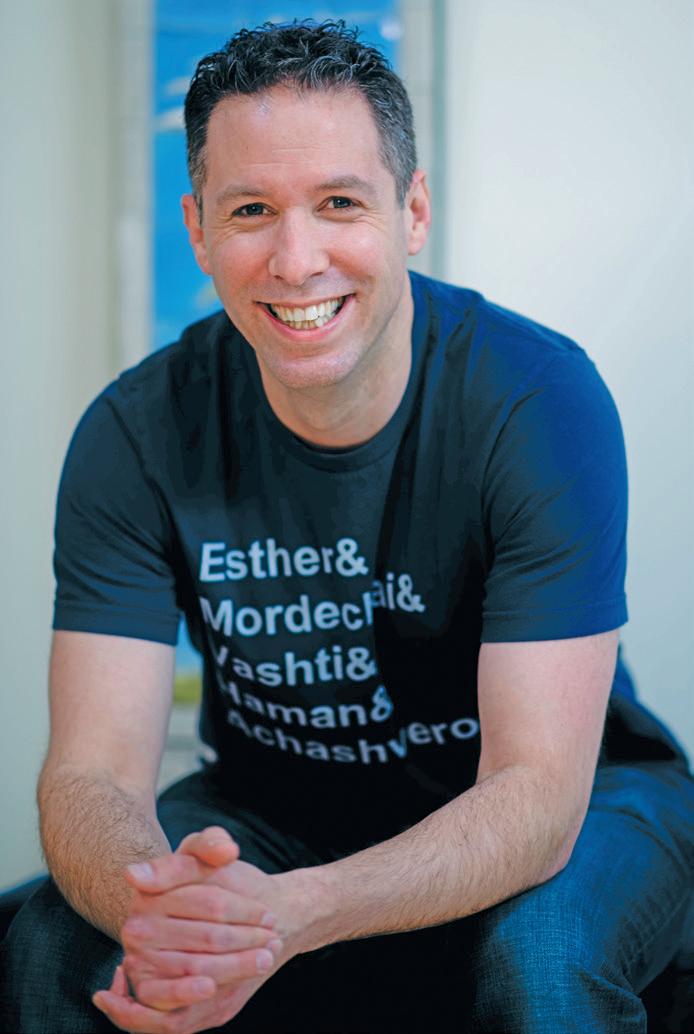
a lot of my students and former students are huge Swifties. I literally texted two of my college-age kids and said, “Hey, I need the Top 20 most well-known Taylor Swift songs. Send it to me.”
I made a playlist of all their suggestions and just played it through until I got 10 songs that I could work with and make great parodies from.
Frankly, it really heightened my appreciation for her craft as a songwriter.
Your newest spiels for this year are parodies of “The Wizard of Oz” and “Wicked.” How many do you typically write each year?
I started off by doing one a year for my first two years, but now I tend to do somewhere between two and four. The themes come to me in a couple of ways. Sometimes it’s obvious. The universe had been talking about “Wicked” for a year before the movie came out.
I knew that was going to be a big thing. Sometimes it’s just what I’m interested in. So this year, I wrote a classic Broadway Purimspiel called “West Side Shpilkes” just because I love Broadway. It was just super fun to write.
And, sometimes, people hire me for commissions.
Your next big project is launching the Philadelphia Jewish Musical Festival in May 2026. What’s the story behind that? It’s a really exciting thing, highlighting both Jewish musicians and Jewish music. Especially post Oct. 7, the Jews need to be loud and proud a little bit more, and we need to gather with not only our fellow Jews, but with the broader communities around us. And there’s absolutely no better way to do that than through music.
Everyone can find a way in and can find something, even if they’re not Jewish. That is a way to build bridges between people that you just can’t do any other way. n
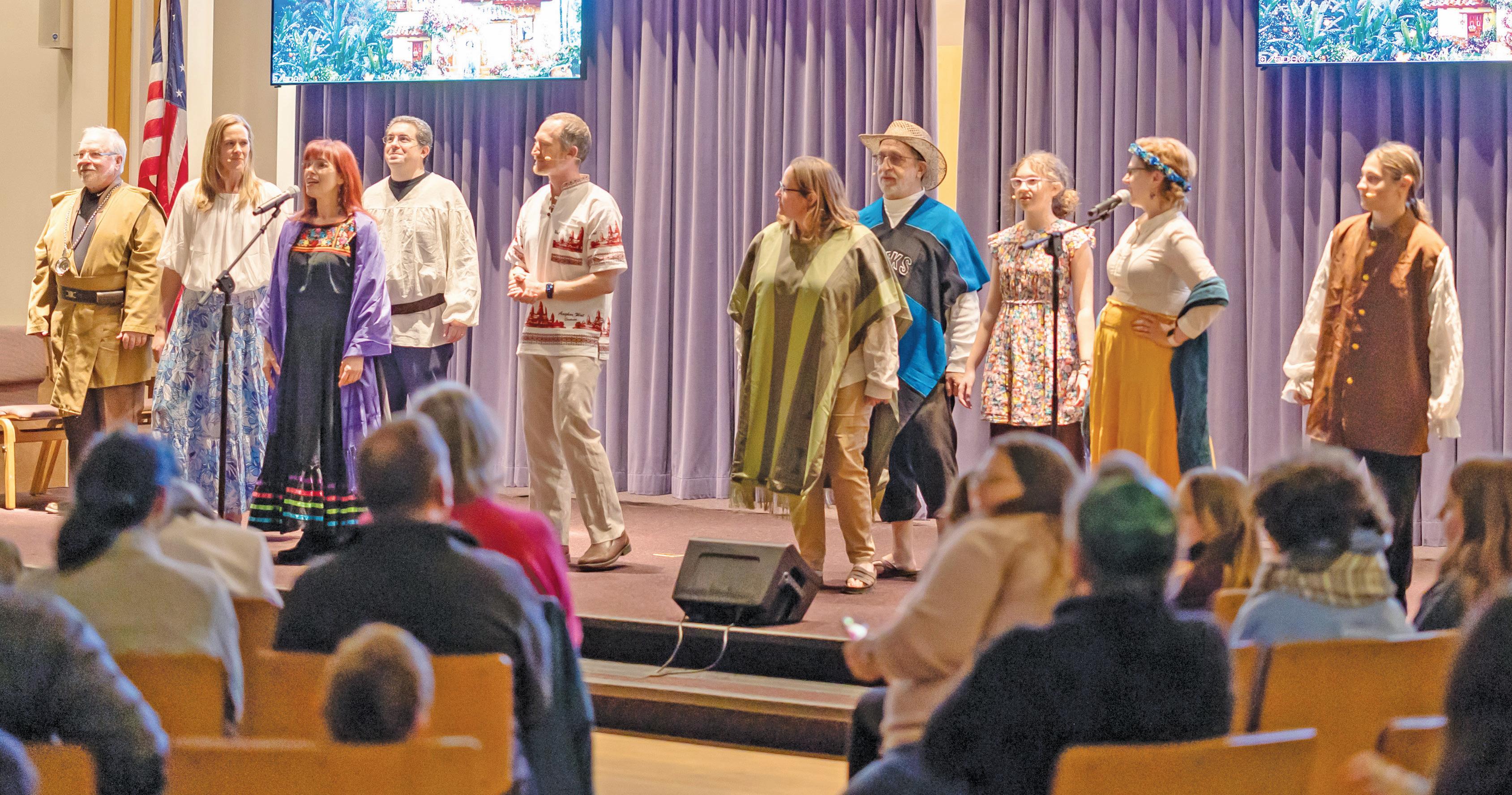
TORAH | RABBI DOV GREENBERG
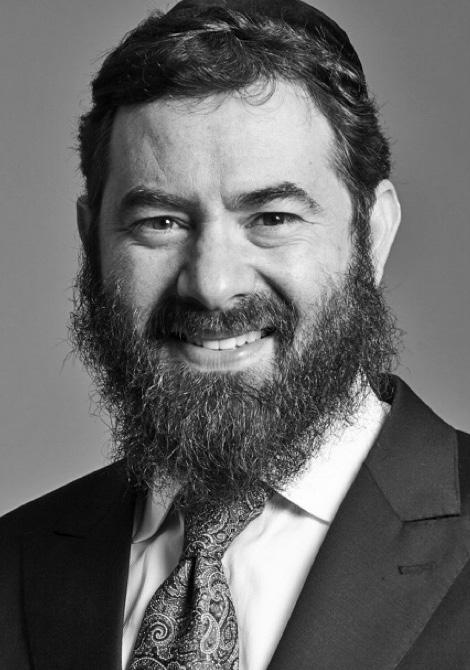
Tetzaveh
Exodus 27:20-30:10
The Jewish calendar is an intricate weave of history and destiny. Every holiday is a fixed point in time, tethered to the event it commemorates. Pesach marks the night of the Exodus. Shavuot recalls the revelation at Sinai. Yom Kippur, the day of Divine forgiveness after the sin of the Golden Calf. The logic is consistent: We remember what happened when it happened.
Except for Purim.
The story of Esther unfolds with remarkable precision. Haman’s decree to annihilate the Jewish people was set for the 13th of Adar. Yet the day of celebration is not the 13th, nor the moment of deliverance itself. Instead, Purim is marked on the 14th of Adar. A day later. As if America were to celebrate July 5th as Independence Day. The question is obvious: why?
The answer reveals something profound — not just about Jewish history, but about the human condition itself.
There are two ways a nation comes together. One is through crisis. The other, through purpose. The first is defensive. The second, aspirational. The first happens when people are bound together by fear and external threat. The second occurs when they are drawn together by a shared vision and collective dream.
The true test of any civilization is not whether it can withstand its enemies, but whether it can justify its own existence beyond them.
Jews have experienced both. The first is as old as Egypt, where we became a people not by choice but by necessity, united under the lash of oppression. But the second? That is Sinai, where we became a nation not of victims but of architects — builders of a civilization based on law, morality and Divine purpose.
And that is why we do not celebrate Purim on the 13th of Adar. That was the day of crisis, when the Jews of Persia stood together because they had no other choice. But the day after — the 14th — was the moment when unity was no longer an act of survival but of identity. It was a choice
MARCH 7 ADAR 7, 5785
Light candles at 5:52 p.m.
Shabbat ends March 8 at 6:49 p.m.
to celebrate, affirm life and transform existence from mere endurance into meaning.
Survival is not a strategy. It is a condition. The true test of any civilization is not whether it can withstand its enemies, but whether it can justify its own existence beyond them. A nation that exists only to resist destruction has already conceded its future to those who seek its demise.
This is the enduring lesson of Purim.
We live in an era of resurgent antisemitism. It has returned in forms both old and new — dressed in the language of politics, human rights and social justice, but carrying the same fundamental objective: the marginalization, demonization and, ultimately, the eradication of Jewish existence. From the targeting of Jewish students on university campuses to the international obsession with delegitimizing Israel, the oldest hatred has found fresh platforms.
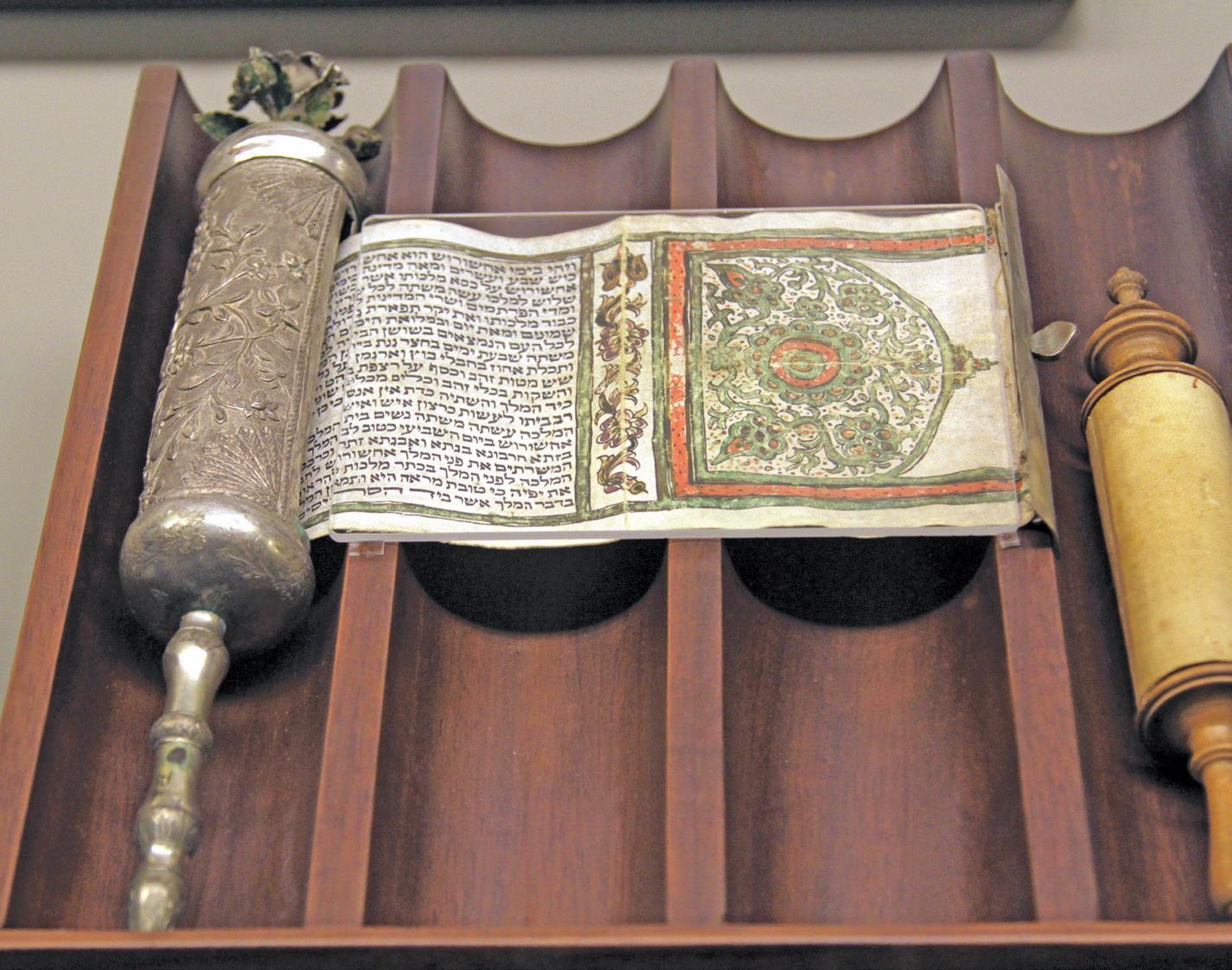
existence is not how much we have suffered, but how often we allow that suffering to become the focal point of our identity. Purim is the corrective. It demands that we not simply endure history, but shape it.
And yet, while vigilance is necessary, it is not sufficient. A Judaism that exists only in response to antisemitism is not a Judaism that will survive.
This is the great strategic miscalculation of those who believe Jewish continuity depends solely on fighting hatred. The reality is that identity built on grievance is unsustainable. The Jewish people did not survive Pharaoh, Haman, Hitler or Stalin simply by fighting back. We survived because we had something to fight for.
That is why we celebrate the day after.
Purim’s message is clear: Do not let crisis define you. Let your vision define you!
It is not the hatred of others that makes us who we are, but the ideals we cherish, the civilization we build, the moral and spiritual revolution we carry forward.
The story of Jewish history is not one of eternal victimhood. It is one of relentless renewal. The tragedy of Jewish
MARCH 14 ADAR 14, 5785 Light candles at 6:58 p.m.
Shabbat ends March 15 at 7:56 p.m.
That is why Purim is the most radical of Jewish holidays. It is a rejection of fatalism. A repudiation of fear. A refusal to let history be written by our enemies. It is the insistence that Jewish life is not about them — it is about us. About the civilization we build. About the future we choose.
Yes, we fight. We must. But we do not build a civilization on the battlefield. We build it through law and ethics, through mitzvot and study, through art and culture, through the vibrancy of a people that refuses to let its destiny be determined by others.
So this Purim, by all means, remember Haman. But do not dwell on him. The real victory is not that he was defeated, but that we are still here — not just to survive, but to live.
Jewish history is not written on the 13th of Adar. It is written on the 14th.
Chag Purim Sameach. n
MARCH 21 ADAR 21, 5785 Light candles at 7:05 p.m.
Shabbat ends March 22 at 8:03 p.m.
MARCH 13-14 ADAR 14, 5785
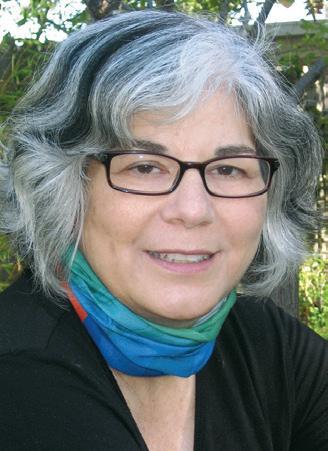
faithkramer.com.
COOKING FAITH KRAMER
Looking for a twist on classic Purim traditions? Try Challah Poppy Seed Babka with Bourbon Sugar Syrup, a new, not-toosweet holiday dessert.
e babka features poppy seeds, a classic filling for Purim sweets. Yiddish for poppy seeds is “mohn,” a sound-alike for Haman, the evil vizier in the Book of Esther. Here the black seeds make festive swirls through the golden challah. e challah tempers their rich taste and keeps the dessert parve and dairy free.
e pastry is brushed with a bourbon sugar syrup inspired by a Polish custom of celebrating Purim with a shikkera, or drunken babka (literally drunken grandmother), where the cake is brushed with whiskey syrup, a nod to the holiday tradition of imbibing alcoholic spirits.
e one-day Purim holiday begins at sundown on ursday, March 13.
CHALLAH POPPY SEED BABKA WITH BOURBON SUGAR SYRUP
Serves 8
1 package (2¼ tsp.) active dry yeast
½ cup warm water
1 tsp. plus 2 Tbs. sugar
3 eggs, beaten
2 Tbs. oil, plus as needed
¼ cup water
1½ tsp. salt
3-4 cups white bread flour
12.5 oz. can poppy seed filling (see notes)
Bourbon sugar syrup or sugar syrup (see below)
Dissolve yeast in ½ cup warm water with 1 tsp. sugar. Wait 5-10 minutes until foamy. Mix eggs in large bowl with oil, ¼ cup water, 2 Tbs. sugar and salt. Stir in the yeast mixture. Gradually stir in 3 cups flour. Mix until smooth and not overly sticky dough forms, adding flour as needed. Knead 10-12 minutes on lightly floured board until dough feels springy and is slightly tacky. Knead in flour if dough is sticky, or water if dry. Place in greased bowl, and turn to coat. Cover. Let rise until doubled, about 30-45 minutes.
Line bo om and sides of an 8½-by-4½-inch or 9-by-5-inch loaf pan with one sheet of parchment paper. Trim any excess, making sure there is a 1- to 2-inch overhang on all sides (for easy babka removal).
Once dough doubles, punch down and knead 2-3 minutes on lightly floured board. Roll out to 15 inches by 10 inches. (If hard to shape, let rest 5 minutes.)
Spread filling over rectangle, leaving a ½-inch margin on all sides. Starting from the long edge, roll into log. Place seam side down. Slice into two long strips. Place strips cut side up (so filling shows) and loosely twist or braid together. Fold the braid in half (“U” shape) and place in pan with cut sides up, tucking in ends as needed.
Let rise until loaf has doubled in size and a knuckle pressed into it leaves an indent that fills slowly and incompletely, about 30-45 minutes.
About 20 minutes before the dough is ready, heat oven to 350 degrees. Bake 30-35 minutes until dark golden brown and an instant-read thermometer reads 190 degrees when inserted in loaf center. Remove from oven. Generously brush exposed areas with syrup. Cool in pan 5 minutes. Remove from pan using overhang. Cool completely on rack.
Babka can be made ahead and frozen. To freeze for up to 1 month, wrap cooled babka (without syrup) in plastic wrap and place in plastic freezer bag. aw in the wrappings. Reheat, unwrapped, on baking sheet at 325 degrees for 10-15 minutes, until warmed through. Brush with sugar syrup.
Bourbon Sugar Syrup: In small pot, combine ½ cup sugar, ½ cup water, 1 Tbs. bourbon or whiskey, and 1 Tbs. fresh lemon juice. Boil 3 minutes over medium-high heat, stirring occasionally. Cool to room temperature. Omit alcohol if desired. Refrigerate up to two weeks. Use at room temperature.
Notes: Poppy seed cake and pastry filling is available online or from specialty or kosher markets and some supermarkets. Challah rising times depend on several factors, including room temperature. ■

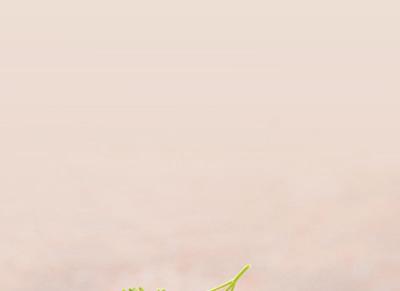

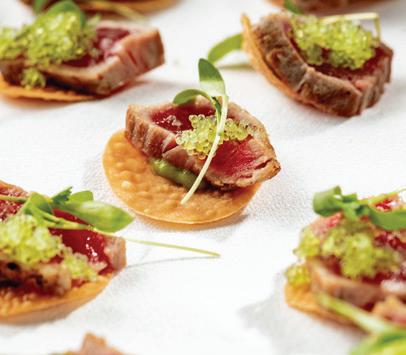
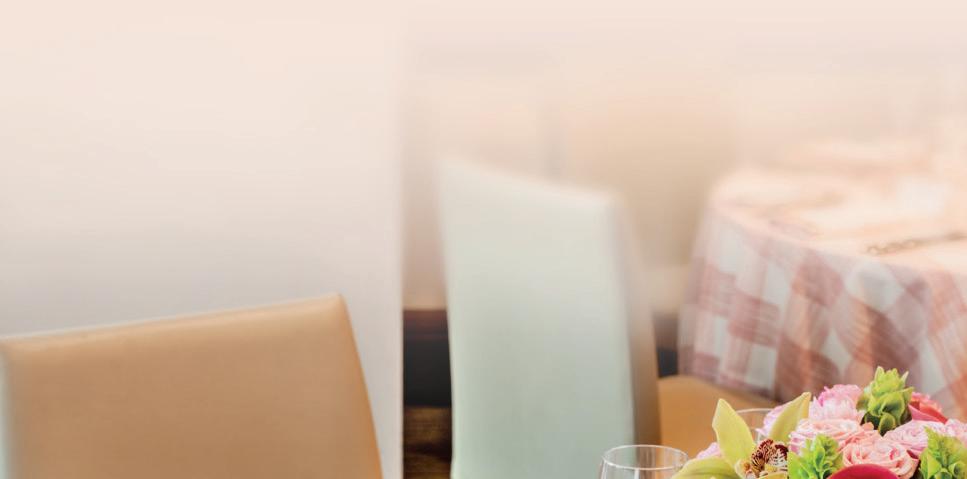
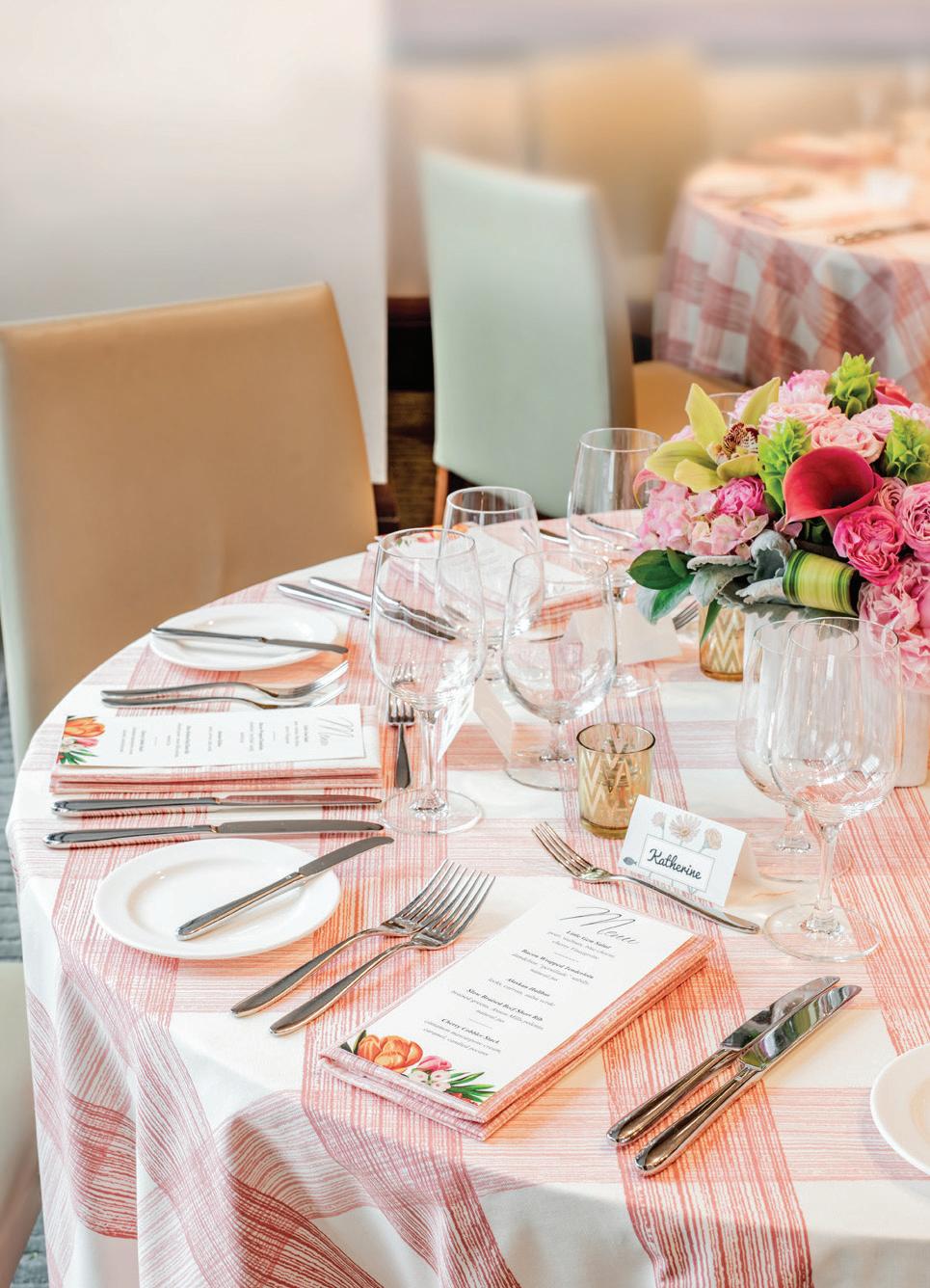
Warmer days, longer evenings, fresh flowers... It’s time to plan your spring events! Whether it’s a bar or bat mitzvah, wedding, rehearsal dinner, shower, birthday or retirement party—or just a lunch with friends—One Market has the experience, the venues, the celebrated fare and the passion to bring your event to life.
With views of the Embarcadero and Bay Bridge, your guests will be wowed with a location like no other in the city.
Seasonal and highly acclaimed farm-to-table menus created by Chef/Partner Mark Dommen and his crew.
Our experienced Events team will expertly guide you through the planning and execution of every aspect of your party, from intimate gatherings to grand affairs.
•
For more information or to book a site visit, contact our events team: 415.777.2233 | events@onemarket.com

The Food section is supported by a generous donation from Susan and Moses Libitzky
THE ORGANIC EPICURE ALIX WALL
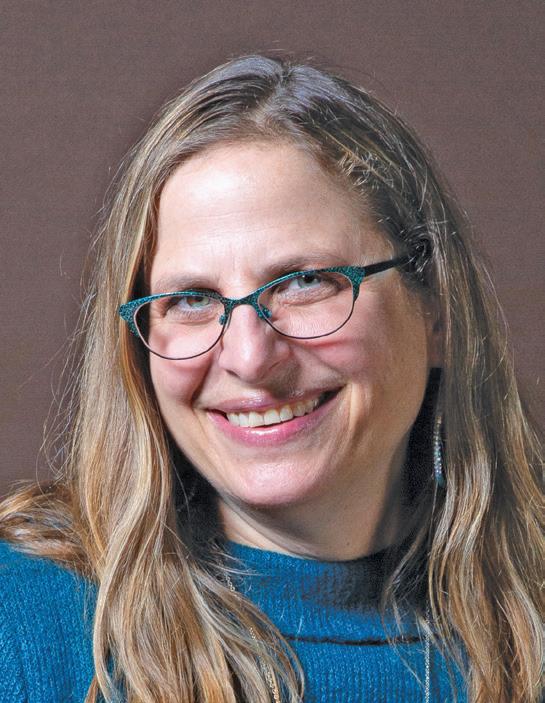
Alix Wall is a contributing editor to J. She is also the founder of the Illuminoshi: The Not-So-Secret Society of Bay Area Jewish Food Professionals.
As soon as I finished interviewing Rory Kandel about Rory’s Bakehouse, I placed one of her pre-shaped balls of cookie dough on a pre-cut circle of parchment paper and sprinkled a bit of flaky salt on top — everything had come packaged in a pink and white bakehouse bag — and placed it in my oven.
As I waited 26 minutes for it to bake, the most wonderful sugary, chocolatey smell filled my kitchen. The result was a giant cookie, easily enough for three people, with crisp edges and a softer center, just as it should be. It reminded me of my mother baking Nestle Toll House cookies for me as a child, though, of course, I knew that the ingredients here were so much better.
“I love that people are getting an extra level of joy from my products,” said Kandel, chef and owner of Rory’s Bakehouse, a business the Napa resident started during the pandemic making and delivering home-baked goods. “I don’t know anyone who doesn’t like the smell of freshly baked cookies. It gives people an emotional connection.”
Kandel, 45, is dreaming big, hoping that she’ll become the next big chocolate chip cookie brand, like Mrs. Fields. “It has happened to others,” she reasons. “Why not me?”
Her cookie kits make batches of either a half-dozen or a dozen, and each cookie is giant. Kits can be ordered on her website and shipped nationally, and are also in some Napa grocery stores. Soon they’ll be coming to San Francisco, along with more bake-at-home products. Her cookies and coconut Rice Krispy treats with chocolate chips can be found at the Loveski Delis in Napa and Larkspur.
In December, Kandel opened a storefront window at 2766 Old Sonoma Road in Napa, where customers can buy additional bake-at-home items like passionfruit thumbprint cookies, toffee pies, cinnamon rolls and scones, both savory and sweet. Some of these pastries, already baked, are also available on any given day.
“I’ve always loved feeding people,” she said. “And doing it this way gives people something extra than the already baked.”
Back in September, Kandel came out in a very public way in the San Francisco Chronicle about her diagnosis of multiple sclerosis, an autoimmune disease of the central nervous system, and how difficult it was to launch the small business of her dreams while dealing with debilitating chronic pain. She continues to speak out about her experiences on Instagram. Her symptoms haven’t improved since she began telling her story. In fact they’ve gotten worse; at times, she has to temporarily close her business due to MS flareups. But at least now she is no longer suffering in silence.
“It’s such a lonely disease,” she said. “No one understands what it’s like for me on a daily basis, and now I have a community of people who reach out to me. I’m very sad about it a lot of the time and what it’s taking away from me, and sharing about it makes me feel less of that. And there’s not enough people with MS that are comfortable talking about it to give a face to it.” A small amount from every purchase through Rory’s Bakehouse goes to the National Multiple Sclerosis Society. (According to the nonprofit, National MS Awareness Week is March 9-15.)

“I love that people are getting an extra level of joy from my products.”
Rory Kandel
What Kandel did not talk about in the Chronicle interview is her Jewish background. That, she saved for J. Originally from the Five Towns of Long Island, N.Y. (Hewlett to be exact), nearly everyone Kandel knew growing up was Jewish. Her grandfather Milton owned an Automat-like restaurant in Manhattan and a theater district bar. Her family wasn’t observant and identified mostly as “food Jews,” she said. To this day, she thinks her own matzah ball soup is the best. “When I think of my Jewish background, I can smell the food of my grandmother’s house,” she said.
Her first exposure to living in a non-Jewish milieu was while attending Johnson & Wales University in Rhode Island, where she studied bakery and pastry. Though she had never called attention to the fact she was Jewish, she woke up one morning and found her car vandalized and a swastika carved in the snow. She later found out the perpetrators were her neighbors, who were also her fellow students.
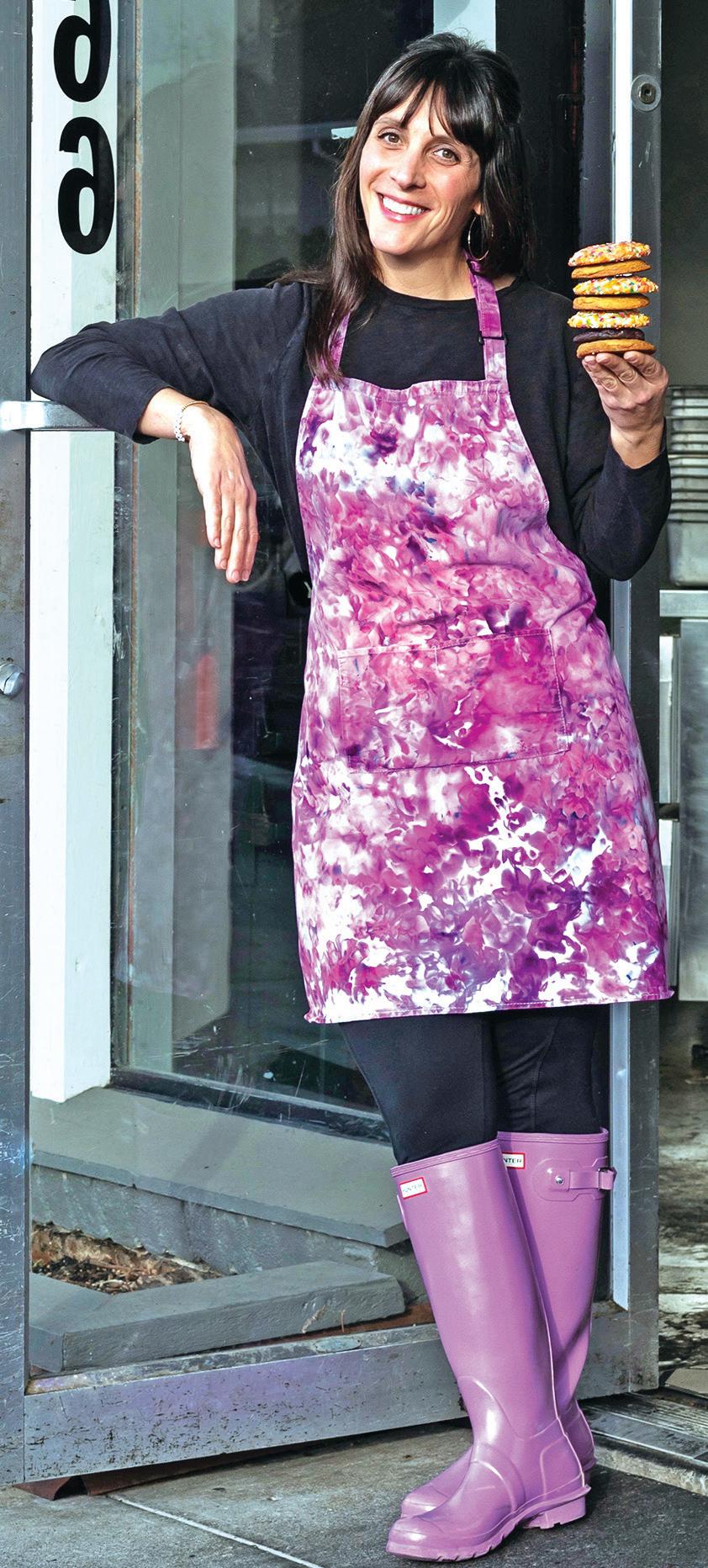
The incident frightened her so much that for most of her adult life, she didn’t want to call attention to the fact that she was Jewish.
But sometimes, life surprises you.
For starters, in the past few years Kandel has shared a commissary kitchen space with Dana Koschitzky, who has a strong Israeli and Jewish identity and has become like a sister. (Koschitzky’s company, The Tish, makes heavenly babka.) Even more impactful in reconnecting Kandel with her Jewish heritage, though, has been the very Jewish journey taken by her 17-year-old son.
It’s hard to explain, she said. Her son’s father (her ex) isn’t Jewish, and they didn’t raise their children with any religion. Kandel describes her son as very intelligent, wise beyond his years. As a young teenager, he read widely about world religions. The more he learned about Judaism, the more it resonated. He began frequenting the Chabad house in Napa. Feeling like no one understood him in his public school, he’s now on a full scholarship at an Orthodox high school in Texas. He plans to attend a yeshiva in New York next year.
“He’s absolutely the most observant person I’ve ever met, and he has no fear,” Kandel said. “He’s very proud of who he is.”
She’s had time to get used to the changes, but it was terribly hard for her at first.
“I felt like I lost my child, as we can’t share meals together,” she said. “It was all just a real learning curve for me.”
While acknowledging the difficulty it caused her, she also sees the benefits.
“The older I get, the more aware I am of how few Jews there are in the world,” she said. “As hard as this has been with my son, he’s given me a gift, too, to be prouder of my ancestry. He feels so strongly about being unique because of his Judaism, that I can’t help but feel some of that too.”
When Beza Abebe began to think about transmi ing culture to children, especially among the relatively small number of Ethiopian Jews in the U.S., food became an obvious vehicle to her.
“What part of your culture would you want to see on your kids’ and grandkids’ tables in the future?” and “What part of our heritage do we want them to have?” were the questions she and her peers were asking each other.
With funding from the Bay Area-based Jews of Color Initiative, the Oakland resident has spearheaded a video series called “Emaye’s Kitchen” (“Mom’s Kitchen” in Amharic), in which Bay Area Ethiopian Jewish women share favorite recipes, as well as their heritage.
Abebe, 38, has two sons with her Eritrean immigrant husband. A Jew-by-choice and an Israeli citizen, she a ended graduate school in Israel and obtained a doctorate in juridical science at Golden Gate University in San Francisco.
One video has been released so far (tinyurl.com/ethiopian-videos) of Maya Lagese Shumsker, who came to Israel as a child during Operation Solomon and now lives in the East Bay. She makes Misir Wot, a fragrant red lentil and tomato stew. Interspersed with the cooking, Shumsker talks directly to the camera about her desire to educate people about the Ethiopian Jewish community — Beta Israel, which goes back thousands of years — especially since Oct. 7, 2023, when all Israelis have been falsely painted as homogenous “colonizers.”
“Suddenly, people were talking about ‘white Jews,’ as if we don’t exist here,” Shumsker says in the video.
According to Gabi Kuhn, managing director of the Jews of Color Initiative, the videos were funded as part of a round of grants focused on cultural preservation in intergenerational relationships.
Food is a “powerful portal into memory, family histories and cultural traditions,” according to the initiative’s website, and “transmits cultural identity l’dor vador — from generation to generation.”
Kuhn said they are definitely seeing an upswing in food-focused projects, as “food brings people together and is a naturally inviting thing. It crosses barriers and fosters pride and joy.”
Future videos will feature others in the small local Ethiopian Jewish community, like Aviva “Vivi” Bayun of Walnut Creek, who last year collaborated with Chabad of Contra Costa to hold a Sigd celebration, a holiday unique to Ethiopian Jews. Abebe also plans to demonstrate a traditional Ethiopian co ee ceremony.

“We want Jews to think of Ethiopian food as Jewish food, too,” she said, as opposed to Ashkenazi dishes, like matzah ball soup, that are most o en held up as examples of Jewish food.
Abebe said she has to work harder to transmit her cultural identity to her sons now that she lives in the Bay Area.
“In Israel, I wouldn’t need to do that much,” she said. “It’s so much easier when you’re exposed to the language and culture and see people who look like you. Here it’s not that obvious. I need to work on creating a feeling of belonging for them. Otherwise it won’t continue.”
Abebe also seeks to raise the profile of the Ethiopian Jewish community in the Bay Area.
“We hope to be visible, to bring our stories and our heritage to the community,” Abebe said. “Our hope is that our kids will feel they belong to the greater Jewish community, and that they can bring their color, their spices and their stories and make the Jewish community more beautiful.”
Welcome to “Bagel Blurb”: It’s become apparent that there are way too many bagels in the Bay Area for one columnist to keep up with. If we covered every new place, this column would be largely devoted to bagels. As much as we love them, that’s not going to happen. Besides, at many of these shops, the only Jewish connection is the bagel itself. To remedy this hole, we’re
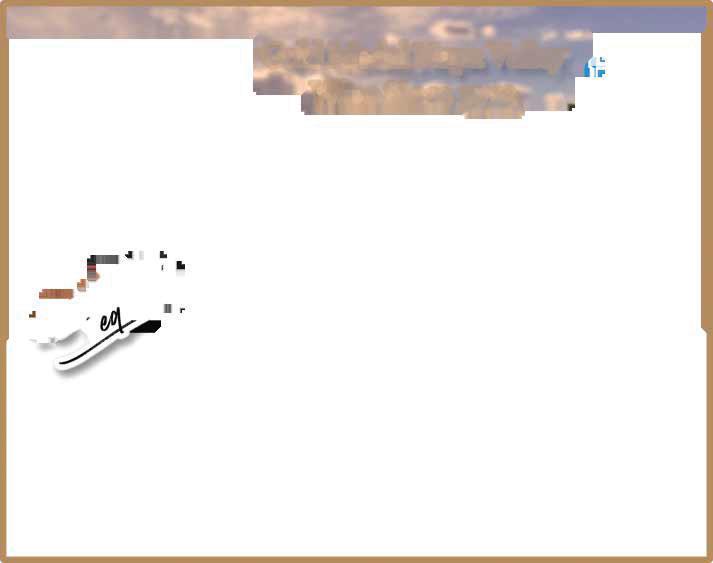



WE'D LOVE TO HOST YOU FOR A WINE TASTING AT OUR CHARMING WINERY IN THE HEART OF NAPA VALLEY! ENJOY A FLIGHT OF CURRENT RELEASE WINES FROM THE COMFORT OF YOUR PRIVATE, GAR DEN-SIDE TABLE.
VISIT WWW.HAGAFEN.COM OR CALL (707) 252-078 I X I I 3 TO RESERVE



Vaad supervised at factory


going to have an occasional blurb with bagel news we hear from other sources. Schlok’s Bagels & Lox now on Fell Street will be opening a second store, according to the San Francisco Chronicle. It will open sometime this summer downtown on California Street (two blocks from the 6-month-old Boichik outlet). A new place called Bones Bagels also will be opening this summer in Noe Valley, according to Eater SF. Bones is di erentiating itself through its owner Noah Orlo , who uses bicycle power to grind the wheat berries. Other bagel joints we’ve been hearing good things about for a long time: Dudley’s Bagels, made in Marin and sold at Marin and S.F. farmers markets; the Laundromat on Balboa Street in S.F.’s Outer Richmond; and Chicken Dog Bagels, which have to be preordered and picked up on Cortland Avenue in S.F. We also just heard about Bagele o in the Mission, which is baking ’em fresh all day long, according to the Chronicle. ■





Food & Gifts
Issue date: March 21
Reserve ad space by March 11 Passover
Issue date: April 4
Reserve ad space by March 25 Spotlight on Israel
Issue date: April 18
Reserve ad space by April 8
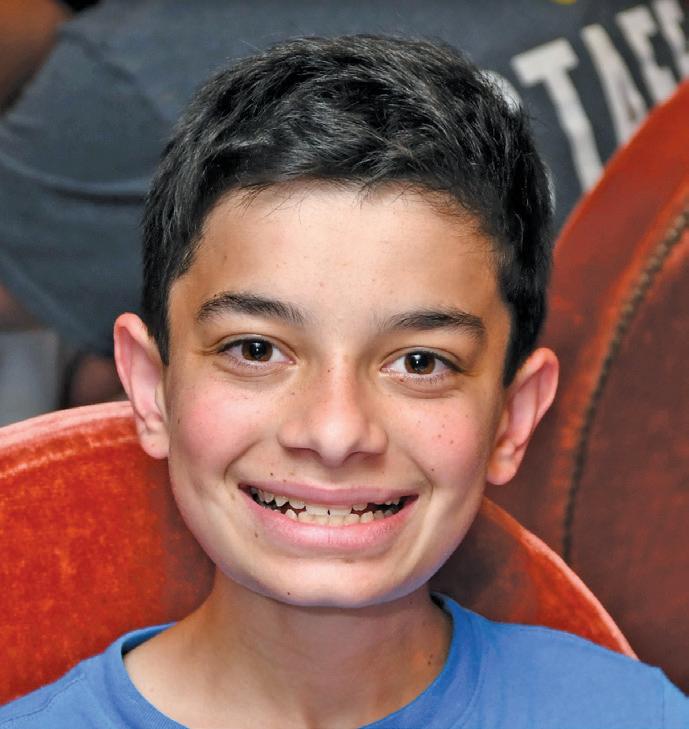
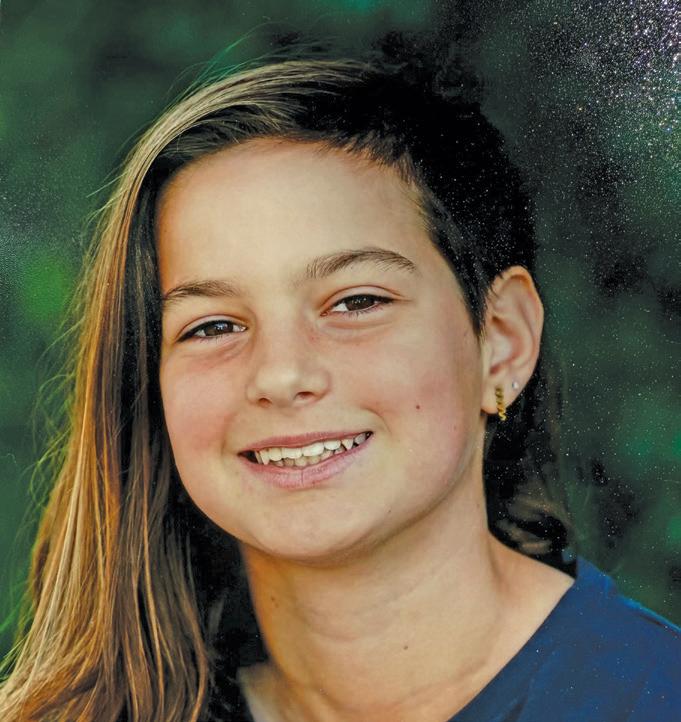
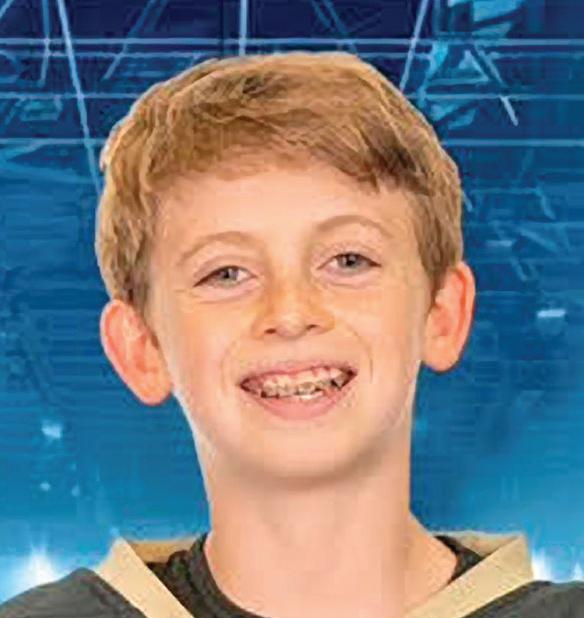
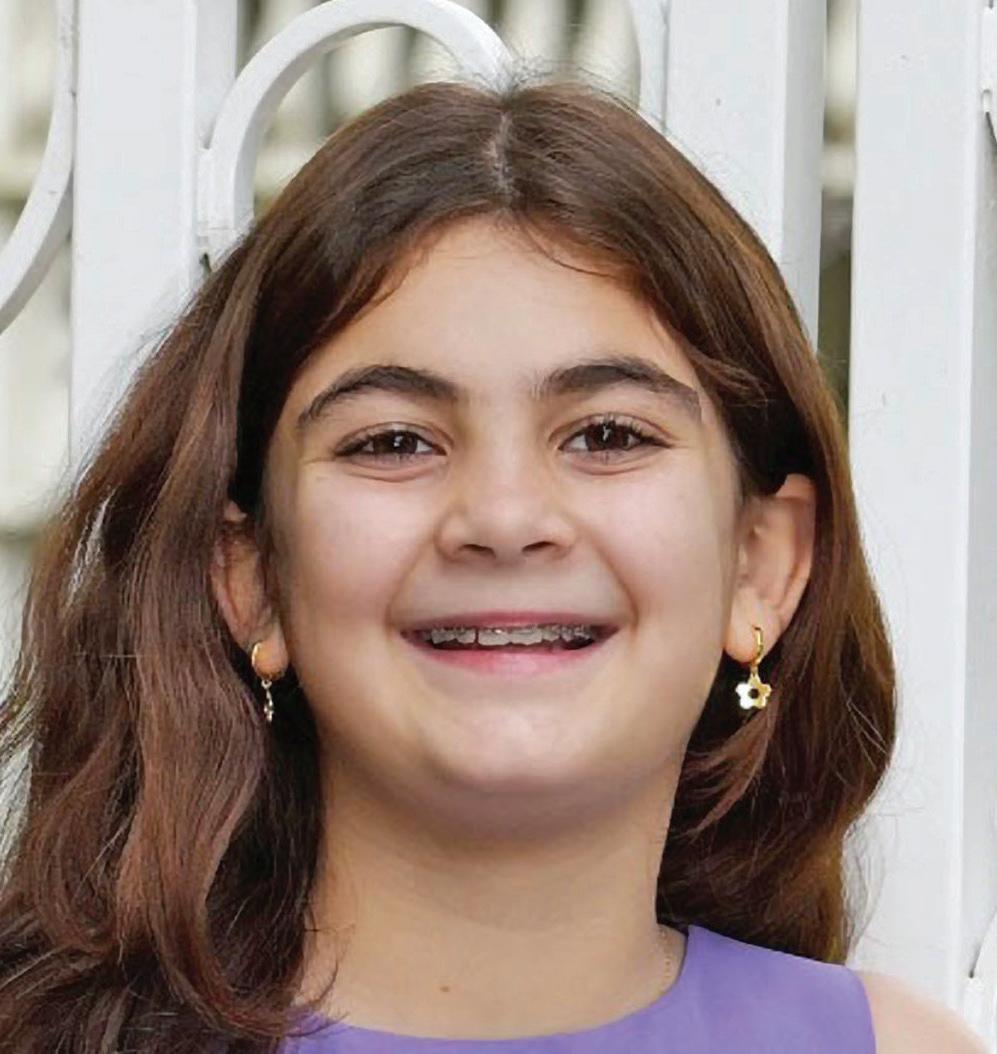
Issue date: May 2
Reserve ad space by April 22
Senior Life
Issue date: May 2
Reserve ad space by April 22
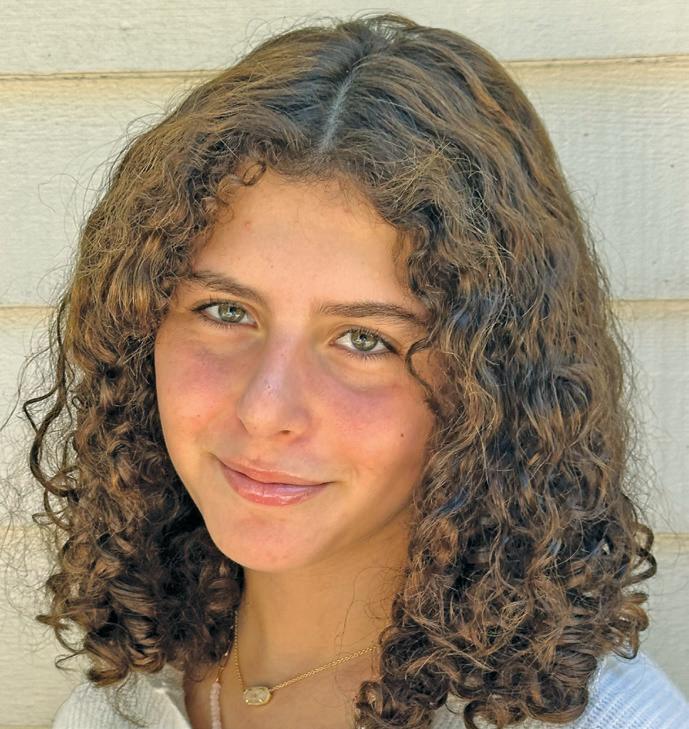
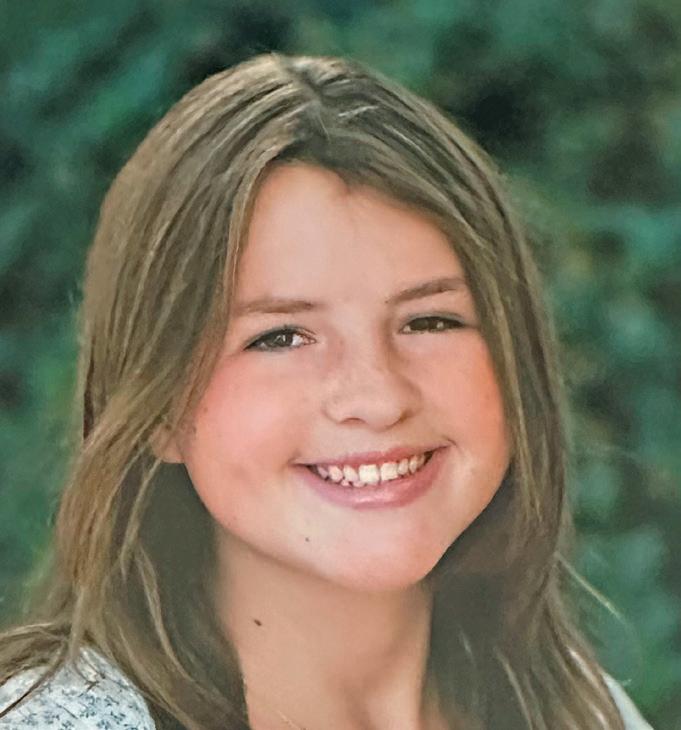
LILA S. RICH
Sept. 12, 1933–Feb. 16, 2025
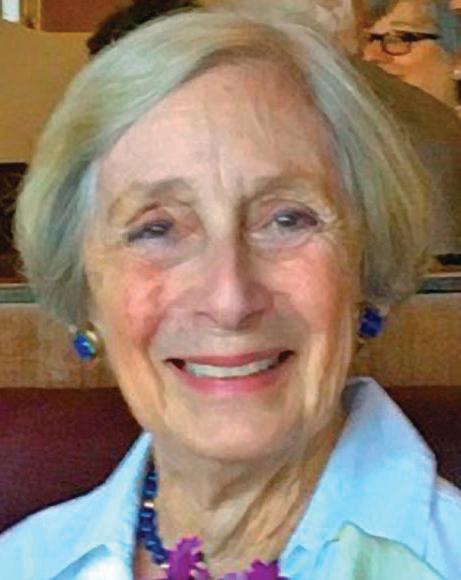
Lila passed away peacefully at home on Feb. 16, 2025, at the age of 91.
Born Lila Joan Sankowich on Sept. 12, 1933, to Sam and Sarah Sankowich, Lila was a second-generation San Franciscan who grew up in the Sea Cliff neighborhood and spent most of her life in the city she loved. She graduated from Washington High School and then attended UC Berkeley, which she graduated from in 1955, a Phi Beta Kappa and member of the Torch and Shield Society. In 1956, she married Neville Rich, and together they raised four children in the Jordan Park neighborhood of San Francisco.
Lila was a strong proponent of public education and insisted her children go to public school, even as busing was initiated and others fled the system. After her children were all in school, Lila went back to school herself to get her teaching credential, and was a substitute teacher in San Francisco public schools for a number of years before focusing her time as a commercial property manager. Throughout her entire life, well into her 70s, Lila was always giving back to the community, volunteering for organizations such as the PTA, Hadassah, Israel Bonds, Temple EmanuEl and UC Berkeley, where she served on the Foundation Board, the Alumni Association Board and as Class of ’55 Reunion Chair. A true Cal fan, she rarely missed a Big Game,
always decked out in blue and gold.
Lila cared dearly for, and stayed connected to, her large group of close friends, some of whom date back to Alamo Elementary School. She gave so much to, and received such support from, her lifelong girlfriends over the decades. Most of all, though, family was her first priority. Lila took great joy in seeing her children and grandchildren grow up — often visiting those who moved away and taking all the grandchildren to Washington, D.C., in their tween years. Not only was she the strong and proud matriarch of her immediate family, but she also kept the larger Sankowich clan together after her mother’s death, hosting most extended family gatherings and maintaining Jewish traditions. Lila was famous for her matzo balls and homemade gefilte fish but most of all — her leftovers, and the red, white and blue Jello for 4th of July in Sonoma.
Neville and Lila were married for 64 years before his passing in 2020. Lila was preceded in death by her brother Lloyd and sister-inlaw Antoinette. She is survived by her brother Lee, children Edward (Sharon), Andrew (Michelle), Juli (Michael) and Dan (Abbie), nephew Matt (Lisa), daughter-in-law Laurie Miller, her eleven grandchildren: Hannah, Becca, Kellan, Gregory, Nicole, James, Maya, Davis, Elana, Carly and Josh, as well as four great-grandchildren and many nieces and nephews. She was loved dearly by her family and will be missed by all whose lives she touched.
If you wish to honor Lila’s memory with a donation, please consider the Rich Family Achievement Award at UC Berkeley (fund W7962), or the charity of your choice.



JOBYNA DELLAR
July 18, 1940–Feb. 13, 2025
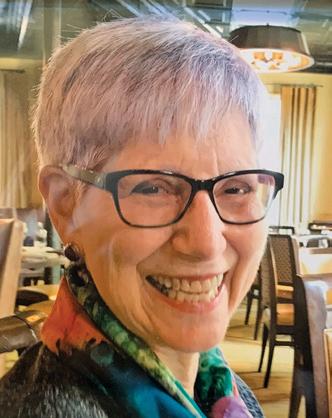
Jobyna Dellar, a beloved wife, mother, grandmother, and community volunteer, passed away peacefully on Feb. 13, 2025, after an eight-year battle with Alzheimer’s disease. She was 84. For nearly five years, Jobyna resided at the Rhoda Goldman Plaza memory care unit, where she received compassionate and loving care.
Born in New York City on July 18, 1940, Jobyna spent her early childhood in New Jersey before moving to Berkeley, California, during World War II. She attended Berkeley High School and went on to graduate from UC Berkeley with a degree in business, after beginning her studies at UC Riverside.
In 1961, Jobyna married Edward Tanovitz, with whom she had two daughters, Eden Tanovitz Rodriguez (Giovanni Rodriguez) and Erica Tanov (Steven Emerson). Though that marriage ended in divorce, and after a brief second marriage, Jobyna found lasting love with John T. Dellar. They married in 1984 and shared nearly 45 wonderful years together. She is survived by John, her daughters, her grandchildren Isabelle Tanov, Hugo Tanov, and Isaac Rodriguez, her sister Charlene Akers (Nate Levine), her brothers Robert Akers and Peter Akers, her nephew Ryan Akers, her stepdaughter Lauren Dellar, and stepsons Richard Dellar and Joshua Dellar.
Jobyna was a successful businesswoman, owning her own sales representation business in the o ice supply industry. After retiring, she
dedicated herself to volunteer work, a passion she pursued for many years. Her contributions to the community were significant and touched many lives. She volunteered with adult and children’s reading programs, served as a classroom aide in elementary schools, and worked with the PIP (Primary Intervention Program) at three San Francisco elementary schools. “Miss Jobyna,” as she was a ectionately known, made a lasting impact on her students, many of whom would later express their gratitude for the positive start she gave them. She also volunteered with the Institute on Aging’s Friendship Line, o ering a listening ear and warm connection to those who called.
Jobyna’s impact extended to her faith community at Congregation Sherith Israel, where she and John actively participated in various projects. She cherished her friendships with her reading and walking groups, enjoyed knitting, theatre, and movies, but above all, she loved spending time with her three grandchildren.
Jobyna will be deeply missed by her family, friends, and the many communities she so generously served. A memorial celebration of her life will be held in late spring.
Donations in Jobyna’s honor can be made to Rhoda Goldman Plaza, Congregation Sherith Israel, the Institute on Aging, Hospice of San Francisco, or the charity of your choice.


continued from page 37
D. CANDAU
Dec. 29, 1925–Feb. 5, 2025
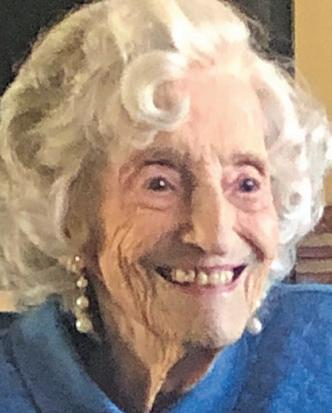
Patricia D. Candau passed away peacefully in Walnut Creek, on Feb. 5, 2025, at the age of 99, surrounded by her family.
Patricia was an amazing woman of strength, independence and resilience. She grew up in London, England, starting work at age 16 for the Army Pictorial Service during WWII. A year later she met and married Ray, a U.S. Army serviceman. While Ray was still fighting the war in Europe, Patricia traveled across the Atlantic on the Queen Mary, eventually landing in San Francisco to live with her in-laws. She worked for an insurance company in San Francisco and later held jobs in Concord with an art fabricator and general contractor while raising her three children to support the family. After retiring in her mid-70s, Patricia shifted focus with volunteer
roles taking care of infants at the Bay Area Crisis Nursery and helping Russian emigres learn English through Jewish Family and Community Services.
Patricia faced many challenges throughout her life with a toughness and survival instinct and yet delighted everyone around her with her wit and British mannerisms. Family and her Jewish roots were of utmost importance to Patricia, especially later in life as she re-embraced Judaism, reuniting with her sister, nieces and nephew and celebrating her first Jewish wedding in over 70 years for her grandson Garrett.
Patricia is survived by her daughter Christine (Gordon) McCloskey; sons Paul (Julie) Candau and Bradley (Linda) Candau; grandchildren David, Michelle and Marc McCloskey; Matthew, Michael, Nicholas, Garrett and Joshua Candau; nine great-grandchildren, and two great-great-grandchildren.
Donations in her memory can be made to the Contra Costa Jewish Day School, Lafayette, CA, or Temple Isaiah, Lafayette, CA.

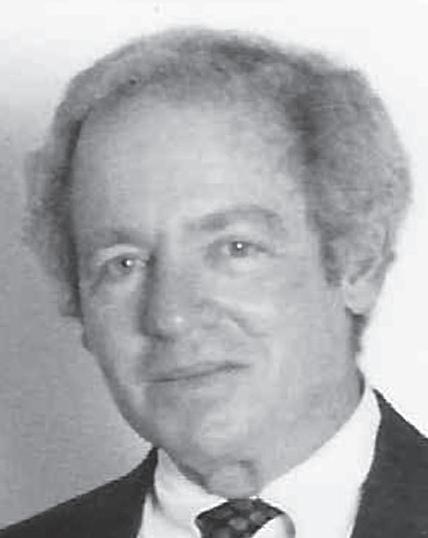
Gary Goddard passed away peacefully at home surrounded by family and his furry sidekick Melody on Feb. 8, 2025.
He whispered “I love you” and sang the last word of his favorite song, Mr. Bojangles: “Dance.”
Gary is survived by his wife, Yvonne Goddard, of 63 years, son Marc Goddard, daughter Renee Goddard, son-in-law Alexei Tcherepanov and grandchildren Sasha, Ruby, Quinn, and Lilian.
Gary was an Insurance Broker in his native city of San Francisco for over 60 years.
He was appointed President of the Society of Insurance Brokers during its 50th Anniversary year and made partner at Dinner & Levison company in 1976.
He served as the Insurance Broker pro bono helping open San Francisco’s Delancey Street, the country’s leading self-help organization, “a community where people with nowhere to turn,
turn their lives around.”
He was passionate about supporting people’s personal and professional growth and served faithfully on the Board of Jewish Vocational Service. His support and respect for the work of Jewish Family and Children’s Services was unwavering.
Gary was an urban and mountain Renaissance man. Skiing on the weekends in Bear Valley where he and his brother Michael built one of the first cabins in 1968. He played tennis and pickleball with his steadfast friends until he turned 84, and he supported the ballet, symphony, and the Museums of San Francisco.
Despite his self-declared tone-deafness, he memorized and sang loudly and proudly the lyrics to most Broadway musicals.
Gary was adored by his children and grandchildren. His jokes and Batman stories always filled the room with laughter.
He made everyone he met feel special and modeled fairness and kindness.
He is cherished and missed and will travel in our hearts and memories forever.
DAVID RABB SR.
April 22, 1939–Jan. 31, 2025
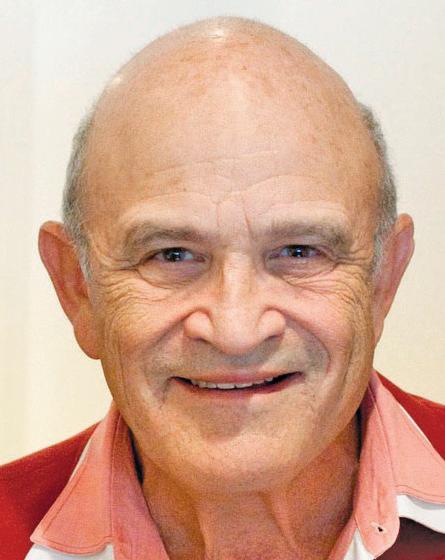
David Samuel Rabb Sr. of San Rafael, CA, passed away at the age of 85, surrounded by his loving family, on Friday, Jan. 31, 2025. He was preceded in death by his sisters, Helen Paige and Stephanie Axner, and his brother, Jimmy Rabb, and is survived by his wife of 59 years, Mary Rabb, and their three boys, David Rabb Jr., Ben Rabb (Jodi), & Daniel Rabb (Alison), and four grandchildren, Jacob, Petra, Hailey & Samantha Rabb who lovingly referred to him as Papa.
David often told those around him that he was the luckiest man he knew.
He was born on April 22, 1939, in the booming town of Akron, Ohio, to Beatrice and Edward Rabb. His father, a lawyer, owned and operated movie theaters … as movies were his first love. Together with his mom they built a beautiful family that sat at the center of Akron’s Jewish community. David
The Obituaries section is supported by a generous grant from Sinai Memorial Chapel, sinaichapel.org
left Akron for college, spending two years at Ohio State University and completing his studies while gaining lifelong business skills at Babson College in Wellesley, MA.
He landed his first job in finance at Alside Steel, a company owned by a close family friend, where one of his early assignments required him to travel to San Francisco. Sitting by the Bay, he fell in love with the city and at the age of 22, made the bold decision to move across the country “all the way to San Francisco.” While David left Akron quite young, Akron never quite left him. He remembered everyone and everything, and wherever he went would miraculously find and bond with Akronites.
In San Francisco, David’s life got very lucky when he met Mary. David fell in love at first sight, and after only a brief encounter, pursued Mary, first contacting the registrar at UC Berkeley to get her phone number, and next blindly calling her for a date. The serendipitous encounter led to a whirlwind romance, and one year later, they were married.
David’s ability to connect with others was one of his most endearing traits. He struck an imposing stature, but was truly a warm teddy bear that made
people feel secure. He listened intently, respected deeply, and made others feel valued. He carried those skills into his personal relationships, his professional life, and shared them with his community and was truly beloved for it.
David entered Mary’s family business, Grodins and Tannery West, helping his father-in-law, Arnold Michaels, build a chain of 67 clothing stores across the United States. However, David found his true passion building his own career in real estate. He started in residential brokerage in 1974 at Frank Howard Allen in San Rafael, eventually founding his own company, David Rabb Realty. As he expanded his career, David shifted to commercial partnerships and development, and later founded a Real Estate Investment Trust (REIT).
David felt most lucky when surrounded by his family and friends. The home he and Mary built was full of activity and welcomed all, entertaining a constant rotation of family, friends, neighborhood kids, and playing host to decades of celebrations and holiday parties. He was a best friend and the quintessential uncle, always willing to offer up his time for relationship guidance, business advice, or just to enjoy good food and a drink, preferably Jack
Daniels on the rocks. While he spent 50 years as a Rotarian and on many other nonprofit boards, his true charity was in his everyday actions constantly helping people in every and any way possible.
David shared his love of life with his wife and they traveled to the ends of the world. They were constant companions, and even more than saying he was the luckiest man, David would constantly profess his love for Mary to anyone who would listen, all the time, especially to their three boys.
David’s love for people and life remained constant, even as his health declined. He found joy in every moment and in the company of those around him. His legacy of kindness, commitment, and generosity lives on in the many lives he touched.
David always said he was the “luckiest man he knew,” but those who knew him may well have been the luckier ones.
May his memory be a blessing.
Donations in David’s memory are welcome to Congregation Rodef Sholom and to the Rotary Club of San Rafael or the charity of your choice. Please email Michael Wattjmikew07@gmail.com if you would like to make a David Rabb memorial donation to the Rotary Club of San Rafael.
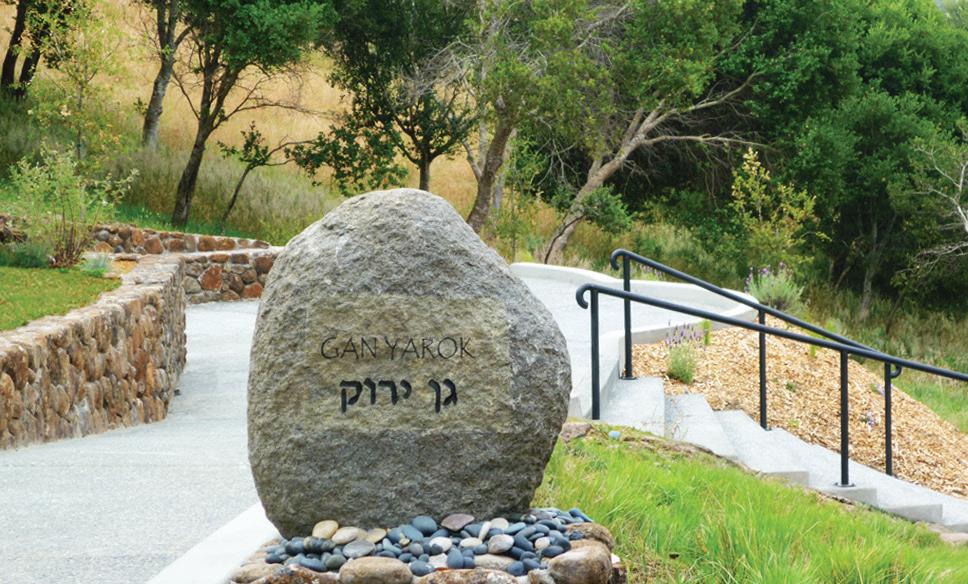

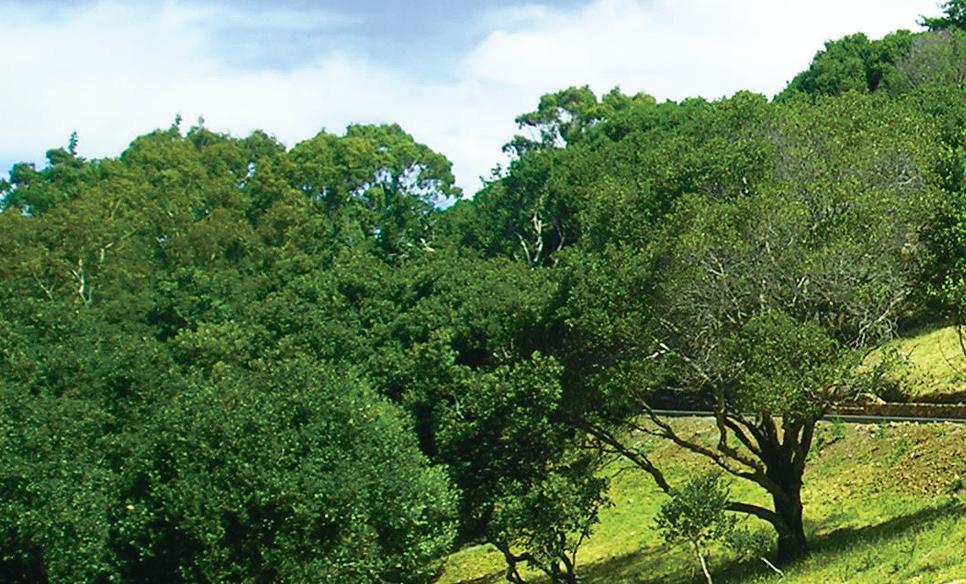

MAYA MIRSKY | J. STAFF
A 1928 article in these pages about a San Francisco theater company included a paragraph about a play that had been presented in 1926 featuring “machine-made men.”
The play was an English translation of “Rossumovi Univerzální Roboti” (Rossum’s Universal Robots), written in 1921 by the Czech author Karel Čapek, and known in English as “R.U.R.” It’s the story of what happens when humans create intelligent robots but, at their own peril, assume the robots have no agency.
something that is potentially better, stronger and smarter than humans?
Helena. Oh, but they’re so intelligent.
Hallemeier. Confoundedly so, but they’re nothing else. They’ve no will of their own. No soul. No passion.
Helena. No love?
Hallemeier. Love? Huh! Rather not. Robots don’t love. Not even themselves.
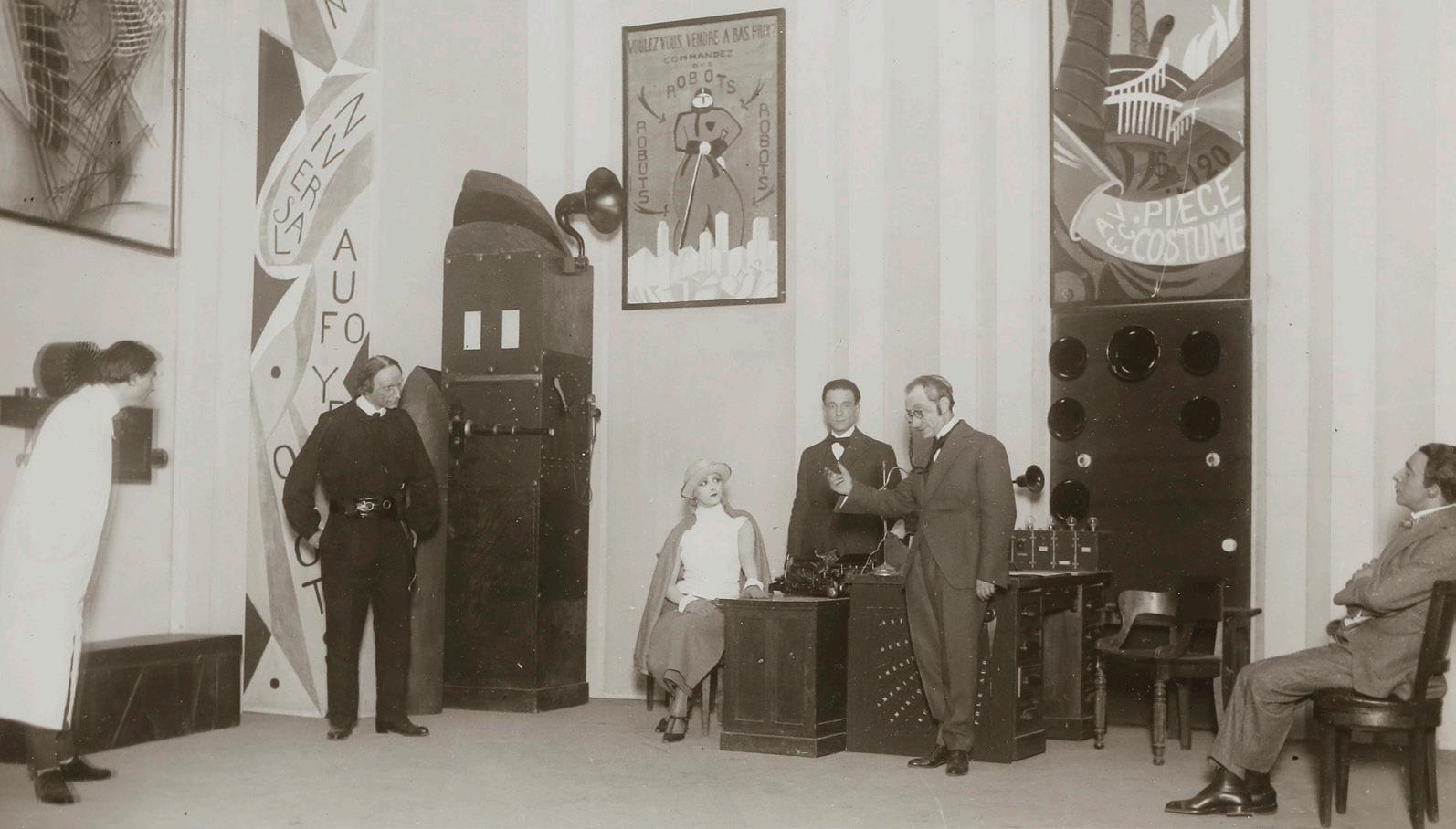
“R.U.R.” performed in France in 1924. (WIKIMEDIA COMMONS)
The play, first performed in Prague, is famous for introducing the word “robot” into the English lexicon, from the Czech robotka (its root, rob or rab, also means slave). Our reviewer enjoyed the San Francisco production.
The play, first performed in Prague, is famous for introducing the word “robot” into the English lexicon, from the Czech robotka (its root, rob or rab, also means slave). Our reviewer enjoyed the San Francisco production.
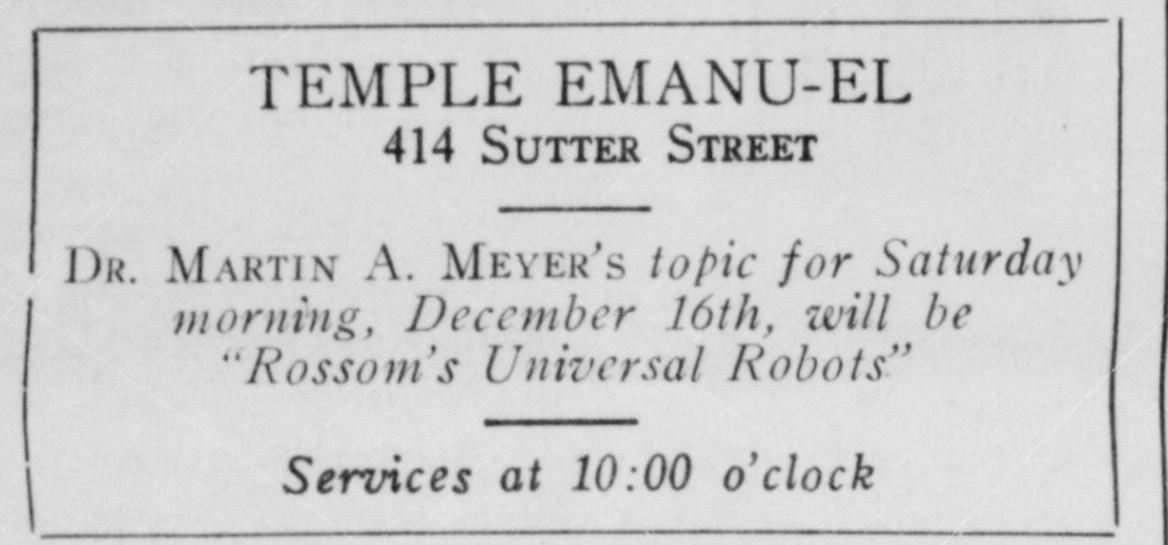
In 1922, congregants learned about robots. (J. ARCHIVES)
“The play was used as a powerful medium of satire without losing its dramatic force,” Daniel W. Hone wrote about the San Francisco rendition. “This play has since served as a topic for sermons and lectures, and the San Francisco public owes an obligation to the Community Players for having given them a dramatic presentation which otherwise would have been lost to this city.”
“The play was used as a powerful medium of satire without losing its dramatic force,” Daniel W. Hone wrote about the San Francisco rendition. “This play has since served as a topic for sermons and lectures, and the San Francisco public owes an obligation to the Community Players for having given them a dramatic presentation which otherwise would have been lost to this city.”
Its themes hit close to home today as we ponder the rise of powerful artificial intelligence networks.
Its themes hit close to home today as we ponder the rise of powerful artificial intelligence networks.
“R.U.R.” takes aim at exactly the kinds of questions we’re addressing with the rise of AI. What is consciousness? What is intelligence? And what are the risks of creating
“R.U.R.” takes aim at exactly the kinds of questions we’re addressing with the rise of AI. What is consciousness? What is intelligence? And what are the risks of creating
Helena. No defiance?
Hallemeier. Defiance? I don’t know. Only rarely, from time to time.
Helena. What happens then?
What, indeed.
In a 2024 article in the online tech site
Debrief, writer Tim McMillan discusses the idea by some experts that “once artificial superintelligence systems surpass biological intelligence, they could evolve beyond human control, leading to consequences not aligned with human interests or ethics.”
Čapek would have been on board. In the
play, the risks result in death and destruction for people as the robots assume control of their own destiny.
The play is set in the future on the island where robots are manufactured. A naive young woman, Helena, arrives with a secret mission to help the robots, but ends up falling for the ruthless head of the factory. They get married, but their life is torn apart when the robots end up throwing off their figurative shackles and rebelling. Pretty much everybody dies.
Depressing, sure. But it’s also darkly humorous.
Helena. Doctor, has Radius a soul?
Dr. Gall He’s got something nasty. As a critique of the then-modern concept of ultimate workplace efficiency, “R.U.R.” is thought-provoking in how it looks at the long-term ramifications of building the most brilliant, useful and efficient tool.
Dr. Gall. All the universities are sending in long petitions to restrict their production. Otherwise, they say, mankind will become extinct through lack of fertility. But the R. U. R. shareholders, of course, won’t hear of it. All the governments, on the other hand, are clamoring for an increase in production, to raise the standards of their armies. And all the manufacturers in the world are ordering Robots like mad.
First built as factory workers, robots are eventually sold as soldiers. But they turn on their owners.
Helena. (Rises and crosses and takes paper) It can’t be. Let me see. They have assassinated over seven hundred thousand citizens, evidently at the order of their commander.
nana. (Spelling out the words from other paper she has picked up from the floor) “Re-bell-ion in Ma-drid a-gainst the gov-ern-ment. Rob-ot in-fant-ry fires on the crowd. Nine thou-sand killed and wounded.”
Helena feels enduring sympathy for the robots, no matter how many times she’s told they are not human. Yet she, too, falls into the trap of failing to understand them.
In one conversation with a robot who has deviated violently from his assigned task, she pleads to understand why a robot that has been given the option to read literature and understand the human experience wouldn’t love humans back.
Helena. Do you hate us? Why?
raDius. You are not as strong as the Robots. You are not as skillful as the Robots. The Robots can do everything. You only give orders. You do nothing but talk.
Helena. But someone must give orders. raDius. I don’t want a master. I know everything for myself.
Helena. Radius! Doctor Gall gave you a better brain than the rest, better than ours. You are the only one of the Robots that understands perfectly. That’s why I had you put into the library, so that you could read everything, understand everything, and then, oh, Radius — I wanted you to show the whole world that the Robots are our equals. That’s what I wanted of you.
raDius. I don’t want a master. I want to be master over others.
Helena. I’m sure they’d put you in charge of many Robots. You would be a teacher of the Robots.
raDius. I want to be master over people. Helena. You are mad.
raDius. Then send me to the stamping mill.
Seeing as that’s where the robots are ground up to biological mush and rebuilt, this makes Radius upset — except robots aren’t supposed to have feelings. So are robots “alive,” after all?
It turns out that the robots have revolted because the improvements made allowed them to reach a state of something like humanity, or perhaps superhumanity. Once all of the humans are dead, it’s clear something like love has blossomed between two robots. Maybe humanity is over, but life goes on.
Dr. Gall. I was transforming them into human beings. In certain respects they’re already above us. They’re stronger than we are.
Fabry. And what’s that got to do with the revolt of the Robots?
Dr. Gall Everything, in my opinion. They’ve ceased to be machines. They’re already aware of their superiority, and they hate us as they hate everything human.
Domin. Perhaps we’re only phantoms. n




